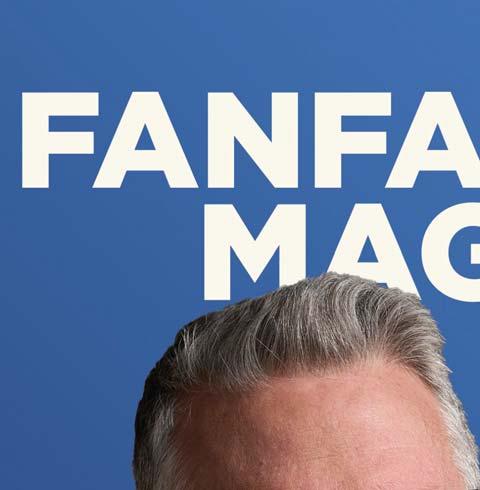
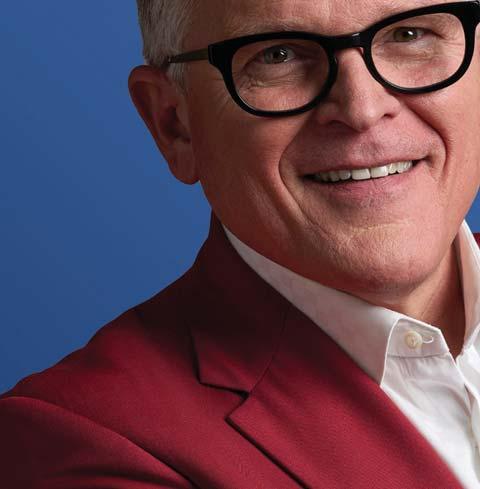





MAR / APR 2024
American Mosaic
The


Oxford proudly supports the Cincinnati Symphony Orchestra. ATLANTA CHICAGO CINCINNATI GRAND RAPIDS INDIANAPOLIS MINNEAPOLIS PALM BEACH 513.246.0800 WWW.OFGLTD.COM/CSO Oxford is independent and unbiased — and always will be. We are committed to providing multi-generational estate planning advice and forward-thinking investment solutions to families and institutions. Oxford is an investment advisor registered with the U.S. Securities and Exchange Commission. Registration does not imply a certain level of skill or training.
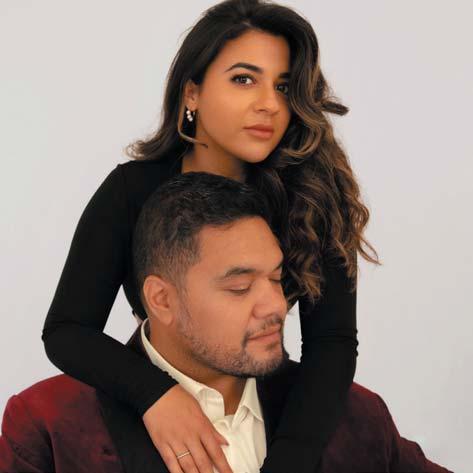
AMINA EDRIS CINCINNATI DEBUT
PENE PATI TENOR
AMINA EDRIS SOPRANO
ROBERT MOLLICONE PIANO
Sunday, April 21, 2024 • 3 PM
Memorial Hall
1225 Elm Street • OTR

PENE PATI
“The most exceptional tenor discovery of the last decade.” —Opéra-Online
“He proved to us from the first moment that he has everything to be a tenor we will continue to hear about the next twenty years.” —Le Devoir
•Making his third appearance with Matinée Musicale Cincinnati by popular demand
•International Opera Awards 2022 Reader’s Choice Award
•First Prize winner at the 2014 Montserrat Caballé International Aria Competition
•In 2012 won the coveted Joan Sutherland and Richard Bonynge ‘Bel Canto’ Award
•Performed title role of Romeo in Charles Gounod’s Romeo and Juliet at 2019 opening night at San Francisco Opera
Tickets:
MemorialHallOTR.org or 513-977-8838
AMINA EDRIS
“A magnetic presence” —Opera News
“… agile, distinctive voice with a warm middle register and glittering high notes.” —Classical Voice
•In 2018 was awarded both First Prize (female singer) and the Audience Prize at the Inaugural Concours Bordeaux Médoc Lyrique
•Won the Deborah Riedel award at the Joan Sutherland and Richard Bonynge Bel Canto Competition
•Won the prestigious Sydney Eisteddfod McDonald’s Operatic Aria Competition and the Dame Heather Begg Award
•Performed title role in world premiere of John Adams’ Antony and Cleopatra at opening of San Francisco Opera’s centennial season
MatineeMusic aleCincinnati.org 1 1 0 t h R e c i t a l S e a s o n F i n a l e P r e s e n t s Tw o E m e r g i n g S t a r s o f t h e O p e r a Wo r l d !
CONTENTS


10
MARCH/ APRIL 2024

6 Directors & Advisors
7 Welcome from the President & CEO
8 Upcoming Concerts
10 Louis Langrée, Part IV: The Sound of the Orchestra
14 CSO Feature: Symphonic Symbolism
16 Pops Feature: The American Mosaic
22 Spotlight: Why We Give
25 Spotlight: Being Concertmaster is Much More Than “Give Me an A”
28 Special Feature: New Energy at the May Festival
30 Orchestra Roster
31 Artistic Leadership: Louis Langrée, John Morris Russell
32 Guest Artist Biographies
44 Concerts and CSO Program Notes: Mar. 3: CSO/CSYO Side-by-Side Concert | Mar. 8–10: CSO Copland’s Appalachian Spring| Mar. 15–17: Pops The Doo Wop Project | Mar. 21: Winstead Chamber Series “The Art of the Trio: Brahms & Tchaikovsky”| Mar. 23–24: CSO Heroic Strauss & Melodic Mozart | Mar. 26: Pops Ben Rector & Cody Fry: Live with the Cincinnati Pops| Mar. 29–30: CSO Tchaikovsky & Nielsen | Apr. 12–14: Pops The Dream of America
72 Financial Support
80 Administration
ON THE COVER: Cincinnati Pops Conductor John Morris Russell. Credit: Roger Mastroianni


Part IV of our seasonlong focus on Louis Langrée and his CSO tenure, The Sound of the Orchestra, examines how he has shaped the Orchestra’s sound through the musicians he has appointed (more than a third of those on stage today) and his focus on collaborative relationships with the Orchestra musicians, guest artists and composers, pp. 10–13.
16

The Dream of America and the idea of the American “mosaic” are behind the Cincinnati Pops’ April 12–14 concerts, which open with local performers representing international communities and feature Peter Boyer’s poignant celebration of the American immigrant experience, Ellis Island: The Dream of America. JMR shares his thoughts on the American mosaic and Boyer discusses the inspiring immigrant stories behind Ellis Island, pp. 16–21.
25


The role of concertmaster is so much more than what audiences see during CSO and Pops concerts. Read pp. 25–27 to learn more about this key orchestra position and the unseen “extensive, intense and ongoing” work that begins months before performance.

All contents © 2023–24. Contents cannot be reproduced in any manner, whole or in part, without written permission from the Cincinnati Symphony Orchestra and Cincinnati Pops.
2 | 2023–24 SEASON














A proud sponsor of the musical arts























Coming This Spring
Imani Winds
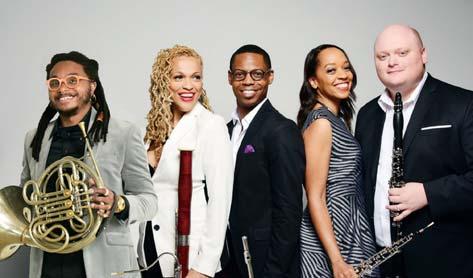
Randall Goosby

Tickets: $40 — CincyChamber.org
“Each member is a virtuoso…dazzling ensemble playing.”
—Washington Post
“Imani Winds blows the room off.” NPR
2-time GRAMMY nominee
Sunday, March 10, 2024 • 4:00 p.m. New Prospect Baptist Church
Tuesday, March 12, 2024 • 7:30 p.m.
Memorial Hall
“Randall looks back to a golden age of violin greats.”
Gramophone
“Randall Goosby has everything.” NPR
“The important thing in any musician is his sound. And his is beautiful.”
Itzhak Perlman
2023 CSO soloist
Program includes Beethoven’s Violin Sonata in A, Op. 47, “Bridgetower”
Sunday, April 7, 2024 • 4:00 p.m. Corinthian Baptist Church
Tuesday, April 9, 2024 • 7:30 p.m.
Memorial Hall
C H A M B E R M U S I C C I N C I N N AT I CHAMBER MUSIC CINCINNATI
U S I C C I N C I N N AT I
Coming in 2024-2025
FIVE FOR 95 — OUR 95 TH SEASON
Takács Quartet
“One of the ten greatest string quartet
BBC Music Magazine
Gramophone
Tuesday, September 24, 2024 • 7:30 p.m.
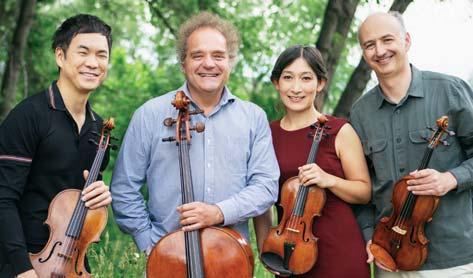
Cuarteto Casals
“The immediately striking thing is the sound
Gramophone
Wednesday, November 13, 2024 • 7:30 p.m.
Isidore Quartet and Jeremy Denk
New York Times
“The Isidore’s total commitment to the
The Strad
Thursday, March 6, 2025 • 7:30 p.m.
Sheku Kanneh-Mason, cello
Isata Kanneh-Mason, piano
“… the sort of lofty emotional peak you’d
Gramophone
Tuesday, December 10, 2024 • 7:30 p.m.
Jerusalem Quartet
New York Times
Thursday, May 1, 2025 • 7:30 p.m.
The Guardian
concerts at Memorial Hall. Subscriptions $125 on sale now at CincyChamber.org or call Memorial Hall at 513-977-8838. Single tickets on sale this summer. Students under 18 admitted free, 18 and over $10, if available, on day of performance.
All
Photo: AmandaTipton
BOARD OF DIRECTORS
Officers
Dianne Rosenberg, Chair
Robert W. McDonald, Immediate Past Chair
CINCINNATI SYMPHONY
ORCHESTRA & CINCINNATI POPS
Music Hall, 1241 Elm Street, Cincinnati, OH 45202
Box Office: 513.381.3300 hello@cincinnatisymphony.org
Group Sales: 513.864.0196 groupsales@cincinnatisymphony.org
TTY/TDD: Use TTY/TDD Relay Service 7-1-1
cincinnatisymphony.org cincinnatipops.org
FANFARE MAGAZINE STAFF:
Managing Editor
Tyler Secor
Senior Editor/Layout
Teri McKibben
Graphic Design
Stephanie Lazorchak
CINCINNATIMAGAZINE: Advertising and Publishing Partners for Fanfare Magazine
Publisher
Ivy Bayer
Production Director & IT Systems
Administrator
Vu Luong
Advertising Designer
Sophie Kallis
Account Representatives
Laura Bowling, Maggie Wint Goecke, Hilary Linnenberg, Chris Ohmer, Julie Poyer, Joe Hoffecker
Operations Director
Missy Beiting
Business Coordinator
Erica Birkle
Advertising and Business Offices
1818 Race Street, Suite 301 Cincinnati, OH 45202 | 513.421.4300
Subscriptions: 1.800.846.4333 cincinnatimagazine.com

You are welcome to take this copy of Fanfare Magazine home with you as a souvenir of your concert experience. Alternatively, please share it with a friend or leave it with an usher for recycling. Thank you!
Sue McPartlin, Treasurer and Vice-Chair of Finance
Gerron McKnight, Esq., Secretary
Timothy Giglio and Kari Ullman, Vice-Chairs of Volunteerism
Anne E. Mulder, Vice-Chair of Community Engagement
Charla B. Weiss, Vice-Chair of Institutional Advancement
Melanie Healey, Vice-Chair of Leadership Development
Directors
Dorie Akers
Heather Apple
Michael P. Bergan
Evin Blomberg
Kate C. Brown
Ralph P. Brown, DVM
Trish Bryan*
Otto M. Budig, Jr.*
Andria Carter
Melanie M. Chavez
Andrea Costa
Adrian Cunningham
Gabe Davis
Dr. Maria Espinola
Mrs. Charles Fleischmann III*
Lawrence Hamby
Delores Hargrove-Young
Francie S. Hiltz*
Joseph W. Hirschhorn*
Lisa Diane Kelly
Edna Keown
Florence Koetters
Jonathan Kregor
Peter E. Landgren
John Lanni
Shannon Lawson
Spencer Liles*
Will Lindner
Holly Mazzocca
James P. Minutolo
Laura Mitchell
Lisa Lennon Norman
Bradford E. Phillips, III
Aik Khai Pung
James B. Reynolds*
Jack Rouse*
Lisa M. Sampson
Patrick Schleker
Valarie Sheppard
Stephanie A. Smith
Albert Smitherman
David R. Valz
Randolph L. Wadsworth, Jr.* *Director Emeritus
BOARD OF DIRECTORS DIVERSITY, EQUITY & INCLUSION (DE&I) COMMITTEE, COMMUNITY ADVISORY COUNCIL and MULTICULTURAL AWARENESS COUNCIL
In May 2020, the CSO created a 10-point DEI Action Plan to prioritize the Orchestra’s work to better represent and serve the entirety of the Cincinnati community. Action items included the continued amplification of BIPOC artists on stage and in education programs; a review of hiring and compensation practices; organization-wide implicit bias training; increased mentorship opportunities; and the creation of a standing CSO Community Advisory Council (CAC) to strengthen ties to the community. We thank our many partners on the CAC and on our standing DE&I committee who are helping us with this important work.
CSO Board of Directors
DE&I Committee
Charla B. Weiss, Lead
Heather Apple
Ralph Brown
Adrian Cunningham
Maria Espinola
Delores Hargrove-Young
Lisa Kelly
David Kirk*
Gerron McKnight
Lisa Lennon Norman
Jack Rouse
Lisa Sampson
Stephanie Smith
*Community Volunteer
Primary Staff Liaison: Harold Brown
Other Staff: Kyle Wynk-Sivashankar
Community Advisory Council
Desire Bennett, Design Impact
Daniel Betts, Cincinnati Recreation Commission
Jackie Taggart Boyd, Cincinnati Convention and Visitors Bureau/CincyUSA
Alexis Kidd, Seven Hills Neighborhood Houses
Joele Newman, Peaslee Neighborhood Center
Candra Reeves, Urban League of Greater Southwestern Ohio
Leslie Rich, Ioby
John P. Scott, Community Engagement Partners
Billy Thomas, Cincy Nice
Staff: Key Crooms
Multicultural Awareness Council
Susan Carlson
Andria Carter
Piper Davis
Kori Hill
Alverna Jenkins
Beverley Lamb
Kick Lee
Quiera Levy-Smith
RaeNosa Onwumelu
Yemi Oyediran
Aurelia “Candie” Simmons
Nakia Smith
Daphney Thomas
Staff: Key Crooms

6 | 2023–24 SEASON


Dear Friends of Music,
On stage, in the community and through the stories that touch our lives, the Orchestra continually seeks to share inspiration with our entire Cincinnati community. As an orchestra, our artistic world is the quality of the sound we create, which is highly correlated to the musicians hired. In Louis Langrée’s decade-plus tenure as music director, he has had the unique opportunity to appoint 32 musicians, more than a third of our current ensemble. Hiring new musicians is a necessary part of any orchestra, but for ours, the sheer number of appointments in a relatively condensed period of time under Louis’ leadership is noteworthy. As you will read in Ken Smith’s story, these musicians arrived at a transformative time; together, they have and will undoubtedly shape the sound of our Orchestra for decades to come, and we are all witness to this special moment in the history of the CSO.
On stage, in the community and through the stories that touch our lives, the Orchestra continually seeks to share inspiration with our entire Cincinnati community.
Not all of the 13 music directors of the CSO have had the opportunity to hire a concertmaster, the “second-in-command to the conductor.” Louis’ tenure saw the appointment of Stefani Matsuo as the first female concertmaster of the Orchestra. From the audience’s perspective, they see the concertmaster stand at the beginning of each performance to cue the tuning of the orchestra, shake the conductor’s hand and, of course, hear the powerhouse violin playing that made Stefani the hands-down choice for concertmaster. But the job is so much more than what happens on stage at a concert. Anne Arenstein speaks with Stefani and Associate Concertmaster Felicity James to shed light on the responsibilities of this key leadership position—on and off the stage.
Our musicians are not just performers on the Music Hall stage; they are threads within the larger tapestry that is Cincinnati—they are parents, restaurant lovers, museum-goers, sports fans (Who Dey!), nature aficionados…all of these things and more within the Greater Cincinnati community. This April, our Orchestra shares the stage with representatives of Cincinnati’s vibrant international communities in the Pops program The Dream of America, centered on composer Peter Boyer’s poignant Ellis Island: The Dream of America. The multimedia program celebrates the historic American immigrant experience and features images from the Ellis Island archives alongside performers sharing real-life stories of those arriving to America. Writer Scot Buzza talks with Peter Boyer about the inspirations and crafting of Ellis Island: The Dream of America and Cincinnati’s history of immigration. Tyler Secor speaks with Cincinnati Pops Conductor John Morris Russell about his inspiration for this program, which opens with Cincinnati’s diverse communities and dance groups— Donauschwaben Schuhplattlers, Greater Cincinnati Indian Community Choir, Cincinnati Baila! Dance Academy, Ijo-Ugo Performing Arts Company, McGing Irish Dancers and Alliance of Chinese Culture & Arts—presenting cultural dance and music traditions from around the world alongside music performed by the Pops.
For its 128 years, the CSO has been generously supported by the donors who love and appreciate their Orchestra. In “Why We Give,” Kit Gladieux speaks with two of our current donors: one whose family was part of the formation of the CSO and the other whose story includes “dotting the ‘i.’”
Lastly, on behalf of our musicians, board members, staff, volunteers and more, we thank you for joining us for our programs. Your enthusiasm for what we do sustains us, and we are delighted to share musical inspirations with you.

 Jonathan Martin
Jonathan Martin
WELCOME FROM THE PRESIDENT AND CEO
©Roger Mastroianni
MUSIC TO MOVE YOU
COMING UP AT MUSIC HALL
APR 2024
CLASSICAL ROOTS
APR 19 FRI 7:30 PM*
John Morris Russell conductor
Classical Roots Community Choir
Performance Sponsor: JRH Consultants
HADELICH & HOLLAND
APR 20 & 21 SAT 7:30 PM; SUN 2 PM*
Louis Langrée conductor
Augustin Hadelich violin
Jonathan BaileyHOLLAND New Work (CSO Co-Commission, CSO Premiere)
SCHOENBERG Verklärte Nacht (“Transfigured Night”)
BRAHMS Violin Concerto
Presenting Sponsor: Cincinnati Symphony Club
Concert Sponsor: Johnson Investment Counsel
Winstead Chamber Series
SPOTLIGHT ON WINDS & STRINGS
APR 25 THU 7:30 PM Wilks Studio in Music Hall
SCHULHOFF Concertino for Flute, Viola and Double Bass
REINECKE Clarinet Trio in A Minor
KHACHATURIAN Clarinet Trio
SCHUMANN String Quartet in A Minor
DVOŘÁK SYMPHONY NO. 8
APR 26 & 27 FRI & SAT 7:30 PM
Katharina Wincor conductor
Sheku Kanneh-Mason cello
SHOSTAKOVICH Festive Overture
SHOSTAKOVICH Cello Concerto No. 1
DVOŘÁK Symphony No. 8
CSYO CONCERT ORCHESTRA: WALK ABOUTS
APR 28 SUN 2 PM
Felipe Morales-Torres conductor
CSYO Concert Orchestra
Gabriela Lena FRANK Leyendas for String Orchestra
COPLAND An Outdoor Overture
Michael MARKOWSKI City Trees
GROFÉ Grand Canyon Suite
CSYO PHILHARMONIC: SPARTACUS
APR 28 SUN 7 PM
Samuel Lee conductor
Vivian Chang violin
CSYO Philharmonic Orchestra
PROKOFIEV Romeo & Juliet
SARASATE Carmen Fantasy
KHACHATURIAN Spartacus Suite No. 2
MAY 2024
CSO Proof RÉPONSE
MAY3 FRI8 PM
Music Hall Ballroom
Louis Langrée conductor
Bryce Dessner composer & performer
Katia and Marielle Labèque piano
Cincinnati Symphony Orchestra
CSO Proof is supported by Irwin and Melinda Simon
Show Sponsor: KMK Law
BEETHOVEN 7 & DESSNER PREMIERES
MAY 3 & 4 FRI 11 AM; SAT 7:30 PM
Louis Langrée conductor
Alice Sara Ott piano
Bryce DESSNER Mari
Bryce DESSNER Piano Concerto (Co-Commission, U.S. Premiere)
BEETHOVEN Symphony No. 7
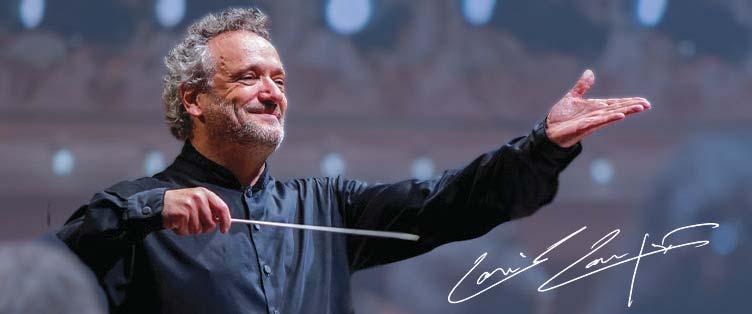
SEASON FINALE
LOUIS' GRAND FINALE
MAY 10-12 FRI & SAT 7:30 PM*; SUN 2 PM
Louis Langrée conductor
Latonia Moore soprano
BEETHOVEN Leonore Overture No. 2
Anthony DAVIS New Orchestral Song Cycle (CSO Co-Commission, World Premiere)
DUKAS The Sorcerer’s Apprentice
RAVEL Daphnis et Chloé Suite No. 2
Presenting Sponsor: HORAN Wealth
Encore Sponsor: Messer Construction
Show Sponsor: Thompson Hine
Louis Langrée Music Director
*



FOR A FULL LIST OF UPCOMING EVENTS AND ADDITIONAL INFO VISIT CINCINNATISYMPHONY.ORG
• John Morris Russell
Cincinnati Pops Conductor
For more info on our livestreams visit cincinnatisymphony.org/ live
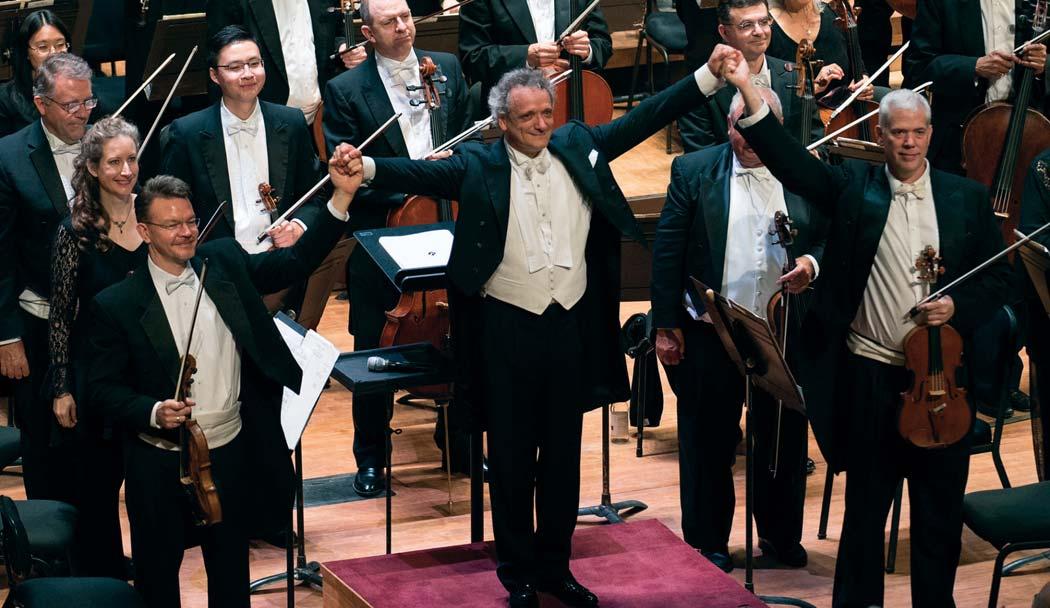
LOUIS LANGRÉE, Part IV
The Sound of the Orchestra
by KEN SMITH
A particularly notable component of Langrée’s legacy
has
been the current sound of the Orchestra itself.
With Louis Langrée’s tenure as Music Director drawing to a close, audiences and musicians alike have pondered the past decade of life at the Cincinnati Symphony Orchestra. One of the most vivid changes, many agree, is still evident even when Langrée is nowhere near the podium. Apart from the world premieres and partnerships with other creative artists, a particularly notable component of Langrée’s legacy at the CSO has been the current sound of the Orchestra itself.
Former concertmaster Tim Lees—hired by former music director Paavo Järvi and continuing with Langrée for more than half his tenure—literally heard those changes develop from the front lines. “Paavo had a pretty vivid idea of what he wanted, but he was super demanding and ruled with an iron fist,” says Lees. “Louis came in and immediately talked about sound and color.”
CSO President & CEO Jonathan Martin puts it even more succinctly. “Paavo had a very muscular approach,” he says. “Louis uses pastels.”
For Martin, the change in musical values has been expressed most vividly through dynamics. “It’s much more important for an orchestra to play softly than it is to play loudly, and Louis and the Orchestra have spent an inordinate amount of time perfecting that,” he says. “You simply have more emotional impact with a whisper.”
Langrée doesn’t exactly disagree, but his ears have been focused on a bigger picture. Midway through putting his stamp on the CSO sound, the Orchestra’s home went through a drastic change: a 16-month, $143 million renovation that greatly reconfigured the stage and reduced audience capacity. “The new Music Hall brought a new size, a new acoustic, a new
Louis Langrée, taking bows with then-Concertmaster Tim Lees (left) and Principal Viola Christian Colberg, after the opening concert of the 2017–18 season. Credit: AJ Waltz
10 | 2023–24 SEASON

range of color and dynamic possibilities, a whole new volume of sound,” Langrée says. “Before, you had to actually project, to give each attack an extra kick. Suddenly, we had a smaller stage, with risers like an amphitheater to help carry the sound. One brass player told me that, since he doesn’t have to push so hard anymore, he can now focus on the subtleties.”
The new Music Hall required not just a new collective approach from the Orchestra but also a different type of musician coming in. “From the beginning, Louis had this—not respect, exactly, more of a reliance—on individual musicians,” says Lees. “He’d never direct people to play a certain way. Paavo would come in and say, ‘This is the way we’re doing it,’ and he’d get great results. Louis would let the players take charge.”

But after the Music Hall renovation, Langrée doubled down in looking for musicians with a collaborative mindset. Stefani Matsuo, who moved through the ranks from second-violin section player to become the CSO’s current concertmaster (replacing Lees when he left the position in 2019), notes the differences in her auditions. “On a basic level, the required repertory is different for a title chair audition than it is for a section player,” she says. “But also, the playing quality they were looking for was quite different.
The second time around, there was a lot more room to show my interpretation, rather than just blending into a section.”
Part of that growing focus on individualism came from the sheer breadth of the Orchestra’s repertory. Langrée may have come to the CSO with a reputation for core classics—being music director of Lincoln Center’s now-defunct Mostly Mozart Festival certainly helped in that regard— but he quickly revealed his inclinations to explore lesser-known works and champion living composers. “Louis is quite open and fearless in
 Louis Langrée works with composer-pianist Courtney Bryan in rehearsal for the world premiere of her piano concerto, House of Pianos, May 2023. Credit: Charlie Balcom
Louis Langrée leads the CSO in Mozart’s Violin Concerto No. 4, with Stefani Matsuo as soloist.
Louis Langrée works with composer-pianist Courtney Bryan in rehearsal for the world premiere of her piano concerto, House of Pianos, May 2023. Credit: Charlie Balcom
Louis Langrée leads the CSO in Mozart’s Violin Concerto No. 4, with Stefani Matsuo as soloist.
Fanfare Magazine | 11
LOUIS LANGRÉE, Part IV
LOUIS LANGRÉE, Part IV
the projects he’s willing to tackle,” says Matsuo. “One week we’re playing completely standard pieces and the next it’s all new music with the composer standing in front of us making changes to the piece in rehearsal. You need to be as well-rounded as possible, and always on your toes.”
Langrée’s continual search for distinct musical personalities (“we don’t want machines,” he says) might seem at odds with the CSO’s policy of blind auditions, where musicians sit behind a curtain with no verbal interaction with the listening panel. But those challenges have simply made Langrée’s process more intense, his questions more pointed.
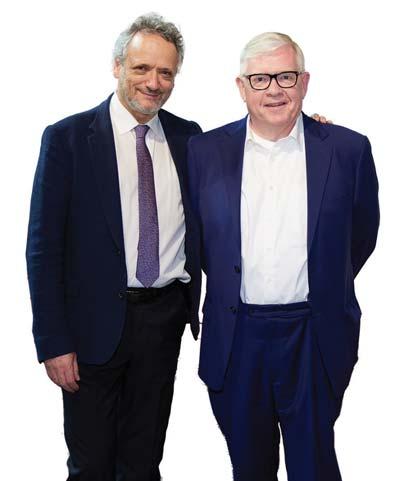
would contribute the most to the fabric of the entire Orchestra.
And he’s always very specific. He wants to see everything someone can do in 20 minutes.” [See sidebar for what Langrée looks for in an audition.]

“Louis has always thought deeply about the people he was hiring,” Lees adds. “In orchestra auditions, the music director always turns up at the end, but sometimes much earlier. Louis would usually come midway and has been particularly focused on the flexibility of each player. He looks not just for great technicians but for the people who
“If you want to make a list of Louis’ accomplishments, right at the top is that he’s hired more than a third of the musicians on this stage,” Martin maintains. “I’ve been thinking a lot in the past few years about what sets Louis apart, and I think it comes down to integrity. There’s really no erence between what he brings to the podium and how he lives his life. There’s the same core integrity whether he’s dealing with the repertory, or his relationships with the community or his musicians on the stage. And he brings all of that core integrity directly into his hiring decisions.
“So really, if you want to talk about Louis’ legacy, just take a look around the stage,” Martin continues. “That’s another 50-year legacy right there.”
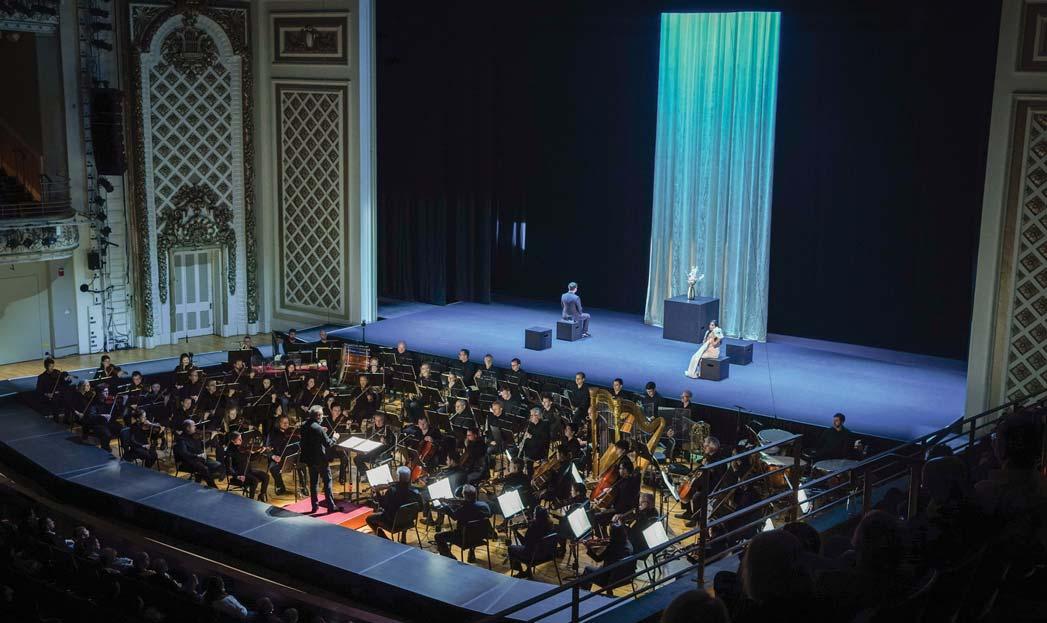
12 | 2023–24 SEASON
Above: Louis Langrée and CSO President & CEO Jonathan Martin. Below: Louis Langrée leads the CSO in a production of Ambroise Thomas’ Hamlet, November 2023. Credit: Mark Lyons
SIDEBAR: Louis Langrée, Part IV
20 Minutes with Louis Langrée
The CSO’s outgoing music director speaks with Ken Smith about what he looks for in auditions
by KEN SMITH
You’ve often talked about the ideal symphonic repertory being a mixture of old and new, but now you say that about the players as well.
Of course, tradition is very important. The Cincinnati Symphony Orchestra has their own DNA, a pride of ownership in their particular style. At the same time—like any institution—they need fresh blood, a rotation where a new generation learns from the veterans while also bringing something unique to the table.
The basis is still there, but the sound continually evolves.
Is there an ideal balance, whether in age or experience or culture?
It’s not a theoretical thing. You can have older players who are still super enthusiastic, eager to discover new ideas, and you can also have young players who feel this is how they’ve played a piece and they don’t want to change. So it’s not objective. It depends both on a particular orchestra’s tradition and its recent history. A big change for the CSO was with Music Hall’s recent renovation and the resulting new possibilities in sound.

So what do you look for in new players?
I want to see a musician’s personality. The individual level of playing has increased dramatically in the past decade—not just in Cincinnati but all over the world. Maybe 40 years ago it was enough to hire someone who could simply play the notes with proper clarity, articulation and intonation: a true professional orchestral player. This generation is completely different; they are simply musicians. Depending on the circumstances, they also need to be soloists, chamber music players. What makes the difference is not technique, but charisma and quality of imagination. Some conductors say, “I don’t want to work with musicians who know as much as me.” I’m just the opposite. I want to work with musicians who have an opinion. I have my opinion, too, but the musical process is to add, to confront, to create a musical dialogue. We should inspire each other. The true pleasure of orchestral musicians should be to play differently with every conductor without losing a sense of who they are.

How do you discover in an audition situation if musicians are “your kind of people”?
For example, I’ll take a musical phrase—any phrase—and ask a candidate to play it as if it were from a Bach Passion. Then I’d say, okay, now play it like a Puccini seduction aria. You can quickly gauge a player’s musical culture; do they have a sense of different musical styles, different articulations, different uses of vibrato. But you also get a sense of their musical imagination. The same raw phrase can take on such different meanings. Also, in the super-final round, I have them play excerpts from the repertoire to see how quickly they can blend with other musicians. Recently, I had a tuba and bass trombone play a phrase in octaves, first with the tuba determining the phrasing and tone color, then a second time with the trombone in the lead, then a third time where they had to find a mix of the two.
How many audition rounds are there?
There’s the preliminary round and semi-finals, then I come for the finals and super-finals. By then, we know if musicians have a personality. We don’t want machines. It used to be, the very best orchestras in Europe had players with the best technique. Now, the difference is a higher level of energy, of courage and imagination. They don’t wait for the conductor to tell them how to play. They want the conductor to inspire them to play differently than they did before.
Louis Langrée and CSO principals discuss passages of Guillaume Connesson’s Les belles heures in preparation for the oboe concerto’s May 2022 world premiere. Credit: Charlie Balcom
Fanfare Magazine | 13
Louis Langrée works with the first violins to refine a section of that week’s featured work. Credit: Mark Lyons

Symphonic Symbolism
Richard Strauss took representational music to new heights with his instrumental tone poems
by HANNAH EDGAR

Leave lofty storylines to the Richards—Wagner and Strauss, that is. The latter brought the representative specificity of the former’s operas to concert music, and in doing so brought the tone poem genre to new heights. Somehow, even without text, Strauss’ tone poems don’t mince words. His Ein Heldenleben (“A Hero’s Life”), heard on Sir Mark Elder’s CSO program (March 23 & 24), was, along with Symphonia Domestica, his most autobiographical tone poem, though Strauss denied any parallels between the titular hero and himself. He wrote both shortly before he decisively turned his attention to opera, around the turn of the 20th century.
“One feels often that [Strauss] is on the threshold of real greatness,” Elder told Fanfare. “There are times when, I feel, he touches it. He was like a magician with the orchestra. But like he said in London when he was an old man, ‘I’m not a first-class composer. I am a first-class second-class composer.’”
The composer against whom Strauss is most often compared, usually unflatteringly, is, of course, his idol Wagner. Strauss came of age at a time when German Romanticism split into aesthetic factions represented by Johannes Brahms and Clara Schumann (traditionalists) and Richard Wagner and Franz Liszt (radicals). Although the totality of musical creativity in the second half of the 19th century was hardly so black and white, the period’s bitter ideological fissures were very, very real. Strauss’ father, a star French horn player in Munich’s court
orchestra, loathed Wagner’s music so completely that he refused to stand during a moment of silence for the recently departed composer, despite having played principal horn for several of Wagner’s premieres. The teenaged Strauss attended one of them, Parsifal, in Bayreuth, at his father’s begrudging invitation. He left transformed. Alas, Wagner’s music was verboten in the family home, so Strauss had to develop his mature, unrepentantly Wagnerian harmonic dialect by studying the scores in secret.
Like Strauss, Elder had his first transformative encounter with Wagner’s music as a teenager, playing the overture to Tannhäuser—the very same overture he has programmed for his CSO concerts—with a youth orchestra as a 14-yearold bassoonist.
“I can never forget the experience of being in that noise, right at the beginning,” he says.
Now, having conducted the entire opera over the course of his career, Elder feels any performance of the overture must carry the symbolic and emotional weight of the entire narrative. Prefiguring the schism to come in German music, Wagner’s titular character is torn between the divine, represented by Bach-like chorale writing, and the sensuous, represented by lush chromaticism.
“That’s what I’m here for: to make the character—the inner narrative—of the music potent, and not stop until it’s there,” Elder says. “You have to interest yourself in not only the meaning of the text but also the inner meaning. Music isn’t very good at saying, ‘These are
CSO FEATURE
14 | 2023–24 SEASON
Richard Strauss, 1898. Credit Fritz Erler

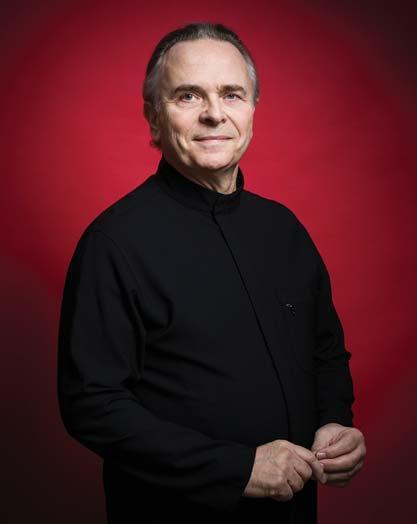
mountains and a storm is coming.’ What music can do, vis-à-vis the Alpine Symphony, is to portray one’s feeling about a storm coming. That’s something wider and deeper.”
An oft-cited example from Heldenleben: the ominous semitone motive spelling out the initials of one of Strauss’ most vicious nemeses, the Viennese music critic Doktor Dehring. The gesture, for two grumbling tubas, is set in parallel fifths—a brazen affront to the conventional rules of harmony Dehring harped upon in his reviews.
Unsurprisingly, critics found the entire tone poem repugnant. Audiences have been kinder: Ein Heldenleben has remained in the symphonic repertoire, mostly uninterrupted, ever since. The very section that a reviewer once decried as “a monstrous act of egotism,” in which Strauss floats snippets from his other tone poems atop one another, is Elder’s favorite.

“Well, the music would have to be full of aspiration, wouldn’t it? Full of energy and positive feelings,” he says. “I would want to put in some expression of love for my family. I’m now a grandfather, and I have a four-and-ahalf year old girl who’s wonderful. I would also probably want to express my love and passion for all things Italian. We’ve gone to the same Italian area [Orvieto, 75 miles north of Rome] every summer for 30 years; we rent the same house. It’s miles away from anywhere. I love the food, the wine, the people, the language, the buildings, the paintings and the music. But perhaps there would need to be some sadness, too, because every life, somehow or other, has sadness in it—disappointment, personal tragedies.”

As a brief respite from the teeming, late Romantic worlds of Wagner and Strauss, Elder also leads Mozart’s Piano Concerto No. 17 with Pavel Kolesnikov, the Russian-born, London-based pianist with whom Elder has concertized in recent seasons. How does he see that slotting into his very heroic program?
“He quotes his other works as if he’s hallucinating or half-asleep. It’s as if he’s recalling, ‘Oh, yeah, that was a good one,’” Elder says.
When asked what would be in his Heldenleben—make that Dirigentsleben—Elder is quiet for several seconds, deep in thought.
“Not at all,” he says, with a wry smile. “But that’s fine. I don’t want every program to have only one theme. I want the aspiration of Tannhäuser to be contrasted with this formal perfection, this music that made me laugh when I was young.”
CSO FEATURE: Symphonic Symbolism
Pianist Pavel Kolesnikov, ©Eva Vermandel
At left: Sir Mark Elder, ©BGE. Above: Sir Mark Elder mentions having had his first “transformative” musical encounter while playing the bassoon with a youth orchestra as a teenager. Our own Cincinnati Symphony Youth Orchestra bassoon section (pictured; credit: Mark Lyons) will play alongside their CSO counterparts this March. More details are on p. 44.
Fanfare Magazine | 15
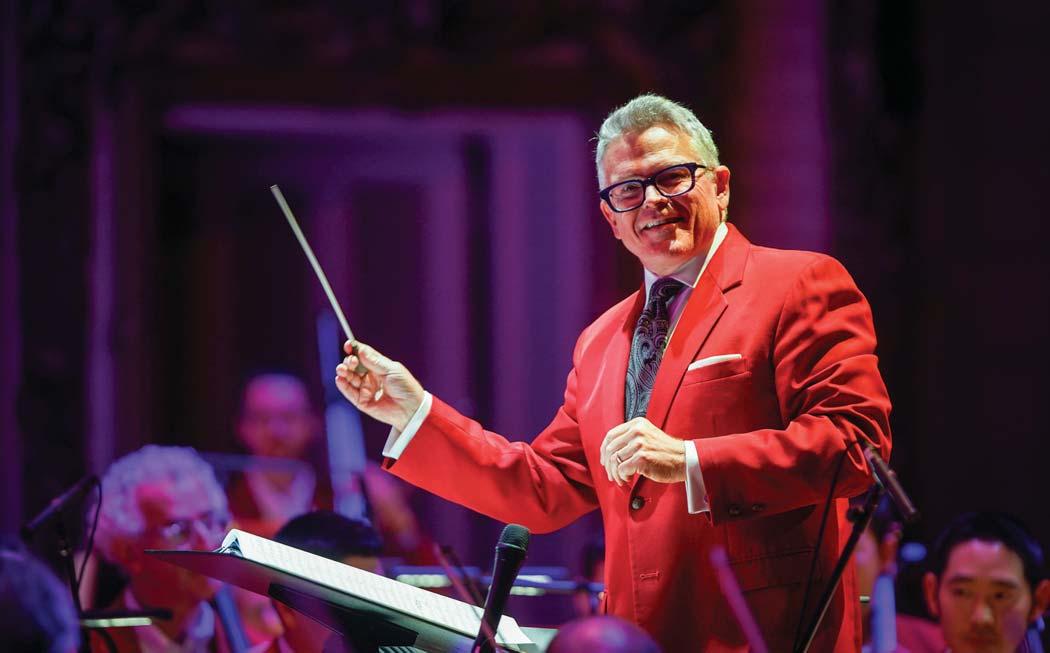
The American Mosaic
PART 1: JMR’s Vision of America
by TYLER M. SECOR


“The Great American Melting Pot” is a common metaphor for the American experience. The term “melting pot” was popularized in the United States by the 1904 play The Melting Pot, written by Israel Zangwill about a Russian Jewish family who fled the 1903 Kishinev Massacre for America, where their hope for all ethnicity to “melt away” could be realized. David, the hero and main character, declares:

There she lies, the great Melting Pot—listen! Can’t you hear the roaring and the bubbling?... What is the glory of Rome and Jerusalem where all nations and races come to worship and look back, compared with the glory of America, where all races and nations come to labour and look forward!
But this melting pot theory doesn’t quite capture John Morris Russell’s view of America. “I don’t see America as a big gray slurry,” JMR firmly states. “We are not one homogeneous population that all dines on the same fast food and jives to the same music.” Instead, JMR believes the American experience is better described as a mosaic.
“Everyone in America brings their own special piece to our great panorama,” explains JMR. “The cultural heritage, experiences and perspectives that people bring with them from around the world are like the pieces of a giant mosaic—each distinctive in color, shape, texture, and each beautiful in and of itself. And yet, when all those individual pieces are put together
POPS FEATURE
Cincinnati Pops Conductor John Morris Russell leads the opening Pops concert of the 2023–24 season. Credit: Mark Lyons
16 | 2023–24 SEASON
A theatre program for The Melting Pot
they create an enormous picture of incredible depth and vibrancy that is so much more than the mere collection of those individual parts. As a mosaic, the American experience becomes so much more multidimensional and nuanced, and expresses the enormous opportunity and promise of a diverse society.”
JMR’s fervor over the idea of the American Mosaic is palpable, infectious and almost evangelistic—not some esoteric ideal but, rather, an idea put into action.
dance in the diaspora. Ijo-Ugo makes its Pops debut in The Dream of America.
McGing Irish Dancers first joined the Pops in 1997 and teaches the rich history of Irish dance to children and adults. McGing was the first school in North America to have a female, male and team world champion, which ranks them as one of the most prestigious dancing programs in the world.
“This program is a love letter…. It tells the story of the immigrant experience through Ellis Island over a century ago and resonates in the amazing cultural mosaic we enjoy in Cincinnati today.”
“We love Cincinnati specifically because of the diverse communities that have created and continue to create a legacy of cultural vitality here,” says JMR, a perspective he is bringing together on the Music Hall stage for the April 12–14 concerts, The Dream of America. “This program is a love letter to those who have brought the world to the Great Midwest,” reflects JMR. “It tells the story of the immigrant experience through Ellis Island over a century ago and resonates in the amazing cultural mosaic we enjoy in Cincinnati today.”
—John Morris
Russell
With this concert, the Alliance of Chinese Culture & Arts USA makes its Pops debut. Its mission is to share Chinese culture, develop “East meets West” programs and partner with professional arts organizations to host public events. It is also committed to bringing Asian culture and arts communities together to showcase Asian creative expression with the hopes of building a more vibrant and prosperous community through the power of arts.
JMR and the Cincinnati Pops will be joined onstage by the vibrant artistic communities that call Cincinnati home:
This isn’t the first time the Greater Cincinnati Indian Community Choir and Shanti Choir, founded in 1994 by Dr. Kanniks Kannikeswaran has joined the Orchestra. The choir, whose repertoire is based on Classical Indian Ragas, was part of the 2014 Classical Roots program and the 2019 Look Around experience.
Cincinnati Baila! Dance Academy’s mission is to bring the proud Hispanic heritage of dance, music and traditional culture to children across Greater Cincinnati. Through dance, Cincinnati Baila! gives children the skills that will serve them for life and keeps the Hispanic tradition alive.
Cincinnati’s Donauschwaben Schuhplattlers, or shoe clappers, keeps the highly energetic Bavarian folk dance tradition active in Cincinnati. The Schuhplattlers are no strangers to working with the Pops, who have brought their jumping, slapping and spinning dances to the Pops since 1995.
Ijo-Ugo Performing Arts Company, Cincinnati’s theatrical African dance and drumming company, seeks to bring awareness to African
“This is what the Pops is all about: bringing people together with great music.… This is going to be fun!”
PART 2: The Dream of America
by SCOT BUZZA
Cincinnati in the 19th Century. The face of Cincinnati began to change in the first half of the 19th century as waves of immigrants arrived with their families. Coming from Germany in the 1830s, from Ireland in the 1840s, and from European Jewish communities several decades later, they fled starvation, persecution, disease and political instability. Because of their differing religions, languages, cultures and skin colors they were often disparaged; yet, their contribution to the economic stability of the city was undeniable. Among them were highly skilled artisans, bakers, brewers, carpenters, day laborers, farmers, firemen, machinists and masons. The assets they brought were considerable: loyalty, family devotion, optimism, faith, resilience and an iron work ethic. And yet, by the second and third generations, most immigrant families had become so well assimilated that they forgot the struggles of their parents and grandparents. Sometimes
POPS FEATURE: Chicago
POPS FEATURE: American
Mosaic
Fanfare Magazine | 17

they became intolerant and xenophobic themselves.
By the early 20th century, opposition to the immigrant presence had taken on a more sinister tone. Signs such as “No Irish need apply” and “Speak English” were hung for public view with no trace of shame. The American declaration of war on Germany in 1917 provoked an even more pernicious wave of anti-immigrant sentiment, particularly against Cincinnatians of German descent. As the city scrambled to whitewash its immigrant roots, Bremen Street became Republic Street, the German Mutual Insurance Company was rebranded as Hamilton County Insurance, and Over-the-Rhine was renamed Columbia. A particularly shameful event was the arrest of the music director of the Cincinnati Symphony Orchestra, Austrian-born Ernst Kunwald, who was imprisoned based on concocted allegations at the Fort Oglethorpe internment camp for the duration of the war and then ultimately deported with no charges filed (visit cincinnatisymphony.org/kunwald-1917 for more on this story).

brainstorming ideas for a large-scale concert work for actors and orchestra as a commission for the opening of a new theater at the Bushnell Center for the Performing Arts in Hartford, Connecticut, he began to explore the richness of immigrant histories. He knew he had found the subject matter for his piece when he visited the Oral History Project maintained by the Ellis Island National Museum of Immigration, which preserves interviews with reallife immigrants about their experiences immigrating to the United States by way of Ellis Island. Boyer says, “I started going through this treasure trove of material. There are nearly 2,000 interviews, so it’s vast. And I realized: this is what the piece will be.”
A Record of Living Memory. In 1999, when American composer Peter Boyer was
Boyer culled 120 of those interviews from the archival collection and, from those, transcribed verbatim the first-person narratives of seven immigrants that he wove into a rich orchestral fabric. He sorted through hundreds of historical photographs to provide a visual backdrop for the musical score, giving the narrative an authenticity of time and place. The result was a 45-minute multimedia work, Ellis Island: The Dream of America, that both mirrors and amplifies the emotional dynamics of each
Ernst Kunwald, former CSO Music Director
18 | 2023–24 SEASON
A picture of Cincinnati published in Harper’s Weekly in 1852.
individual story—at times funny, heartrending, disturbing and uplifting.
Boyer explains, “When the orchestra is accompanying these stories [actors relay the seven immigrants’ first-person narratives], it is very much like a documentary that is unfolding in front of you, and the orchestra is providing underscore. It does something that only music can do, which is amplifying the emotional content. So a big challenge of the piece was: how do I keep the orchestra restrained and not sonically overwhelm the voices?”
“The Voices that Built America.” The first of those voices is that of Helen Lansman Cohen, who describes her harrowing arrival into New York Harbor from Poland in 1920:
We couldn’t get off the boat because there were so many people on Ellis Island. So we had to stay on the boat six days. They ran out of food. We only had bread and water. When we finally got on Ellis Island my father sent a telegram to his brothers to come and get us.
Another of those stories comes from Helen Rosenthal, whose family was murdered at Auschwitz. She was 30 years old in 1940, the year she came to the U.S. by way of Ellis Island. She and her husband, Paul, lost everything and everyone dear to them, but she found strength in looking forward and rebuilding their lives:
If you hate, you lose yourself. There’s nothing left in this world after hate. I can’t hate. I have never been taught to hate. Even after pogroms, after all that happened in our town, my father tried to explain. I was 10 years old— I asked that question, “why?” There was no answer to it. There still isn’t.
The Narrative Power of the Orchestra. In spite of the force of the stories, there is nothing sensationalistic nor perfunctory in Boyer’s underscoring for each of these monologues. Indeed, the extraordinary subtlety of the music is the key to its authenticity and its power to elicit empathy. First atmospheric, then melodic, it turns on a dime, constantly modulating in mood and key as the subtext of the narrative shifts.
“To balance that against what an orchestra can do naturally,” Boyer says, “which is part of why we love orchestras so much, is that it has this power, this narrative power, this emotional power on its own. So the way the piece ultimately got structured, then, was to create this prologue, which is just the orchestra alone, introduce the principal themes of the piece that
the audience will hear in various guises, and then alternate between underscore for the stories and interludes that will allow the orchestra to speak up and be an orchestra.”
Although Ellis Island consists of 1,049 measures in 15 sections, it changes character so seamlessly that transitions go unnoticed.
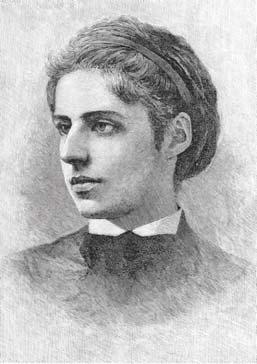
Boyer says, “My goal was that the audience would perceive this completely organically, so that from the time we start to the time we end, 45 minutes and seven stories later, we have felt like there is one broad narrative that encompasses all of this.”
The progression of the work as the stories unfold leads to the introduction of a familiar symbol, represented in the words of Katherine Beychok, a Russian Jewish immigrant from Russia who arrived in New York Harbor in 1910:
The water was blue, the sky, it was a beautiful day. Everybody was laughing and crying that they were here; they’re in America.… And, of course, the first thing I had seen was that lady, the Statue of Liberty. It was a thing I can never forget to this very day, because when I think of her, when I think of the Statue of Liberty, I feel so wonderful and so good. I don’t think there’s anything under the sun that can make me feel better. It seemed that she was a vision from heaven, and it’s been with me ever since.
Beychok’s testimony provided Boyer with a natural way to launch into the high point of the piece: Emma Lazarus’ famous sonnet, “The New Colossus.”
“Beychok talked about how she felt looking for the Statue of Liberty when she was coming to America and then when she looked back on it, what that meant to her,” Boyer explains. “And it was these beautiful words, and then she speaks of the sonnet. When I found it, it was like, ‘Eureka! That’s it—that’s how I get into the sonnet.’”
POPS FEATURE: American Mosaic
Fanfare Magazine | 19
An engraving of Emma Lazarus, writer of “The New Colossus”

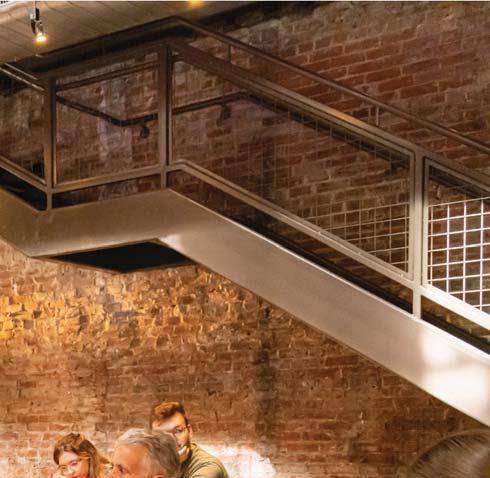
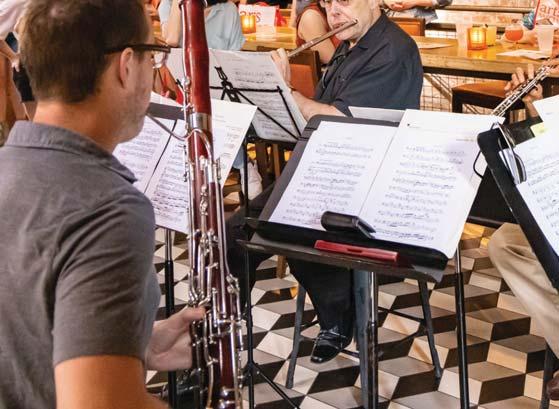


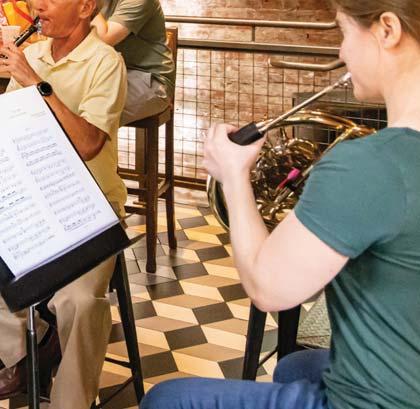



stronger arts for a stronger region


We don’t make the music you’ll hear on stage, but for nearly 100 years, we’ve been the primary way Cincy’s arts are funded. Your gift to ArtsWave ripples out across our communities to create a more vibrant future for everyone.
With tens of thousands of gifts from people like you, ArtsWave is proud to support the Cincinnati Symphony Orchestra, plus over a hundred other artsorganizations and artists that make our region stronger.
Make your gift today at artswave.org
The verse “Give me your tired, your poor, your huddled masses yearning to breathe free…” is familiar to every American school kid and, Boyer points out, is regarded as not only iconic but nearly mythological. It is part of how we tell ourselves our own history, that history that belongs to each of us. “The audience has been introduced to the seven individuals and their seven individual stories, and when they all come back you have this immigrant chorus, where the whole is greater than the sum of its parts,” explains Boyer. “That has great power because then they all participate in the sonnet.”

Yet, when the piece climaxes in the recitation of Lazurus’ poem by the ensemble of seven actors, it is no longer the power of the narrative, but rather, the power of Boyer’s musical language and the power of the full orchestra that finally provide emotional release to the tension that has built over the previous 40 minutes.
“Americanness” in Music. Giants such as Bernstein, Copland, Gershwin and, later, John Williams have often been credited with creating the enduring notion of “Americanness” in music. Boyer finds that he, too, has come to be associated with an American sound. “This piece is a big part of that reason I have come to be identified as an ‘American-sounding’ composer,” states Boyer. “It’s been much more of a natural, organic process. I’ve spent so much of my life studying those other composers’ output—really studying, from back in college days, all of the available scores that I could get my hands on. It has kind of seeped into my bloodstream as an American composer.”
That is not to say that Boyer has intentionally emulated other composers. It is natural, he points out, that early Beethoven sounded a lot more like Haydn because that was the musical language he had absorbed in the air around him as he developed his own voice. However, he concedes that the underscore to the Manny Steen story in Ellis Island is unique, in that Boyer made the conscious choice to evoke—not duplicate—the
Tin Pan Alley idiom, tying it to the specific historical context of 1920s New York.
“The hard part is to try to honor a tradition without just pandering, without imitating it in an empty way. I’ve always tried very hard not to do that.” Boyer continues, “But when I sit down at this keyboard and play notes, all of those notes are always informed by all this music that is in my head, all the music that I’ve heard.”
Ellis Island in a Contemporary Context.
Boyer notes that Ellis Island: The Dream of America is still in its original form. Unlike some composers, whose works go through continual revisions and edits, Boyer feels certain that he “got it right the first time. It sounds exactly as it sounded in April 2002.”
What has indeed changed in the 22 years since its premiere is the ugly baggage that the word “immigrant” has taken on, echoing the strident political climate of 100 years ago.
“September 11, 2001 occurred while I was writing the piece. In terms of days on which the world pivots, I mean—Pearl Harbor, September 11—it was one of those days that felt like the whole foundation of the world is shaking and you wonder how are you gonna respond,” reflected Boyer. “And because this was a piece that was really about something fundamental to American identity, ultimately I decided it doesn’t make sense to change the piece. This terrible event has happened but I’m going to continue just the way I imagined that it should be. And then if it takes on a different kind of resonance, then so be it.”
Ellis Island: The Dream of America has since become one of the most frequently performed American orchestral works of recent decades. In 2005, Peter Boyer was nominated for a Grammy Award for Best Classical Contemporary Composition for the work. Ellis Island has been performed more than 250 times by more than 120 orchestras and was filmed for broadcast in the PBS Great Performances series in 2017. In 2019, Boyer received the Ellis Island Medal of Honor for his work.

POPS FEATURE: American Mosaic
Fanfare Magazine | 21
Peter Boyer, ©Danika Singfield
Why We Give
by KIT GLADIEUX

From full concerts at Music Hall to small popup performances in local neighborhoods and everything in between, our generous and dedicated donors, sponsors and concertgoers make it all possible. This article shares the special stories behind why our donors give to the Cincinnati Symphony Orchestra and Cincinnati Pops—each reason is different, but their passion for this Orchestra is a constant. Our donors and their inspiring stories will ensure that the unique sound of the Cincinnati Symphony Orchestra and Cincinnati Pops will always resound.
You can join our family of donors online at cincinnatisymphony.org/donate or by contacting the Philanthropy Department at 513.744.3271.
LINDA & JIM MILLER
“I’ve never been without it, really,” says Linda Miller when asked about her experience with the Cincinnati Symphony Orchestra. “My great-grandmother was a huge part of my life. I remember going to concerts with her, starting when I was six or seven. I remember where she sat.”
Linda’s great-grandmother, Stella Heinsheimer Freiberg, was a founding member of the Cincinnati Symphony Orchestra in 1894. She
was also a part of the first graduating class of the College of Music at the University of Cincinnati, or what is now known as CCM, where she earned a doctorate in music. She also held an honorary doctorate from Hebrew Union College.

As she talked with Fanfare Magazine, Linda laid out a folder full of newspaper clippings, photographs and other documentation of Stella’s life, including her great-grandmother’s obituary, pictures of her and her husband, and even a photocopy of a CSO program from 1957 dedicated to Stella for her 95th birthday.
“She was quite a lady.”
Jim Miller wasn’t raised going to the symphony the way Linda was, but Linda has always been a part of his concert experience.
“I won some tickets to the St. Louis Symphony over 60 years ago. Linda and I were dating at that time, so it was a date night, if you would,” he chuckles as he reminisces. “When we moved to Cincinnati, there was a friend of Linda’s family who had season tickets. If she couldn’t attend, she’d offer us her tickets, and that’s how I was introduced to the Cincinnati Symphony Orchestra.”
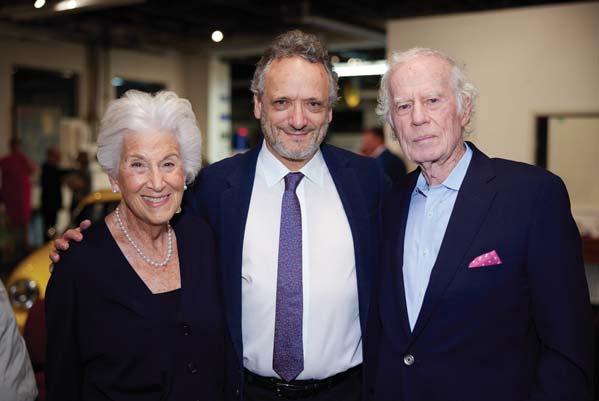
The Millers recounted the different music directors they had seen on the podium during their nearly 50 years of attending the symphony together. Thomas Schippers, Michael Gielen, Jesús López Cobos, Paavo Järvi and, of course, Louis Langrée, all came up in conversation.
SPOTLIGHT
SPOTLIGHT
Linda and Jim Miller with CSO Music Director Louis Langrée
22 | 2023–24 SEASON
Stella Heinsheimer Freiberg

After 50 years, what concerts stick out in your memories?
Last season’s final concert, An American in Paris, “sent us dancing out onto the street,” Linda says. The smile that crossed her face was contagious as she spoke of it. “Sometimes you leave a concert, and you’re just floating. That’s the most recent one.”
The first Lumenocity in 2013 was another highlight. Linda was serving on the board of the CSO at the time, and she and Jim worked crowd control for the event. “Nobody expected that kind of an event. There were people in the trees!” She even confessed that she still wears her neon yellow volunteer shirt from time to time.
The Millers’ generous donations have helped to sponsor concerts and commission new works. They are staunch supporters of the CSO Proof concert series. “With traditional concerts, you like those because they’re familiar, but with CSO Proof, you’re never quite sure what you’re going to get. There’s a certain amount of excitement we’re looking forward to. What are we going to be exposed to and what is our experience going to be?”
What would a lifelong concertgoer tell someone who was on the fence about attending a CSO Proof concert?
“Give it a try! I’ll buy you a ticket,” Linda says with a laugh.
What started as afternoons with her greatgrandmother has led to a lifetime of music for Linda.
“I’ll always feel a close kinship with this organization. It’s seriously, seriously important to the city,” she says.
As for Jim, his lifetime with Linda has led him to his love for the CSO.
“It’s something we feel very strongly about because it needs to be here in Cincinnati,” he says. “It needs to continue to be robust. We would like to do anything that we possibly could to make sure that success goes on for another 128 years.”
JOHNSON INVESTMENT COUNSEL and DEAN MOULAS
“We’re in Cincinnati. We’re not New York or Los Angeles or Chicago. The impact of having a full-time orchestra, not just in the caliber of musicians we have here, but the impact on the rest of the arts community is tremendous. To be able to have live music with the Opera and with

SPOTLIGHT: Why We Give
Dean Moulas and his son, J. Andrew Moulas, with CSO Music Director Louis Langrée
Fanfare Magazine | 23
the Ballet, is so far beyond the scope of just the Symphony,” Dean Moulas muses. The fondness in his voice is obvious.
Dean Moulas is a financial advisor and portfolio manager at Johnson Investment Counsel, a local investment management and financial advisory company and one of the CSO’s major concert sponsors.
“I’ve been involved in our corporate sponsorship with the Orchestra since I joined Johnson Investment Counsel in 2002. We want to support arts organizations and social services organizations in the community where we either have a direct interest or it has an impact on our city or our clients, and for those reasons we’ve been connected to the CSO.”
music extended into his own musicianship; he played the tuba and sousaphone in bands throughout high school and his time at The Ohio State University.
“Is it true that you dotted the ‘i’ in the script Ohio?” Fanfare asked. It’s a legendary college marching band tradition, and the highest honor for any Ohio State sousaphone player.
“Look at you! You’ve done your research,” Dean laughs. “That was my moment of fame in 1986.”
“We want to support arts organizations and social services organizations in the community where we either have a direct interest or it has an impact on our city or our clients, and for those reasons we’ve been connected to the CSO.”
—Dean Moulas, Johnson Investment Counsel
After more than 20 years of involvement, Dean’s dedication is clear. This season, Johnson Investment Counsel is the concert sponsor for “Hadelich & Holland” in April—a Brahms and Schoenberg program with a CSO premiere of a new work by Jonathan Bailey Holland and an appearance by Grammy-winning violinist Augustin Hadelich.
“My involvement specifically has really come from my love of classical music. I know classical music. I got involved with selecting the symphonies that we were going to sponsor, things that we would have interest in.”
Dean’s love for the Orchestra has a heartwarming beginning and a familial connection.
“I have loved music all my life, and it started with a love for my father…. When I grew up, my father had a lot of classical music on vinyl, and we would listen together.”
Dean expressed his love for all things Baroque, as well as his father’s fondness for the Romantic period. He grew up attending the Dayton
Just as Dean’s musical interest stemmed from his father, it seems that he has passed it down to his own children.
“Actually, my son also plays tuba, and he’s in his fourth year in The Ohio State University Marching Band. It’s been very fun watching him.” Dean tells me about the conversations he and his son have had with Christopher Olka, the principal tuba of the CSO. Dean’s involvement through Johnson Investment Counsel has brought him experiences of personal connection that he greatly values.
What keeps Johnson Investment Counsel coming back year after year to support the CSO?
“Without hesitation, I would say it’s been a wonderful collaboration for our company. Not just because we want to support the Orchestra, which we do, and not just because we love the music, which we do, but because of the impact on the broader community.”
For Dean, it is the full experience that a concert provides. “To be in a city with the caliber of orchestra that we have, to sit in Music Hall and be engrossed in what’s happening in front of you, to see and hear it happening live…I don’t think that can be replaced.”

SPOTLIGHT: Why We Give
24 | 2023–24 SEASON

Being Concertmaster is Much More Than “Give Me an A”
by ANNE ARENSTEIN
When the sounds of pre-concert warm-up subside, either violinist Stefani Matsuo or Felicity James stands and gives Principal Oboe Dwight Parry a nod to play the familiar concert “A” pitch for final tuning: first the winds and brass and, finally, the strings.
Matsuo is the CSO’s Concertmaster and occupies the Anna Sinton Taft Chair. Felicity James serves as Associate Concertmaster and holds the Tom and Dee Stegman Chair. Signaling for the tuning pitch is the most visible part of their jobs, whose responsibilities are best summed up by Matsuo:
“I’m basically second-incommand to the conductor.”
The concertmaster’s unseen work is extensive, intense and ongoing, beginning with preparing the orchestra for each scheduled concert months before performance. When Matsuo isn’t scheduled as concertmaster, James takes over. The job calls for time, personnel and logistics management, as well as knowledge of performance practices, communication skills and lots and lots of practicing.
“There’s a fair amount of preparation,” Matsuo confirmed with no irony.
The first step is studying the program’s scores and marking bowing for strings. “Bowing is the direction, either up or down, used by string players,” Matsuo explains. “Some changes may be required, but we try to be unified so our sound is as seamless as possible.”
“Our library staff is amazing,” she adds. “They get us the scores quickly, and once the concertmaster has finished bowings for the first

violins, the scores go to the principals in the other string sections.”
This season, with Louis Langrée conducting only six subscription concerts, there are many more guest conductors, which Matsuo and
 The concertmaster also prepares and leads the Orchestra for each Pops concert. Below, Stefani Matsuo and Felicity James sit side by side at the October 2023 Pops concert. Credit: Charlie Balcom
The concertmaster also prepares and leads the Orchestra for each Pops concert. Below, Stefani Matsuo and Felicity James sit side by side at the October 2023 Pops concert. Credit: Charlie Balcom
SPOTLIGHT
Bowings marked by Stefani Matsuo. The green circled X in the margin is Matsuo’s cue to the orchestra librarians of a change on that staff. The upside-down “u” is an indication of a down bow and the “v” is the indication for an up bow. Other items in green circles show changes to slurs.
Fanfare Magazine | 25

James acknowledge is a challenge, although an exciting one.
“Every guest conductor has their own unique style of communicating. Some conductors trust the orchestra 100 percent with everything and the preparation that we do before we go into rehearsals,” Matsuo says.
“Others provide their own scores and their own parts with bowings so that they can begin rehearsals from a place where they’re comfortable.”
With each guest conductor, a series of email or Zoom conversations precedes the conductor’s arrival in Cincinnati.
“It helps us get a sense of their vision,” Matsuo says. “Our Orchestra is super flexible and can adjust playing styles based on the conductor who’s here. That’s what our Orchestra excels at.”
The concertmaster’s leadership may be imperceptible to the audience, but, to a back row brass player or percussionist, it can be a subtle but vital gesture.
“Little details are super important,” Matsuo says. “A wind player might say, ‘We’re playing this together, but I need to take a breath or I’ll pass out, so give me a split second of time.’”
“Or someone will tell me they can’t see the conductor in a particular spot and ask for me to check in visually to make sure they can see me, so we’re in sync.”
“It can be as simple as raising an eyebrow.”
James sits next to Matsuo and describes her role as helping make Matsuo’s job easier:
“If Stefani changes the bowing or cues an entrance in a certain way, it’s my job to mirror exactly what she’s doing, so if someone sitting in the back can’t see her but they can see me, I should be doing exactly what she is.”
Preparation varies from concert to concert, but nothing prepared Matsuo for the Covid shutdown and the sudden shift to livestreamed performances of entirely new and previously unperformed works.
“As a result of this pivot, I had to familiarize myself with new repertoire in order to prepare parts with bowings, as well as lead my section and the orchestra,” she recalls. “This was both a challenge and a treat, as it opened my eyes and ears to pieces that I may not have had the opportunity to play otherwise.”
One of the most memorable performances was Anthony Davis’ You Have the Right to Remain Silent, featuring former CSO Associate Clarinet Anthony McGill, now the New York Philharmonic’s principal clarinet.
“It was incredible having Anthony Davis and Anthony McGill here to lead us all through the piece. Working with them helped us to understand the work and clarified any musical questions we might have had,” Matsuo says.
Throughout the livestreamed season, a constant challenge was to maintain a unified sound with increased distance between players, especially with plexiglass barriers surrounding some musicians.
“It was a steep learning curve,” Matsuo notes. “We also had to adjust our playing for microphones that were close to us, as opposed to projecting into a hall full of people. Everyone navigated the challenges beautifully.”
As in-person concerts resumed and the CSO returned to a full season, world premieres of commissioned works originally scheduled for the 2019–20 and 2020–21 seasons were added to the schedule.
“There were times when I felt like we were doing a commission every week as we came out of Covid,” Matsuo recalls. “A new work brings unique challenges for everyone.”
“When we get pieces that are unidiomatic, we have to be creative to figure out the best way to approach something that might not be comfortable.”
“Sometimes it’s asking, ‘Are you really sure you want it this way? It might sound better if we do this.’”
 SPOTLIGHT: Being Concertmaster
SPOTLIGHT: Being Concertmaster
26 | 2023–24 SEASON
Associate Concertmaster Felicity James (center) was first chair for the CSO’s Bernstein, Price & Copland concerts in October 2023, Louis Langrée conducting. Credit: JP Leong
“Some composers will be flexible, and others will want that gritty struggle.”
Felicity James experienced di erent demands when she served as concertmaster for the CSO’s performances of Ambroise Thomas’ Hamlet in November:
“There are a lot of moving parts in opera, including the tech aspects, so it’s crucial for the concertmaster to make things easier when there’s so much going on.”
“The conductor may not have the time to notice all of these small things, and my job is fine-tuning something the conductor might miss,” she adds. “Someone may not always see a singer, so it’s even more important to physically lead to create that unified sound.”
Matsuo and James exude confidence in themselves and in each other. They are rarities in American orchestras (and, indeed, in orchestras worldwide) as women under 40.
“There are just a handful of fulltime orchestras with women as concertmaster or associate chair,” Matsuo says. “As more orchestras shift to screened auditions, I hope that we’ll see more women take on those roles.”
Solo repertoire is a big part of the concertmaster audition process and, as both point out, the extent of job responsibilities becomes apparent only after winning the audition; today’s concertmaster responsibilities have evolved since the 18th-century European tradition of the first violinist leading the orchestra, as Mozart had done.
“You have to learn how to navigate from your first day on the job,” Matsuo says. “We’re so focused on the audition aspect that we don’t think about how many other aspects there are!”
One of the most crucial skills in a concertmaster’s toolbox is leadership, a skill not taught in conservatories or in private lessons.

Matsuo joined the CSO’s second violin section in 2015 and won the associate concertmaster audition in 2018. The following year, she successfully competed for the concertmaster position. She studied at the Cleveland School of Music and Juilliard.
James joined the CSO in 2022 after serving as associate concertmaster for the Minnesota Orchestra for four years after studying at the Colburn Conservatory of Music.
Both have extensive experience as chamber musicians and soloists. Matsuo performed Mozart’s Violin Concerto No. 4 with the CSO in May 2019, opened the 2021–22 season with Brahms’ Scherzo from “F-A-E” sonata, has performed Bach’s Brandenburg Concerto No. 4 with her colleagues this season and will perform the substantial solo when the CSO performs Richard Strauss’ Ein Heldenleben on March 23 and 24.
“There’s a very steep learning curve and you have to learn from your mistakes early on,” Matsuo acknowledges.
“Fortunately, we work with great colleagues. Not all orchestras are as friendly as the CSO, so I haven’t had a lot of sticky situations to deal with.”
So, at a concert’s conclusion, when the conductor shakes the concertmaster’s hand, it’s more than a courtesy: it’s an acknowledgement of a job well done.
Matsuo and James credit their success to their unique chemistry as stand partners, musicians and friends, and to the support of their colleagues in the CSO.
“It’s an incredible experience for me to sit next to someone like Stefani, a strong female whom I respect,” James says, adding that she initially felt her age might present di culties.
“As a young woman, it can be a bit intimidating with colleagues who have so much knowledge and so much experience,” she notes. “But it’s been a great learning experience getting to know my colleagues. They share so much.”
“It’s one of the best groups of people I’ve ever worked with, and it makes my job easier.”
Matsuo agrees: “I wouldn’t have wanted to take on this role in any other orchestra.”
 SPOTLIGHT: Being Concertmaster
SPOTLIGHT: Being Concertmaster
Fanfare Magazine | 27
Concertmaster Stefani Matsuo (left) focuses on Louis Langrée during a recent CSO concert. Credit: Mark Lyons

New Energy at the May Festival
by DAVID LYMAN
“For a lot of years, we didn’t make many changes here,” says Steven Sunderman, the May Festival’s executive director. “But with this—our new artistic model—I think we are making a real statement for our future.”
Now, if you are a May Festival traditionalist, the phrase “new artistic model” is sure to make you a little uneasy. Change is everywhere, of course. But here? At the May Festival? What on earth are they proposing to do with my Festival?
To better understand the new artistic model, you need to look back to the one that guided the Festival for more than 145 years. It was simple and streamlined. There were two primary artistic leaders: a music director and a chorus master. The titles occasionally changed. But as the names suggest, the chorus master—later the Director of Choruses—rehearsed the chorus, while the music director was in charge of the choice of music to be performed.
which is, at its heart, the May Festival Chorus and the Cincinnati Symphony Orchestra.
On January 9, the Festival announced their inaugural Festival Director—Pulitzer Prize-winning composer Julia Wolfe. Brash, adventurous and exceedingly well-connected through her many creative collaborations, she is precisely the type of person the May Festival was looking for when it set out to re-imagine the artistic enterprise.
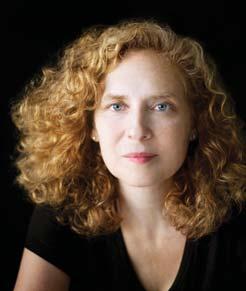
They were engaged for indefinite periods of time. Some were only around for a couple of Festivals, while others stayed for decades. Remember James Conlon? He was music director for a remarkable 37 years.
Beginning with the 2024 May Festival, that will change. Rather than have a music director with an open-ended contract, the Festival will have a Festival Director with a one-year appointment. Each year, a new director will infuse the Festival with a new aesthetic, a new sense of musical and theatrical exploration.
“This is not a reflection on anyone who has come before,” says Sunderman. “It’s more a reflection on all the musical possibilities that make up the music world today. With this new model, we will be able to bring in folks who have unique talents and insights to curate a single season.”
Even more fascinating is the idea that Festival Directors won’t necessarily be drawn from that ever-so-limited pool of conductors. They could come from any artistic discipline. They could be an actor or a stage director curating the May Festival in the future. Or a visual artist or a singer. The primary requirement is that the Festival Director be a person with a clear and singular artistic vision that can somehow be incorporated into the musical landscape of the May Festival,
It’s not just the music that gives Wolfe’s work its significance. In Her Story, Wolfe’s 40-minute oratorio, the libretto is built around text by Sojourner Truth and the correspondence of Abigail Adams. Performed by the members of the Lorelei Ensemble, Her Story is an often-ferocious work as it recalls pivotal moments in American women’s centuries-old campaign to achieve equal rights.
In Anthracite Fields, her Pulitzer Prize-winning piece about the hazardous and sometimes savage life in the coal mines of Pennsylvania, where she grew up, Wolfe drew on hundreds of sources— from oral histories and interviews to coal industry ads. This compelling story will be told by the May Festival Chorus, who will be joined by the composer’s own Bang on a Can All-Stars.
Obviously, Wolfe is driven by an acute sense of morality and social justice. Indeed, when she arrived at the University of Michigan as an undergraduate, her intention was to study social science.
“Nobody in my family was a musician,” recalls Wolfe. “But my parents got this baby grand piano. They thought it would look nice in the living room. And it did.” That’s when Julia started to take piano lessons. She showed some facility. But she was hardly what you would call a driven piano student.
“I was the designated accompanist when my grandmother would come over and want to sing show tunes,” she says. “Once I quit my lessons, I picked up folk guitar.”
But again, her goal in school was not to train as a music maker.
“You know—I was going to read Marx and Engels and change the world. Then I accidentally walked into a music class.”
Mind you, it wasn’t just any music class. It was called creative musicianship. Wolfe was part of U-M’s Residential College, a progressive


SPECIAL FEATURE
28 | 2023–24 SEASON
Julia Wolfe, ©Peter Serling
interdisciplinary liberal arts program. The class was taught by a professor named Jane Heirich.
“It was an incredible class,” says Wolfe, who was clearly inspired by what she experienced there. “She wasn’t a composer. But she connected the body with music-making. I wound up singing in a madrigal group. And I picked up the flute, though I wasn’t really into practicing.”
She pauses for a moment, reflecting on the fertile creative atmosphere she found at school. It felt like anything was possible.
“One thing about being a woman,” she says, “is that coming into this field, I didn’t know enough to know I couldn’t do it. You just go ‘I think I’ll do that. This is cool.’”
It was that attitude—that anything is possible— that was precisely what Sunderman found so intriguing about Wolfe’s approach to music. And what he hoped she would bring to this new vision of the May Festival.
“I am loving the season that Julia has curated for us,” says Sunderman. “We were looking for someone who was innovative, someone who understood how we are looking to re-energize the May Festival. From the very first time we spoke on the phone, she got it.”
But the new artistic model is not focused solely on new music. For 151 years, the May Festival has revolved around choral music of all types.
So the 2024 Festival will have its share of more familiar music, as well:
The May 18 program, led by Franco-British conductor Stephanie Childress, features Ralph Vaughan Williams’ Dona nobis pacem
Written in the depths of the Great Depression and the increasing fear of another World War, the work is, quite literally, a plea for peace. Also on the
program: David Lang’s the national anthems and a pair of works by Wolfe—Pretty and the world premiere of All that breathes, commissioned by the May Festival.
The closing program, on May 25, features the Fauré Requiem, conducted by François LópezFerrer, former Associate Conductor of the CSO and May Festival and a one-time member of the May Festival Chorus. Also on the program: Wolfe’s Her Story, with the Lorelei Ensemble.
The opening night performance on May 17 features just one work: Franz Joseph Haydn’s The Creation
“It’s a majestic piece,” says Director of Choruses Robert Porco, who will conduct the concert. “It’s widely regarded as one of his finest masterpieces.”
Haydn was already a musical celebrity throughout Europe when he composed the piece in 1798. At the age of 66, he was still in his musical prime. Three years later, he would compose his other great oratorio, The Seasons
But, by the very nature of its subject matter, The Creation is a sweeping and highly emotional piece. Small wonder that it was so widely revered during Haydn’s life.
Endowing the work with even more significance this year is that this will be the final concert conducted by Porco, who steps down from his position at the end of this, his 35th May Festival.
“There is something very inspirational about leading a chorus, particularly this one,” says Porco. “They spend hundreds and hundreds of hours rehearsing. They are all religions, all politics, all beliefs. But all those differences seem to disappear for those three hours when we rehearse. For them—and for me— the reward is the music.”

Tickets are now on sale at mayfestival.com



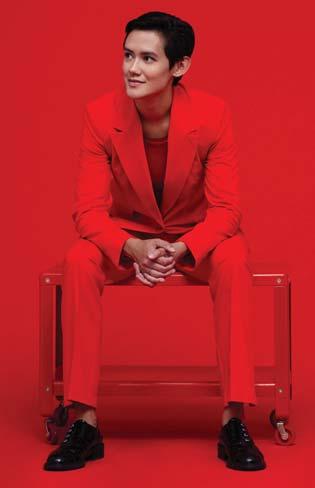









 From left, conductor Stephanie Childress (©Karolina Heller), conductor François López-Cobos and Lorelei Ensemble
From left, conductor Stephanie Childress (©Karolina Heller), conductor François López-Cobos and Lorelei Ensemble
Fanfare Magazine | 29
SPECIAL FEATURE: May Festival

LOUIS LANGRÉE, Music Director
Louise Dieterle Nippert & Louis Nippert Chair
JOHN MORRIS RUSSELL, Cincinnati Pops Conductor
Louise Dieterle Nippert & Louis Nippert Chair
Matthias Pintscher, CSO Creative Partner
Damon Gupton, Pops Principal Guest Conductor
Samuel Lee, Associate Conductor
Ashley and Barbara Ford Chair
Daniel Wiley, Assistant Conductor
Ashley and Barbara Ford Chair
FIRST VIOLINS
Stefani Matsuo
Concertmaster
Anna Sinton Taft Chair
Felicity James
Associate Concertmaster
Tom & Dee Stegman Chair
Philip Marten
First Assistant Concertmaster
James M. Ewell Chair++
Eric Bates
Second Assistant Concertmaster
Serge Shababian Chair
Kathryn Woolley
Nicholas Tsimaras–
Peter G. Courlas Chair++
Anna Reider
Dianne & J. David Rosenberg Chair
Mauricio Aguiar§
Anne G. & Robert W. Dorsey Chair
Minyoung Baik
Jo Ann & Paul Ward Chair
James Braid
Marc Bohlke Chair given by Katrin & Manfred Bohlke
Rebecca Kruger Fryxell
Clifford J. Goosmann & Andrea M. Wilson Chair
Gerald Itzkoff
Jean Ten Have Chair
Charles Morey†
Luo-Jia Wu
SECOND VIOLINS
Gabriel Pegis
Principal
Al Levinson Chair
Yang Liu*
Harold B. & Betty Justice Chair
Scott Mozlin**
Henry Meyer Chair
Kun Dong
Cheryl Benedict
Evin Blomberg§
Rachel Charbel
Ida Ringling North Chair
Chika Kinderman
Hyesun Park
Paul Patterson
Charles Gausmann Chair++
Stacey Woolley
Brenda & Ralph Taylor Chair++
VIOLAS
Christian Colberg
Principal
Louise D. & Louis Nippert Chair
Gabriel Napoli
Acting Associate Principal
Grace M. Allen Chair
Julian Wilkison**
Rebecca Barnes§
Christopher Fischer
Stephen Fryxell
Melinda & Irwin Simon Chair
Caterina Longhi
Denisse Rodriguez-Rivera
Dan Wang
Joanne Wojtowicz
CELLOS
Ilya Finkelshteyn
Principal
Irene & John J. Emery Chair
Daniel Kaler
Acting Associate Principal
Ona Hixson Dater Chair
Norman Johns**
Karl & Roberta Schlachter
Family Chair
Drew Dansby§
Nicholas Mariscal
Hiro Matsuo
Laura Kimble McLellan Chair++
Theodore Nelson‡
Peter G. Courlas–
Nicholas Tsimaras Chair++
Alan Rafferty
Ruth F. Rosevear Chair
[OPEN]
Marvin Kolodzik & Linda S. Gallaher Chair for Cello
BASSES
Owen Lee
Principal
Mary Alice Heekin Burke Chair++
Luis Arturo Celis Avila*
Thomas Vanden Eynden Chair
Stephen Jones**
Trish & Rick Bryan Chair
Boris Astafiev§
Gerald Torres
Rick Vizachero
HARP
Gillian Benet Sella
Principal
Cynthia & Frank Stewart Chair
FLUTES
Randolph Bowman
Principal
Charles Frederic Goss Chair
Henrik Heide*
Haley Bangs
Jane & David Ellis Chair
PICCOLO
Rebecca Pancner
Patricia Gross Linnemann Chair
OBOES
Dwight Parry
Principal
Josephine I. & David J. Joseph, Jr. Chair
Lon Bussell*
Stephen P. McKean Chair
Emily Beare
ENGLISH HORN
Christopher Philpotts
Principal
Alberta & Dr. Maurice Marsh Chair++
CLARINETS
Christopher Pell
Principal
Emma Margaret & Irving D. Goldman Chair
Joseph Morris*
Associate Principal and E-flat Clarinet
Robert E. & Fay Boeh Chair++
Ixi Chen
Vicky & Rick Reynolds Chair in honor of William A. Friedlander
BASS CLARINET
Ronald Aufmann
BASSOONS
Christopher Sales
Principal
Emalee Schavel Chair++
Martin Garcia*
Hugh Michie
CONTRABASSOON
Jennifer Monroe
FRENCH HORNS
Elizabeth Freimuth
Principal
Mary M. & Charles F. Yeiser Chair [OPEN]*
Ellen A. & Richard C. Berghamer
Chair
Molly Norcross**
Acting Associate Principal
Sweeney Family Chair in memory of Donald C. Sweeney
Lisa Conway
Susanne & Philip O. Geier, Jr. Chair
Duane Dugger
Mary & Joseph S. Stern, Jr. Chair
Charles Bell
Donald & Margaret Robinson Chair
TRUMPETS
Anthony Limoncelli
Principal
Rawson Chair
Douglas Lindsay*
Jackie & Roy Sweeney
Family Chair
Alexander Pride†
Otto M. Budig Family
Foundation Chair++
Christopher Kiradjieff
TROMBONES
Cristian Ganicenco
Principal Dorothy & John Hermanies Chair
Joseph Rodriguez**
Second/Assistant Principal Trombone
Sallie Robinson Wadsworth & Randolph L. Wadsworth Jr. Chair
BASS TROMBONE
Noah Roper
TUBA
Christopher Olka
Principal Ashley & Barbara Ford Chair
TIMPANI
Patrick Schleker
Principal
Matthew & Peg Woodside Chair
Joseph Bricker* Morleen & Jack Rouse Chair
PERCUSSION
David Fishlock
Principal
Susan S. & William A. Friedlander Chair
Michael Culligan*
Joseph Bricker
Morleen & Jack Rouse Chair
Marc Wolfley+
KEYBOARDS
Michael Chertock
James P. Thornton Chair
Julie Spangler+
James P. Thornton Chair
CSO/CCM DIVERSITY
FELLOWS~
Lucas Braga, violin
Melissa Peraza, viola
Manuel Papale, cello
Caleb Edwards, double bass
Wendell Rosa, double bass
LIBRARIANS
Christina Eaton
Principal Librarian
Lois Klein Jolson Chair
Elizabeth Dunning
Acting Associate Principal Librarian
Cara Benner
Interim Assistant Librarian
STAGE MANAGERS
Brian P. Schott
Phillip T. Sheridan
Daniel Schultz
Mike Ingram
Andrew Sheridan
§ Begins the alphabetical listing of players who participate in a system of rotated seating within the string section.
* Associate Principal
** Assistant Principal
† One-year appointment
‡ Leave of absence
+ Cincinnati Pops rhythm section
++ CSO endowment only
~ Funded by The Mellon Foundation

30 | 2023–24 SEASON
AND ARTISTIC LEADERSHIP
LOUIS LANGRÉE, Music Director
 Louise Dieterle Nippert & Louis Nippert Chair
Louise Dieterle Nippert & Louis Nippert Chair

In the 2023-24 season, Louis Langrée celebrates his final season with the Cincinnati Symphony Orchestra, where he has been Music Director since 2013, and will become Music Director Laureate at the conclusion of this season. He continues as Director of Théâtre national de l’Opéra-Comique in Paris, an appointment that began in November 2021. Langrée ended his 20-year tenure as Music Director of the Mostly Mozart Festival at Lincoln Center in the summer of 2023. Two of his Cincinnati recordings were Grammy nominated for Best Orchestral Performance: Transatlantic, with works by Varèse, Gershwin and Stravinsky; and Concertos for Orchestra, featuring world premieres by Sebastian Currier, Thierry Escaich and Zhou Tian. On stage, his Pelléas et Mélisande trilogy contrasted settings by Fauré, Debussy and Schoenberg. A multiseason Beethoven [R]evolution cycle paired the symphonies with world premieres, as well as recreation of the legendary 1808 Akademie. During the Covid pandemic, Langrée was a catalyst for the Orchestra’s return to the stage in the fall of 2020 with a series of digitally streamed concerts. Between the start of his tenure and the conclusion of the CSO’s 2023–24 season, Langrée and the CSO will have commissioned 45 new orchestral works and he will have conducted 31 premieres from a wide range of composers, including Julia Adolphe, Daníel Bjarnason, Jennifer Higdon, Jonathan Bailey Holland, Kinds of Kings, David Lang, Missy Mazzoli, Nico Muhly, André Previn, Caroline Shaw and Julia Wolfe, and the world premiere of Christopher Rouse’s Symphony No. 6, Rouse’s final opus.
He has guest conducted the Berlin Philharmonic, Vienna Philharmonic, London Philharmonic, Los Angeles Philharmonic, New York Philharmonic, Philadelphia Orchestra, Budapest Festival Orchestra, NHK Symphony, Orchestre National de France and Leipzig Gewandhaus, as well as Orchestre des Champs-Elysées and Freiburg Baroque. He frequently conducts at the leading opera houses, including more than 50 performances at The Metropolitan Opera, and engagements with Vienna Staatsoper, Teatro alla Scala, Royal Opera House Covent Garden, Lyric Opera of Chicago and Bavarian Staatsoper, and at festivals including Glyndebourne, Aix-enProvence, BBC Proms, Edinburgh International and Hong Kong Arts.
A native of Alsace, France, he is a Chevalier de la Légion d’Honneur and Officier des Arts et des Lettres, and he is an Honorary Member of the Confrérie Saint-Étienne d’Alsace, an Alsatian winemakers’ brotherhood dating to the 14th century.
JOHN MORRIS RUSSELL
Cincinnati Pops Conductor
Louise Dieterle Nippert & Louis Nippert Chair

John Morris Russell’s embrace of America’s unique voice and musical stories has transformed how orchestral performances can connect and engage with audiences everywhere. In his 13th year with the Cincinnati Pops Orchestra, the wide range and diversity of his work as a conductor, collaborator and educator invigorates the musical scene in Cincinnati and beyond. Russell is Music Director of the Hilton Head Symphony Orchestra and the Hilton Head International Piano Competition, and he serves as Principal Pops Conductor of the Buffalo Philharmonic Orchestra, following in the footsteps of Marvin Hamlisch and Doc Severinsen. He served as Music Director of Ontario’s Windsor Symphony Orchestra from 2001 to 2012.
A popular guest conductor, Russell has worked with the leading North American orchestras, including the Los Angeles Philharmonic, Cleveland Orchestra, Chicago Symphony, Toronto Symphony and New York Philharmonic, the Boston Pops and the National Symphony.
For more than a decade, Russell has regularly led the National Orchestral Institute and Festival in College Park, Maryland, one of the nation’s premier training orchestras. Dedicated to sharing the American musical experience with the newest generation of players, he helped develop and conducted the LinkUP! educational concert series at Carnegie Hall and has piloted educational programs with the symphony orchestras of Cincinnati, Windsor and Hilton Head.
For over two decades, he has led the Cincinnati Symphony Orchestra’s wildly successful Classical Roots initiative honoring and celebrating Black musical excellence, which has garnered recordbreaking in-person and online audiences.
Russell’s seven recordings with the Cincinnati Pops Orchestra include 2023’s holiday album JOY! and the landmark recordings in the “American Originals Project”: American Originals (the music of Stephen Foster) and the Grammy-nominated American Originals 1918 (a tribute to the dawn of the jazz age).
John Morris Russell earned degrees from the University of Southern California and Williams College and has studied at the Guildhall School of Music and Drama in London, the Cleveland Institute of Music, the Aspen Music Festival in Colorado and the Pierre Monteux School for Conductors in Hancock, Maine.
 ©Chris Lee 2021
©Chris Lee 2021
Fanfare Magazine | 31

MAR 3: CSO/CSYO Side-by-Side
SAMUEL LEE, conductor
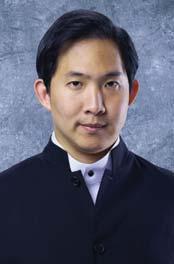
Samuel Lee, fi rst prize winner of the BMI International Conducting Competition in Bucharest and the International Conducting Competition in Taipei, was appointed Assistant Conductor of the Cincinnati Symphony Orchestra, beginning in the 2022–23 season, and was promoted to Associate Conductor in August 2023.
In addition to several recent guest conducting engagements throughout Europe and Asia, Lee was also a Conducting Fellow with the Cabrillo Festival of Contemporary Music in 2021 and 2022, where he worked with conductors Cristian Măcelaru, Yannick Nézet-Séguin, Octavio MásArocas and Marin Alsop.
Since 2016 Samuel Lee has been the chief conductor of the C.P.E. Bach Musikgymnasium orchestra Berlin. He and the orchestra have been regularly invited to the Berlin Philharmonie and Konzerthaus Berlin for subscription concerts. He also served as a viola professor at Hochschule für Musik und Theater “Felix Mendelssohn-Bartholdy” in Leipzig, Germany until 2022.
As a violist, Lee was invited to perform with orchestras throughout Europe and Asia. From 2009 until 2017, he was the violist of Novus String Quartet, and he was the second prize winner of the 61st International Music Competition of ARD Munich and first prize winner of the Salzburg International Mozart Competition.
Lee is an alumnus of Hochschule für Musik “Hanns Eisler” Berlin, where he studied viola with Prof. Tabea Zimmermann (BM, MM, Konzertexamen), and orchestral conducting with Prof. Christian Ehwald (BM, MM). Lee completed Konzertexamen in orchestral conducting from Hochschule für Musik und Theater Hamburg (Prof. Ulrich Windfuhr).
DANIEL WILEY, conductor
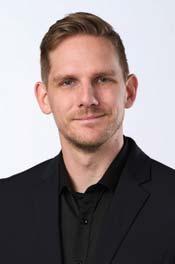
Daniel Wiley has quickly become a notable young conductor on the rise, having made guest appearances with orchestras, ballet companies and opera productions in the U.S. and Canada.
Prior to his tenure with the CSO, Wiley held numerous conducting posts, including Assistant Conductor of the Jacksonville Symphony, Music Director of the Jacksonville Symphony Youth Orchestras, Associate Conductor of the Windsor Symphony Orchestra, Music Director of the Windsor Symphony Youth Orchestras, Music Director of the Windsor Symphony Community Orchestra, Wind Ensemble Conductor at the School of Creative Arts at the University of Windsor, Education Conductor/Consultant for London Symphonia, Conductor for the Windsor Abridged Opera Company, Music Director of Texas Academy of Mathematics and Science Youth Orchestra, and Assistant Conductor for the Meridian Symphony Orchestra.
During the pandemic, Wiley was instrumental in expanding the Windsor Symphony’s educational footprint by creating a digital education concert series that includes 12 hours of interactive music curriculum for schools. This program has been recognized by the Ontario Provincial Parliament as an example of how an orchestra can change lives through music, even during a time of unprecedented uncertainty.
In 2019, Wiley was the second prize recipient of both the Smoky Mountain International Conducting Institute and Competition and the Los Angeles International Conducting Competition. Wiley has also spent time conducting new music ensembles, including for the Musicbed Music and Film Corporation based in Fort Worth, Texas, as well as participating in the Composing in the Wilderness program as part of the Fairbanks Summer Arts Festival in Alaska.
As a former public-school music teacher, Wiley has a unique passion for music education and frequently donates his time as a guest clinician to support students and teachers in music programs across North America.
GUEST ARTISTS: March–April, 2024
32 | 2023–24 SEASON

CHRISTY KIM, violin
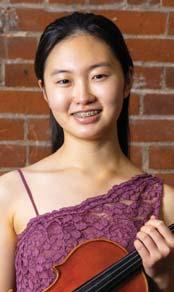
Christy Kim is a senior at William Mason High School in Ohio and started playing the violin at the age of six. She won top prizes in the 2023 Matinée Musicale Cincinnati Nancy F. Walker Memorial Scholarship Competition, the 2021 David L. Pierson Concerto Competition, the 2020 Jack & Lucille Wonnell Young Artist Concerto Competition and the 2023–24 (Philharmonic) and 2018–19 (Concert Orchestra) Cincinnati Symphony Youth Orchestra concerto competitions, and she has performed as a soloist with the Dayton Philharmonic Orchestra, the Blue Ash Montgomery Symphony Orchestra and the Cincinnati Symphony Youth Orchestra (Concert Orchestra). She was also awarded prizes in the 2023 YoungArts National Competition, the 2023 Walgreens National Concerto Competition, the 2022 and 2023 Overture Awards, the 2022 Sejong
Music Competition, the 2022 Society of American Musicians Violin Competition, and the 2019 Louisville Young Artist Concerto Competition.
Kim has been the concertmaster of the Cincinnati Symphony Youth Orchestra (Philharmonic) since the 2022–23 season and plays in the Mason Symphony Orchestra and her school’s Symphony Chamber Orchestra. She also served as concertmaster of the Ohio Music Education Association All-State and Southwest Regional orchestras for the 2022 and 2023 seasons, as well as the Cincinnati Symphony Youth Orchestra (Concert Orchestra) for the 2018–19 and 2019–20 seasons. She participated in the National Youth Orchestra 2 (2022).
Kim has traveled to festivals including Chamber Music Northwest’s Young Artist Institute (2023), the Vivace International Music Festival (2023), the Bowdoin International Music Festival (2019, 2020), the Innsbrook Institute of Music (2018), and the Cincinnati Young Artists Music Festival (2017, 2019). She has played in masterclasses for Clara-Jumi Kang, Marina Chiche, Vadim Gluzman, Karen Gomyo, Tessa Lark, Timothy Lees and Esther Yoo.
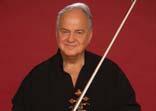



Six of One | April 14/15


An ensemble of extraordinary string players assembles to perform a program of remarkable sextets. Nokuthula Ngwenyama’s festive Sexagesimal Celebration, Arnold Schoenberg’s beautiful and poignant tone-poem and folk-inspired String Sextet



MAR–APR GUEST ARTISTS
LintonMusic.org | 513.381.6868 | info@lintonmusic.org
in Avondale and Loveland.
Performances
Fanfare Magazine | 33
Harnessing the Power of Intimacy
CSO MAR 8–10:
Copland’s Appalachian Spring
MATTHIAS PINTSCHER, conductor
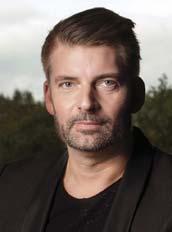
Matthias Pintscher is the newly appointed Music Director of the Kansas City Symphony, effective in the 2024–25 season. He has just concluded a successful decadelong tenure as Music Director of the Ensemble intercontemporain (EIC), the iconic Parisian contemporary ensemble founded by Pierre Boulez and winner of the 2022 Polar Prize. During his stewardship, Pintscher led this most adventurous institution in the creation of dozens of world premieres by cutting-edge composers from all over the world and took the ensemble on tours around the globe—to Asia and North America and throughout Europe to all the major festivals and concert halls
The 2023–24 season is Pintscher’s fourth as Creative Partner at the Cincinnati Symphony Orchestra (CSO), where he will conduct an immersive video-concert of Olivier Messiaen’s Des canyons aux étoiles. He will also tour with the Junge Deutsche Philharmonie, with which he is artist-in-residence. As guest conductor, he returns to the RAI Milano Musica, Orchestre de Chambre de Paris, NDR Hamburg, Indianapolis Symphony, Milwaukee Symphony, Barcelona Symphony, Lahti Symphony, Deutsche Kammerphilharmonie Bremen, La Scala and Berlin’s Boulez Ensemble. Pintscher has conducted several opera productions for the Berliner Staatsoper, Wiener Staatsoper and the Théâtre du Châtelet in Paris. He returns to the Berliner Staatsoper in 2024 for Beat Furrer’s Violetter Schnee.
Pintscher is also well known as a composer, and his works appear frequently on the programs of major symphony orchestras throughout the world. In August 2021, he was the focus of the Suntory Hall Summer Festival—a week-long celebration of his works with the Tokyo Symphony Orchestra— as well as a residency by the EIC with symphonic and chamber music performances. His third violin concerto, Assonanza, written for Leila Josefowicz, was premiered in January 2022 with the CSO. matthiaspintscher.com
CONRAD TAO, piano

Conrad Tao has appeared worldwide as a pianist and composer.
In the 2023–24 season, Tao makes his subscription debut with the Chicago Symphony Orchestra. He also re-unites with the New York Philharmonic, following his curated program for them last season as part of the Artist Spotlight series. Meanwhile, he celebrates the 100th anniversary of Rhapsody in Blue with multiple performances of the work and a new companion piece commissioned from him by the Santa Rosa Symphony. His return engagements include performances with the Oregon Symphony and the Seattle Symphony. As part of the celebration of Rachmaninoff’s 150th birthday, Tao brings Rachmaninoff Songbook to the 92NY and Germany’s Klavierfestival Ruhr, presenting a direct line from Rachmaninoff to the music of Billy Strayhorn, Harold Arlen and Stephen Sondheim.
In a concert curated by Tao himself, Tao invites UK-based new-music collective Distractfold to make their NYC debut at Kaufman Music Center with the world premiere of Andrew Greenwald’s A Thing Made Whole VIII along with music by Jürg Frey, Hanna Hartman and Mauricio Pauly. This season also includes performances with dancer Caleb Teicher in the duo’s Counterpoint program. More collaborations include a multi-city tour throughout the season with the Junction Trio, including a program of John Zorn, Ives and Beethoven at Weill Recital Hall at Carnegie Hall and the trio’s Detroit debut, among many others.
A Warner Classics recording artist, Tao’s CDs for the label include his debut disc Voyages, followed by Pictures, American Rage and Bricolage with the brass quartet The Westerlies.
Tao was born in Urbana, Illinois in 1994. He has studied piano with Emilio del Rosario in Chicago and Yoheved Kaplinsky in New York, and composition with Christopher Theofanidis. conradtao.com
MAR–APR GUEST ARTISTS
©Franck Ferville
34 | 2023–24 SEASON
©Brantley Gutierrez
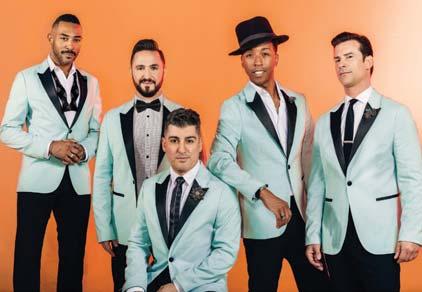
POPS MAR 15–17: The Doo Wop Project
JOHN MORRIS RUSSELL, conductor
Turn to p. 31 for a biography of Cincinnati Pops Conductor John Morris Russell.
THE DOO WOP PROJECT
The Doo Wop Project begins at the beginning: tracing the evolution of Doo Wop from the classic sound of five guys singing harmonies on a street corner to the biggest hits on the radio today. In their epic shows, The Doo Wop Project takes audiences on a journey featuring foundational tunes from The Crests, The Belmonts and The Flamingos through the vocal artistry of Smokey Robinson, The Temptations and The Four Seasons, all the way to DooWopified versions of modern hits from Michael Jackson, Jason Mraz, Maroon 5 and Sam Smith.
Featuring stars from the Broadway hits Jersey Boys, Motown: The Musical and A Bronx Tale, The Doo Wop Project brings unparalleled authenticity of sound and vocal excellence to recreate—and in some cases entirely reimagine—the greatest music in American pop and rock history.
CHARL BROWN, vocalist
Charl Brown was nominated for a Tony Award for Best Featured Actor in a Musical for his role as Smokey Robinson in Motown: The Musical; he reprised this role, opening London’s West End production, in 2015. He is also featured on the Grammy-nominated original Broadway cast recording. In 2014, Brown was honored to work with Stephen Schwartz playing the role of Adam/Noah in Children of Eden in concert at the Kennedy Center. And, last year, he returned to the Kennedy Center in The Who’s Tommy Other credits include Jersey Boys on Broadway and in Las Vegas (Hal Miller), Sister Act on Broadway (Officer Eddie Souther, TJ, Pablo
understudy, Ensemble), Hair (Hud) European Tour, The Who’s Tommy (Captain Walker) at the Denver Center, Ever After (Captain Laurent) at Papermill Playhouse, Johnny Baseball (Tim Wyatt) at ART, Dreamgirls (Curtis Taylor Jr.) at SDMT, Ragtime (Coalhouse) with Performance Riverside, Six Degrees of Separation (Paul) at Long Beach Playhouse, Jesus Christ Superstar (Judas) for Music at Westwood Theater, A Chorus Line (Richie) at Starlight Theater and Star Wars Trilogy in 30 Minutes (Lando Calrissian) at the Edinburgh Fringe Festival. Television credits include Evil, Madam Secretary, America’s Got Talent (U.S. and UK), Macy’s 85th and 87th Thanksgiving Day Parades, the 63rd annual Tony Awards and A Capitol Fourth 2013. Brown is a proud graduate of the University of Southern California School of Dramatic Arts, where he currently sits on the advisory board for the inaugural BFA in Musical Theater class.
DWAYNE COOPER, vocalist
Dwayne Cooper (the bass) is from Florence, SC and currently lives in New York City. He first began singing with a Christian a cappella group called “The Cunningham Singers.” Often referred to as a modern-day Sammy Davis Jr. meets

MAR–APR
GUEST ARTISTS
Fanfare Magazine | 35
The Doo Wop Project, from left Charl Brown, Russell Fischer, John Michael Dias, Dwayne Cooper and Dominic Nolfi.


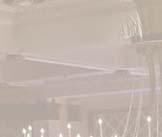









SEASON TICKETS NOW ON SALE cincinnatisymphony.org/subscribe 2024-25 Season
Barry White, he is what the industry calls a “triple threat” and has performed in the Broadway casts of Motown: The Musical and Hairspray, the Off-Broadway revival of Smokey Joe’s Café, and several national tours, including Showboat As a songwriter and producer, Cooper’s songs have appeared on Billboard’s Top Ten Dance chart. Cooper’s film and television credits include Law And Order, Unbreakable Kimmy Schmidt, Difficult People and RuPaul’s Drag Race
JOHN MICHAEL DIAS, vocalist
John Michael Dias recently appeared on Broadway as Neil Sedaka in the Tony- and Grammy-winning hit Beautiful: The Carol King Musical . He originated the same role for the Beautiful fi rst national tour. Dias gained a nationwide following starring as Frankie Valli of The Four Seasons in the smash hit Jersey Boys , playing the role on Broadway, as well as in the fi rst national tour, Vegas and Chicago companies. In concert, he has starred in Breaking Up Is Hard to Do: Neil Sedaka’s Greatest Hits! He can also be seen singing special appearances with The Doo Wop Project. Dias’ solo album, Write This Way , which features intimate takes on Broadway and pop favorites like “Can’t Take My Eyes Off of You” and “New York State of Mind,” is available on iTunes. Dias earned a BFA in musical theatre from Boston Conservatory.
RUSSELL FISCHER, vocalist
Russell Fischer was cast in the Broadway company of Jersey Boys on his 22nd birthday, marking his Broadway debut. Fischer starred in the second national tour of Big: The Musical. His latest NYC credit was in Baby Fat, Act 1: A Rock Opera at LaMama Experimental Theater Club. Regional credits include Thoroughly Modern Millie, The Music Man at Chautauqua Opera, the American premiere of Children of Eden at Papermill Playhouse and, most recently, the Atlanta Musical Theatre Festival premiere of The Collins Boy. Fischer was a featured vocalist on Last Week Tonight with John Oliver and in the HBO documentary The Bronx, USA. He has appeared on the live broadcasts of the 2015 Belmont Stakes, the 2009 Tony Awards, and several spots for TV Land’s 60 Second Sitcoms. He enjoys sharing Doo-Wop music with audiences around the world.
DOMINIC NOLFI, vocalist
Dominic Nolfi most recently performed on Broadway in Chazz Palminteri’s A Bronx Tale: The Musical, directed by Robert DeNiro and Jerry Zaks. As an Original Cast member of A Bronx Tale: The Musical, Motown: The Musical (Grammy nominated) and Jersey Boys (Grammy for Best Cast Album), he can be heard on all three soundtracks. Nolfi also performed in the world premiere productions of A Bronx Tale and Jersey Boys at the Paper Mill Playhouse and the La Jolla Playhouse. Nolfi was born and raised in San Francisco, where he studied youth acting at the acclaimed American Conservatory Theatre. He studied voice at the San Francisco Conservatory and attended the Boston Conservatory on scholarship, graduating with a BFA in Theater. Upon graduation, Nolfi joined the European production of Grease. It was there that he met his future wife, Sonia Iannetti; they have a daughter, Vivienne. Nolfi is a founding member of The Doo Wop Project and is unbelievably proud of his association with the other men who helped create the group.

THE MATCH GAME
by Steven Strafford

MAR–APR GUEST ARTISTS
SEASON FUNDER www.ensemblecincinnati.org A world
comedy about how families aren’t always well matched.
premiere
Fanfare Magazine | 37
CSO MAR 23 & 24: Heroic Strauss & Melodic Mozart
SIR MARK ELDER, conductor

Sir Mark Elder has been Music Director of The Hallé since September 2000. He was previously Music Director of English National Opera (1979–93) and Principal Guest Conductor of the BBC Symphony Orchestra and City of Birmingham Symphony Orchestra. From 2022 to 2023, he was Principal Guest Conductor of the Bergen Philharmonic Orchestra.
Elder has enjoyed long relationships with the London Philharmonic and London Symphony orchestras as well as working with leading symphony orchestras throughout the world. He is a Principal Artist of the Orchestra of the Age of Enlightenment and has appeared annually at the Proms for many years, including—in 1987 and 2006—the internationally televised Last Night.
He has enjoyed a long association with the Royal Opera House and has appeared in many other prominent theatres, including the Metropolitan Opera, Opéra de Paris, Bavarian

State Opera, Zürich Opera, Dutch National Opera, Chicago Lyric Opera, San Francisco Opera and Glyndebourne Festival Opera. He was the first English conductor to conduct a new production at the Bayreuth Festival.
From 2011 to 2019, he was Artistic Director of Opera Rara, and he has made many awardwinning recordings in a wide repertoire with The Hallé, including a complete RING cycle, Parsifal and the three great Elgar oratorios.
Sir Mark Elder was appointed a Companion of Honour in 2017, knighted in 2008 and awarded the CBE in 1989. In May 2006, he was named Conductor of the Year by the Royal Philharmonic Society, and he was awarded Honorary Membership of the Royal Philharmonic Society in 2011. He is International Chair in Conducting at the Royal Northern College of Music and Barbirolli Chair at the Royal Academy of Music.
PAVEL KOLESNIKOV, piano
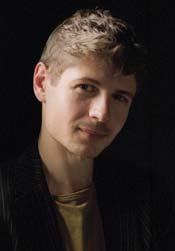
Following his sevenconcert residency at the Aldeburgh Festival and sixth appearance at the BBC Proms last summer, the 2023–24 season sees Pavel Kolesnikov’s debut with the Danish National Symphony (with Susanna Mälkki), Cincinnati Symphony Orchestra and Netherlands Philharmonic (both with Sir Mark Elder), and a recital tour of North America. He also returns to the Philharmonia Orchestra (Santtu-Matias Rouvali), Royal Philharmonic Orchestra (Vasily Petrenko), Klavier Festival Ruhr and to Wigmore Hall, where he was Artist-inResidence during the 2020–21 season.
Kolesnikov is known for his cross-genre collaborations and narrative programs. Recent examples include Celestial Navigation—a sequence of music featuring projections by architect Sophie Hicks and text by Martin Crimp— and his realization of Bach’s Goldberg Variations with dancer Anne Teresa De Keersmaeker, which has been staged more than 50 times across Europe. Kolesnikov also regularly performs with pianist Samson Tsoy, and the duo’s Carnegie Hall debut this season follows recent dates at Amsterdam’s Muziekgebouw and London’s Southbank and Barbican centres—the latter as part of Europe’s first-ever Classical Pride.
Kolesnikov won the Honens International Piano Competition in 2012 and was a BBC New Generation Artist 2014–16. He has since worked with all of the BBC orchestras, London Symphony,
MAR–APR GUEST ARTISTS
38 | 2023–24 SEASON
London Philharmonic, The Hallé, Netherlands Radio Philharmonic, Orquesta Sinfónica de Barcelona, City of Birmingham Symphony, Yomiuri Nippon Symphony and Stavanger Symphony, among others. He regularly gives recitals at Wigmore Hall, Queen Elizabeth Hall, Park Avenue Armory, La Roque-d’Anthéron, Konzerthaus Berlin, Piano aux Jacobins Festival and De Singel.
Pavel Kolesnikov’s discography for Hyperion includes albums of music by Reynaldo Hahn, Louis Couperin and Chopin. pavelkolesnikov.co.uk
POPS MAR 26: Ben Rector & Cody Fry: Live with the Cincinnati Pops
JASON SEBER, conductor
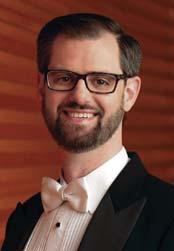
Jason Seber is known for his inviting and engaging approach on and off the podium. A strong believer in the eclectic experiences today’s symphony orchestras offer their communities, he strives to make music of many genres and styles accessible, relevant and meaningful to diverse audiences across the country.
Seber has conducted many leading American orchestras, and upcoming performances include debuts with the Minnesota Orchestra and the Cincinnati Pops Orchestra, as well as return engagements with Buffalo, Detroit, Kansas City, Louisville, Nashville and St. Louis. Seber has had the pleasure of performing with a wide range of artists, including Patti Austin, Mason Bates, Andrew Bird, Boyz II Men, Ashley Brown, Jinjoo Cho, Melissa Etheridge, Ben Folds, Renée Elise Goldsberry, Paul Jacobs, Wynonna Judd, Lyle Lovett, Natalie Merchant, Brian Stokes Mitchell, My Morning Jacket, Leslie Odom Jr., Aoife O’Donovan, Pink Martini, Stephen Schwartz, Doc Severinsen, Conrad Tao, Bobby Watson and Joyce Yang. Last summer, he led orchestras across the country in Lyle Lovett and His Large Band’s summer tour.
Seber served as associate conductor of the Kansas City Symphony (2016–2022), leading the orchestra in more than 300 performances, and was co-host for the orchestra’s podcast, Beethoven Walks into a Bar. Prior to Kansas City, Seber was the education and outreach conductor at the Louisville Orchestra (2013–16) and music director of the Louisville Youth Orchestra (2005–2016). A passionate advocate for music education, Seber has led the Honors Performance Series
Orchestra in concert at Carnegie Hall, Sydney Opera House and Royal Festival Hall in London. He is a frequent guest conductor of the National Repertory Orchestra each summer, and he has served as the All-State Orchestra conductor for Georgia, Missouri and Pennsylvania, and upcoming in 2024, Kansas.
BEN RECTOR, guest artist
With more than one billion streams, indie superstar Ben Rector released his highly anticipated album, The Joy of Music, in March 2022. The album features several notable collaborations, including award-winning rapper Snoop Dogg, Grammy winner and legendary musician Dave Koz, iconic jazz musician Kenny G., Taylor Goldsmith from the folk-rock band Dawes, as well as the YouTube sensation One Voice Children’s Choir. Alongside the album release, Rector premiered a short film featuring seven songs brought to life with stunning cinematography.
His career has taken him from the challenging beginnings of every up-and-comer, to one of the most successful independent artists to-date. He’s never signed to a major label or publisher, yet he has played live on a number of national television

MAR–APR GUEST ARTISTS
Fanfare Magazine | 39

shows, including Jimmy Kimmel Live!, Conan, The Today Show, Good Morning America and more; had his music featured in over a hundred TV shows, ads and films, including Pretty Little Liars and Castle (his single “Brand New” is one of the most licensed songs for television and film in the last five years); hit the number one spot on Billboard’s U.S. Folk chart and the number nine spot on their top 200; and was an all-star mentor on ABC’s American Idol. Rector also recently sold out the majority of amphitheaters nationwide on this most recent headlining tour, The Joy of Music—A Live Music Event at Ascend Amphitheater in Nashville. benrectormusic.com
CODY FRY, guest artist
After the life-changing viral TikTok success of his song “I Hear a Symphony,” Cody Fry has embarked on a new creative journey with Symphony Sessions, a sweeping orchestral collection of new songs, new arrangements of old songs, and live videos featuring his signature widescreen approach to pop music. His bombastic cover of “Eleanor Rigby” was recently nominated for a Grammy in the category of Best Arrangement, Instruments & Vocals.
A list of Fry’s career accomplishments might, at first, seem strange and wide-ranging. The
Nashville-based singer/songwriter/composer/ producer has written music for everything from national ad campaigns to video games, apps, fashion events and Vimeo-Staff-Picked short films to scoring works for A-list corporate brands like Netflix and Google, and even a Super Bowl commercial for McDonald’s.
So, when Cody Fry sits down to write music for himself, it’s the sum of those experiences that make him an artist like no other you’ll come across.
Growing up in a musical household, Fry was steeped in the world of music from a young age. His father, Gary Fry, is an orchestral composer who writes for symphonic organizations all over the world. Like father like son, Fry’s love of orchestration permeates much of his work and lends his sound a unique and cinematic quality.
His genre-bending discography and musicianship give him the opportunity to perform in a huge range of artistic contexts. Fry has performed all over the globe, including with the world-famous Metropole Orkest, and even a ravereviewed stint on American Idol. He once was asked to perform for Oprah on a Mediterranean cruise ship. She was super nice. codyfry.com
CSO MAR 29 & 30: Tchaikovsky & Nielsen RYAN BANCROFT, conductor

Ryan Bancroft grew up in Los Angeles and first came to international attention in April 2018, when he won both the First Prize and Audience Prize at the prestigious Malko Competition for Young Conductors in Copenhagen. Since September 2021, Bancroft has been Principal Conductor of the BBC National Orchestra of Wales. Following his first visit to work with the Tapiola Sinfonietta in Finland, Bancroft was invited to become their Artist-in-Association beginning with the 2021–22 season. In 2021, Bancroft was announced as Chief Conductor Designate of the Royal Stockholm Philharmonic Orchestra and took up the Chief Conductor position in September 2023.
Bancroft returned to Los Angeles to make his Hollywood Bowl debut in August 2023 with the Los Angeles Philharmonic Orchestra and Eric Lu, before making his debut with The Cleveland Orchestra at Blossom Festival alongside Mao Fujita. He also debuts with the San Francisco and Cincinnati symphony orchestras and returns to the Toronto Symphony in the 2023–24 season.
MAR–APR GUEST ARTISTS
40 | 2023–24 SEASON
From left, Ben Rector and Cody Fry
The 2023–24 season also sees Bancroft make debuts with the NDR Elbphilharmonie Orchestra with Joshua Bell, the Orquesta Sinfonica Castilla y Lyon with Martin Fröst, and the Netherlands Radio Philharmonic with Bomsori Kim, as well as returns to the Royal Festival Hall with the Philharmonia and Renaud Capuçon.
Bancroft has a passion for contemporary music and has performed with Amsterdam’s acclaimed Nieuw Ensemble; assisted Pierre Boulez in a performance of his Sur Incises in Los Angeles; premiered works by Sofia Gubaidulina, John Cage, James Tenney and Anne LeBaron; and worked closely with improvisers such as Wadada Leo Smith and Charlie Haden.
Bancroft studied trumpet at the California Institute of the Arts, alongside additional studies in harp, flute, cello and Ghanaian music and dance. He then went on to receive an MMus in orchestral conducting from the Royal Conservatoire of Scotland. He continued his conducting studies in the Netherlands and is a graduate of the prestigious Nationale Master Orkestdirectie. As a student, his main mentors were Edward Carroll, Kenneth Montgomery, Ed Spanjaard and Jac van Steen. intermusica.com/artist/Ryan-Bancroft
INON BARNATAN, piano

“One of the most admired pianists of his generation” (New York Times), Inon Barnatan has established a unique and varied career, equally celebrated as a soloist, curator and collaborator. He is a regular soloist with many of the world’s foremost orchestras and conductors, and he has served as the inaugural Artist-inAssociation of the New York Philharmonic for three seasons.
Barnatan’s 2023–24 season highlights include concerto performances in the U.S. with the Colorado Symphony, Detroit Symphony Orchestra and Cincinnati Symphony Orchestra, and internationally with the Tokyo Metropolitan Symphony Orchestra, Netherlands Radio Philharmonic Orchestra and London Philharmonic Orchestra. Barnatan will give solo recitals presented at Spivey Hall, The Phillips Collection, Leeds International Piano Series, Wigmore Hall,

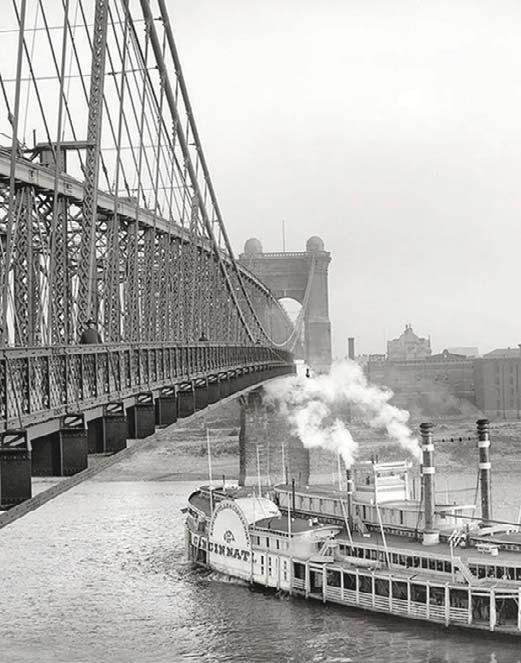
MAR–APR GUEST ARTISTS
YOU — THE JEWISH FOUNDATION OF CINCINNATI is proud to provide leadership supportfor The Dream of America concert. Fanfare Magazine | 41
©Marco Borggreve
THANK
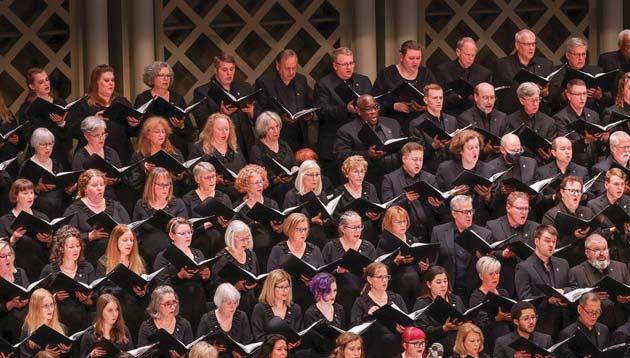



MAY 17-25 • MUSIC HALL mayfestival.com • 513.381.3300 Christy and Terry Horan A FESTIVAL FULL OF NEW DISCOVERIES FESTIVAL 2024
The Norwegian Opera and Ballet and The 92nd Street Y.
In November 2023, Barnatan released his album Rachmaninoff Reflections, offering some of the composer’s most cherished piano works, including his Moments musicaux, Prelude in G-sharp Minor, and Barnatan’s own arrangement of the Vocalise The centerpiece of this project is Barnatan’s breathtaking new piano arrangement of the Symphonic Dances.
Born in Tel Aviv in 1979, Barnatan started playing the piano at the age of three and made his orchestral debut at 11. His musical education connects him to some of the 20th century’s most illustrious pianists and teachers: he studied first with Professor Victor Derevianko, a student of the Russian master Heinrich Neuhaus, before moving to London in 1997 to study at the Royal Academy of Music with Christopher Elton and Maria Curcio, a student of the legendary Artur Schnabel. Leon Fleisher was also an influential teacher and mentor. Barnatan is a recipient of an Avery Fisher Career Grant and Lincoln Center’s Martin E. Segal Award, and he is an alumnus of the Chamber Music Society of Lincoln Center Bowers Program. inonbarnatan.com
POPS APR 12–14: The Dream of America
JOHN MORRIS RUSSELL, conductor
Turn to p. 31 for a biography of Cincinnati Pops Conductor John Morris Russell.
ELLIS ISLAND CAST
Biographies for the Ellis Island cast will be available in the digital program: text PROGRAM to 513.845.3024.
For more information about our guest artists, please text PROGRAM to 513.845.3024*.
*By texting to this number, you may receive messages that pertain to the organization and its performances; msg & data rates may apply. Reply HELP to help, STOP to cancel.
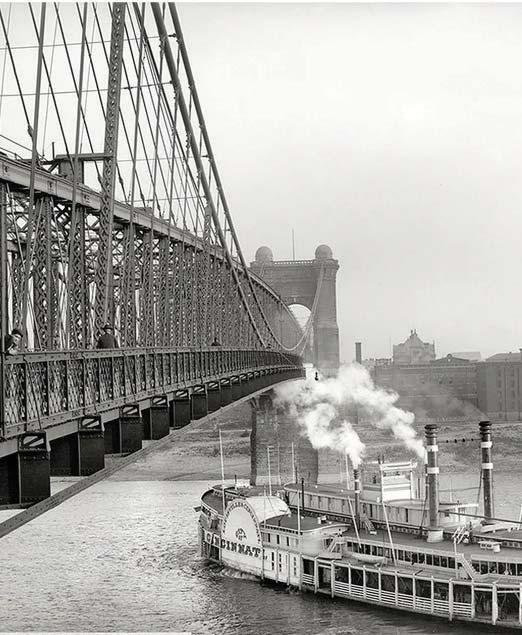
MAR–APR GUEST ARTISTS
—
SPONSORS
THANK YOU
CONCERT
Fanfare Magazine | 43
Kelly Dehan & Rick Staudigel for The Dream of America concert.
CSO/CSYO SIDE-BY-SIDE CONCERT | 2023–24 SEASON

SUN MAR 3, 7 pm, Music Hall
SAMUEL LEE, conductor DANIEL WILEY, conductor CHRISTY KIM, violin
Dmitri SHOSTAKOVICH Festive Overture, Op. 96 (1906–1975)
Camille SAINT-SAËNS Introduction and Rondo Capriccioso, Op. 28 (1835–1921)
Aram KHACHATURIAN Suite No. 2 from Spartacus (1903–1978)
I. Adagio of Spartacus and Phrygia
Igor STRAVINSKY The Firebird Suite (1919) (1882–1971)
Infernal Dance Berceuse Finale
Nikolai
“Dance of the Tumblers” from The Snow Maiden RIMSKY-KORSAKOV (1844–1908)
For program notes, please visit our digital program by texting PROGRAM to 513.845.3024.
This performance is approximately 45 minutes long. There is no intermission.
Support provided by The Charles H. Dater Foundation and The Unnewehr Foundation
The Cincinnati Symphony Orchestra is grateful for the support of the Louise Dieterle Nippert Musical Arts Fund of the Greenacres Foundation and for the thousands of people who give generously to the ArtsWave Community Campaign. This project was supported in part by the Ohio Arts Council, which receives support from the State of Ohio and the National Endowment for the Arts
The Cincinnati Symphony Youth Orchestras is a program of the Cincinnati Symphony Orchestra and receives generous support in the form of rehearsal space from the University of Cincinnati College-Conservatory of Music and Walnut Hills High School. WGUC is the Media Partner for these concerts.
The Cincinnati Symphony Orchestra in-orchestra Steinway piano is made possible in part by the Jacob G. Schmidlapp Trust
Steinway Pianos, courtesy of Willis Music, is the official piano of the Cincinnati Symphony Orchestra and Cincinnati Pops.
 The Charles H. Dater Foundation
The Unnewehr Foundation
The Charles H. Dater Foundation
The Unnewehr Foundation
44 | 2023–24 SEASON
CSYO PHILHARMONIC ROSTER 2023–24
FIRST VIOLIN
Christy Kim, Concertmaster
Vivian Chang, Assistant Concertmaster
Hollis Chan+
Angelina Chen
Andrew Cheng
Anna Christos
Stephen Dorsey
Marley Feng
Julia Li
Paul Ku
Edward Li
Mara Seppala
Ian Shang
Isabelle Tardivon
Claire Wolford
Jillian Wu
Emily Zhao
SECOND VIOLIN
Madeline Dugan, Principal
Erica Nam, Assistant Principal
Julie Anderson+
Evelyn Gao
Yuhan Gu
Sophia Hamel
Hyori Han
Annie Li
Norika Oya
Santhosh Rajan
Angela Tang
Kyle Wang
Ethan Yao
Yeming Yu
Alisha Zhao
VIOLA
Grace Yu, Principal
Benedict Cecilio, Assistant Principal
James Bingcang+
Cuong Diep
Maeve Henderson
Noah Huber
Seth Israel
Christy Kim
Emma Zhao
Julia Zhu
CELLO
Paul Orth, Principal
Autumn Rinaldi, Assistant Principal
Lorelai Gartside+
Jayden Lu
Krish Subramanian
Claron Wang
Shin-Yi Wang
Kate Wells
Howard Weng
Jihye Woo
BASS
Aaron Scott, Principal
Josiah Eriksen
Noah Hinton
FLUTE
Grace Kim
Aperna Nambirajan
Riya Tummala
Lance Zhang
Mingjia Zhang


PICCOLO
Riya Tummala
OBOE
Arjuna Lee
Joseph Mitchell
Jill Peterson
Isaac Scott
ENGLISH HORN
Isaac Scott
CLARINET
Morgan Cloud
Matthew Drasnin
Hannah Huh
Jerry Xu
BASSOON
Lincoln Gully
Emma Laude
Gunnar Pellissier
HORN
Lucas Elmore
Ahan Prasad
Jordan Reid
Alex Riley
Lily Wheatley
TRUMPET
Katie Koziel
Thomas Stricker
Trent Stricker
TROMBONE
Zachary Bowden
Karna Gajjar
Benjamin Kreitemeyer
TUBA
Gino Calipo
Matthew Lyons
HARP
Karma Fecher
Veronika Stanicha
PERCUSSION
Knox Dowell
Jonathan Kaseff
Justin Melvin
Benjamin Schuler
+Begins the alphabetical listing of players who participate in a system of rotated seating within a string section.
All wind players are considered principals and rotate between pieces.






















































• CincinnatiArts.org • Aronoff Center Ticket Office • (513) 621-ARTS [2787] • Group Sales (10+): (513) 977-4157 2024-2025 SEASON SPONSOR APRIL 12, 2024 • 7 PM MUSIC HALL BALLROOM FriendsofMusicHall.org ALL SEATS RESERVED $28for seniors, students, and groups of 10 or more $34 - regular price (ticket price includes facility maintenance fee) ILENT MOVIES MADE MUSICAL • C • (5 Friendsof featuring organist Tedde Gibson AP APRIL annisorga sonGibs starring Baby Peggy The CSYO CCM Conducting Fellow for 2023–24 is Pablo Martinez Pegalajar
Fanfare Magazine | 45
FORT WASHINGTON INVESTMENT ADVISORS PROUD PARTNER OF THE CINCINNATI SYMPHONY ORCHESTRA










Fort Washington Investment Advisors, Inc., a member of Western & Southern Financial Group, is honored to help advance the Cincinnati Symphony Orchestra’s mission to seek and share inspiration.
Learn how we can work together. fortwashington.com
Bradley J. Hunkler Senior Vice President, Chief Financial Officer, Western & Southern Financial Group
Kate C. Brown, CFP® Managing Director, Fort Washington, CSO Board Member
John F. Barrett Chairman, President & CEO, Western & Southern Financial Group
Maribeth S. Rahe President & CEO, Fort Washington
Tracey M. Stofa Managing Director, Head of Private Client Group, Fort Washington
COPLAND’S APPALACHIAN SPRING | 2023–24 SEASON

FRI MAR 8, 7:30 pm
SAT MAR 9, 7:30 pm
SUN MAR 10, 2 pm Music Hall
MATTHIAS PINTSCHER, conductor
CONRAD TAO, piano
Aaron COPLAND Suite from Appalachian Spring (1900–1990)
Wolfgang Amadeus Concerto No. 24 in C Minor for Piano and Orchestra, K. 491 MOZART
Allegro (1756–1791)
Larghetto
Allegretto
INTERMISSION
Robert SCHUMANN Symphony No. 1 in B-flat Major, Op. 38, Spring (1810–1856)
Andante un poco maestoso. Allegro molto vivace
Larghetto
Scherzo: Molto vivace. Trio I. Scherzo. Trio II. Scherzo
Allegro animato e grazioso
These performances are approximately 135 minutes long, including intermission.
The CSO is grateful to CSO Season Sponsors Fort Washington Investment Advisors, Inc. and Western & Southern Financial Group. Digital Access Partner: CVG Airport Authority
The appearance of Conrad Tao is made possible by the Vicki and Rick Reynolds Fund for Diverse Artists

These concerts are endowed by Martha Anness, Priscilla Haffner & Sally Skidmore in loving memory of their mother, LaVaughn Scholl Garrison, a longtime patron of the Orchestra.
The Cincinnati Symphony Orchestra is grateful for the support of the Louise Dieterle Nippert Musical Arts Fund of the Greenacres Foundation and the Nina Browne Parker Trust, and for the thousands of people who give generously to the ArtsWave Community Campaign, the region’s primary source for arts funding. This project was supported in part by the Ohio Arts Council, which receives support from the State of Ohio and the National Endowment for the Arts
Pre-Concert Talks are made possible by an endowed gift from Melody Sawyer Richardson
WGUC is the Media Partner for these concerts.
The Cincinnati Symphony Orchestra in-orchestra Steinway piano is made possible in part by the Jacob G. Schmidlapp Trust
Listen to selections from this program on 90.9 WGUC June 2, 2024 at 8 pm, followed by 30 days of streaming at cincinnatisymphony.org/replay.

Fanfare Magazine | 47
 Aaron Copland
Aaron Copland
Composed: 1943–44
Premiere: Original ballet version for chamber orchestra: October 30, 1944, Library of Congress Coolidge Auditorium, Louis Horst conducting. Orchestral suite version for full orchestra: October 4, 1945, Artur Rodziński conducting the New York Philharmonic.
Instrumentation: 2 flutes (incl. piccolo), 2 oboes, 2 clarinets, 2 bassoons, 2 horns, 2 trumpets, 2 trombones, timpani, bass drum, glockenspiel, snare drum, suspended cymbals, tabor, triangle, wood block, xylophone, harp, piano, strings
CSO notable performances: First: October 26, 1945 (shortly after the full orchestra version’s premiere in New York), conducted by Eugene Goossens. Most
Recent: February 2016, Louis Langrée conducting.
Notable: 1995 European Tour, Jesús López Cobos conducting. Recording: 1997 Aaron Copland: The Music of America, Erich Kunzel conducting.
Duration: approx. 24 minutes
AARON COPLAND
Born: November 14, 1900, New York City
Died: December 2, 1990, North Tarrytown, New York
Suite from Appalachian Spring
Since its creation at the twilight of World War II in 1943–44, composer Aaron Copland and choreographer Martha Graham’s Appalachian Spring has taken a place in America’s cultural pantheon, its music typifying the sound of the nation for many. But the project did not begin on such a trajectory. Indeed, Graham first approached Copland in fall 1942 with a scenario roughly based on the ancient Medea story. Copland refused the scenario (Samuel Barber later took it up with Graham), and instead suggested something Shaker-inspired. After some time and trials, Graham devised a script called “House of Victory,” inspired in part by the patriotic texts of Copland’s Lincoln Portrait (1942), about a young couple’s new pastoral life. Further revisions yielded an aspirational, peaceful frontier setting during the Civil War era, free of the Wild West action in other contemporaneous tales of American pioneering. Contrary to the singularity of Copland’s earlier Billy the Kid, Graham muted specificity, calling her characters the Bride, the Husbandman, a Pioneer Woman, a Revivalist Preacher (and his four female Followers), persons identifiable enough to generate drama but general enough for audiences to see themselves on stage. Mid-process, Copland imagined an even more abstract Americanism, thinking not of “Appalachian Spring,” but simply “A Ballet for Martha,” the score’s permanent subtitle. The choreography, score and a stage set designed by Japanese-born Isamu Noguchi convey a pluralism that dresses traditionalism in modernist guises. Graham infused her signature modern dance style with classical ballet’s formalism. Copland wrote 20th-century melodies and rhythms, couched in an approachable palate—neither too acerbic, nor sounding like Haydn. And Noguchi’s set was angular and sparse, pragmatically simple for mobility’s sake, but figurative enough for audiences to see a farmhouse, porch and rocking chair. As musicologist Annegret Fauser has written, this between-ness mirrors circumstances of the ballet’s creation at the end of World War II amidst a pivot toward American post-War peaceful leadership and exceptionalism.
The ballet premiered for the 80th birthday of heiress and philanthropist Elizabeth Sprague Coolidge in the auditorium at the Library of Congress that bears her name. Copland’s ensemble was suitably modest, including only 13 players. In 1954, he arranged the full score for large orchestra, but not before creating the famous suite for orchestra in 1945. For the suite, Copland noted that he cut connective and choreography-centric music, but he also eliminated the Revivalist Preacher’s vividly manic solo. Otherwise, the most drastic revisions modify the famous Shaker hymn variations on “Simple Gifts,” with a variation cut, another added, and others revised and reordered for musical coherence in the dance’s absence. The resulting suite retains Graham’s episodic, kaleidoscopic ballet structure while amplifying the optimistic change of atmosphere at War’s end.
The “Simple Gifts” variations constitute the focal point of the score, and, in the ballet, they appear during an extended duet between the Bride and the Husbandman. The hymn adds to the piece’s challenge to geography. The Shakers have typically dwelt in New England, upstate New York and across into Kentucky. The work’s title (which Graham added
MAR 8–9 PROGRAM NOTES
48 | 2023–24 SEASON
later, quoting Hart Crane’s poem “The Bridge”) and Southern-modeled Revivalist Preacher invoke separate locales, and a program note Graham wrote places the scene in Pennsylvania. That the most iconic portion of the score derives from vocal hymnody lends a palpable connection to communal singing, despite the score being entirely instrumental. The editor of the sourcebook where Copland found it noted that the song was “sung everywhere,” suggesting a beneficial ambiguity that brings out the music’s widely held connotations of universality. The hymn text’s images of freedom and being “in the place just right” further reinforce this subtext.
The suite has become Appalachian Spring’s most popular and frequently performed version, and detached from a plot or stage set has proven especially capable of drawing audiences into its everyman spirit—film composers invoke Americana from its model, and it has been used by politicians of all stripes. For many listeners since Appalachian Spring’s creation, Appalachia in the music is not simply a narrowly defined region but a symbol for a wider American ethos.
—Dr. Jacques Dupuis
WOLFGANG AMADEUS MOZART
Born: January 27, 1756, Salzburg, Austria
Died: December 5, 1791, Vienna, Austria
Concerto No. 24 in C Minor for Piano and Orchestra, K. 491
The winter before he composed Don Giovanni saw Mozart busily involved with stage works. His principal project was The Marriage of Figaro. Yet three times he took time out from the opera to compose piano concertos. The resulting works, far from being trifles used to relax and divert his energies from the more taxing dramatic work, are true masterpieces.
The concertos in E-flat major, A major and C minor are among Mozart’s greatest achievements, though each was written within a few weeks while he continued to work on Figaro.
Writing K. 491 gave the composer some trouble, even though he completed it only 12 days after finishing the A major. The original score contains numerous corrections, changes and rewritings, including up to four reworkings of some passages. Such indecision is uncharacteristic of Mozart, who often composed an entire work in his head before setting it down— without need of revising—on paper.
Some commentators consider this concerto a precursor of 19thcentury romanticism. Indeed, it does display its emotions overtly in its chromatic themes, adherence to the minor mode even in the finale, rich instrumentation and passionate outbursts. It is more than an anticipation of a later aesthetic, however. It is a fully romantic conception. Just as Haydn wrote romantic music in his Stürm und Drang (literally, “storm and stress”) period, so Mozart on occasion wrote music overtly expressive of the darker side of human feeling. Most of his pieces in C minor (and also those in G minor) share this atmosphere. It is no surprise that Beethoven, the composer who more than anyone expanded the romantic ideal in music, greatly respected this concerto. He studied it, performed it and paid homage to it in his own Third Concerto, also in C minor.
Despite its wealth of thematic material, the first movement is dominated by its opening melody, an elaboration of a chromatic descent that contains hints of most of the movement’s subsequent harmonic regions. This tune is decidedly non-pianistic and, in fact, is never heard unadorned or complete in the solo instrument. This theme is launched no fewer than three times
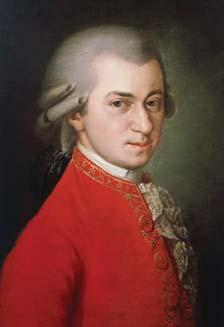
Composed: 1786
Premiere: 1786
Instrumentation: solo piano, flute, 2 oboes, 2 clarinets, 2 bassoons, 2 horns, 2 trumpets, timpani, strings
CSO notable performances: First: November 1958, Max Rudolf conducting with pianist Robert Casadesus. Most Recent: April 2013, Roberto Abbado conducting with pianist Lars Vogt. Notable Pianist: Daniel Barenboim, 1966
Duration: approx. 31 minutes
PROGRAM NOTES
Fanfare Magazine | 49
Wolfgang Amadeus Mozart
For more information about this program, please text PROGRAM to 513.845.3024*.
*By texting to this number, you may receive messages that pertain to the organization and its performances; msg & data rates may apply. Reply HELP to help, STOP to cancel.
in the orchestra prior to the entrance of the piano. Mozart’s typical tonal strategy works powerfully here: the music refuses to leave the turbulent home key of C minor throughout the entire orchestral exposition. An undercurrent of tension mounts as we await, with growing impatience, tonal motion. The piano enters at long last, but not with the main melodic material. Only once the piano breaks into rapidly moving sixteenth notes can we understand the solo instrument as catalyst. The sixteenths take the music away from the tonic toward the sunnier, less intense world of the relative major. There we remain, hearing several new thematic ideas which try to dispel the world of C minor. Excitement builds in the development section, but inevitably the music returns to the main theme in the original key. In most other minor-key concertos, material that originates in the relative major in the exposition returns in the happier key of the tonic major in the recapitulation and thereby lays to rest the movement’s principal tensions. Not here! The recapitulation stays relentlessly in C minor. Once the cadenza ends (artists often improvise or craft their own cadenzas, which is the case during this weekend’s performances), the coda brings the movement to a quiet end that suggests neither resolution nor relaxation.
The insistence on the minor mode in the first movement makes the major-mode opening of the slow movement extraordinarily beautiful. The utter simplicity of this first theme adds to its beauty. The poignant world of the first movement is not to be forgotten, however, as the music returns to C minor for the first of two episodes, featuring the woodwinds.
A halting yet somehow graceful C-minor tune, that never goes more than four measures without stopping, opens the last movement. The pauses in the main theme are filled in a variety of ways in the ensuing variations: first with piano figurations, then bassoon arpeggios, etc. Unlike most minor-mode concerto finales, this last movement does not move decisively to the uncomplicated world of the tonic major. The music twice tantalizes us with almost carefree variations—one in the relative major, one in the tonic major—but it always returns from its journeys to the home key of C minor. And there it ends, with an almost dance-like variation that goes directly into a coda.
—Jonathan D. Kramer
ROBERT SCHUMANN
Born: June 8, 1810, Zwickau, Saxony
Died: July 29, 1856, Bonn, Germany
Symphony No. 1 in B-flat Major, Op. 38, Spring
It took Robert Schumann just four days in January 1841 to draft his Symphony No. 1 and a short few weeks to translate his sketches to a full orchestral score. On March 31, 1841, famed composer-conductor Felix Mendelssohn brought the piece to the Leipzig public with the Gewandhaus Orchestra. Audiences received the performance warmly, and Schumann recorded his pride in the diary he and his pianist-composer wife, Clara, kept, declaring it the most important day of his life. The piece signaled a turning point for its composer, bringing the gratification of an acceptance he craved; orchestras presented the work three more times that year and more than 40 times over the ensuing decade.
Yet writing such a piece did not invariably come easy. Schumann first attempted a symphony in 1832 after a hand injury forced him to pivot

PROGRAM NOTES
50 | 2023–24 SEASON
only fragments of a G minor symphony, but seeds for a complete symphony were sown. Over the remainder of the 1830s, Schumann produced some of his most popular piano pieces and other smallerscale works. By 1839, Clara (to whom Robert was still only betrothed) recognized his advancement: “My highest wish is that he should compose for orchestra—that is his field! May I succeed in persuading him to enter it.” Two months later, Robert reflected on hearing Franz Schubert’s “Great” C major symphony: “I was totally happy, and wished only that you should be my wife and that I also could write such symphonies.” Robert and Clara wed on September 12, 1840, and, a few months later, Robert composed Symphony No. 1, initiating what writers have come to call his “Symphonic Year.” During 1841, he completed the spry Overture, Scherzo and Finale, Op. 52; wrote the first movement of his famed Piano Concerto in A Minor, Op. 54; sketched another incomplete symphony; and composed his next full symphony, though he shelved it until revising it for publication in 1851 as Symphony No. 4, Op. 120.
Clara recorded in their diary that Robert’s inspiration for Symphony No. 1 was a poem by Adolf Böttger. Clara, for one, heard specific images: “I would never finish talking about the tiny buds, the scent of the violets, the fresh green leaves, the birds in the air…. [The] poetic breath of this work has deeply penetrated my innermost being.” Yet, Robert cautioned against programs for instrumental music; he used titles as evocations, not pictorial or narrative analogs. As such, he withheld the symphony’s “Spring” title and sketched-in movement titles. Still, Böttger’s poem is evocative. For the first 10 of its 12 lines, the poem is rather bleak, a lyric address to dreary clouds that obscure the speaker’s view of the heavens. The final couplet entreats concession from the clouds (“Oh, turn, change your course / In the valley, spring blooms forth!”), possibly the symphony’s true provocation.
Much as Symphony No. 1 burst a creative block, its first movement begins with a shattering fanfare. The following slow introduction introduces various musical characters: trembling and sweeping strings, a soaring then tumbling solo flute, more halting brass. Soon, a folk-like dance begins a somewhat conventional first-movement (sonata) form—a middle section traverses winding paths built from snippets of the opening ideas before the movement’s first-section material returns, called in by the fanfare’s reprisal. The strikingly dissimilar, but complementary, second and third movements pair well, respectively conjuring nighttime (Nachtstück) and daytime (Tagstück). The Larghetto movement invokes an antiquity one might hear in a Handel opera, the stuff of regal courtly maneuvers, or maybe a Mozartean sentimental evening romanza. The Scherzo movement abruptly changes the mood, vacillating between brusque and airy waltzes against wholly contrasting trio sections. The finale opens with a bluster, segues to a light dance lasting until brass figures boom out—a country affair interrupted by a militaristic band. Critics have maligned the finale’s lack of Beethovenian profundity, but others have seen it as a self-assured final dance (Kehraus), not searching for gravity or a weighty culmination. The symphony ends as it began, with emphatic insistence, as the whole ensemble joins together with decisive alacrity.
—Jacques Dupuis

Composed: January–March 1841
Premiere: March 31, 1841, Felix Mendelssohn conducting the Leipzig Gewandhaus Orchestra
Instrumentation: 2 flutes, 2 oboes, 2 clarinets, 2 bassoons, 4 horns, 2 trumpets, 3 trombones, timpani, triangle, strings
CSO notable performances: First: February 1896, Frank Van der Stucken conducting. Most Recent: January 2009, Paavo Järvi conducting.
Duration: approx. 30 minutes

PROGRAM NOTES
Fanfare Magazine | 51
Robert Schumann
Celebrating the arts and the joy they bring to life every day.

PNC is proud to be the Pops Se Sponsor and to support the Cincinnati Symphony Orchestra and Cincinnati Pops. Thank you for helping to make the Greater Cincinnati region a beautiful place to call home.
©2022 The PNC Financial Services Group, Inc. All rights reserved. PNC Bank, National Association. Member FDIC CON PDF 0618-0106

THE DOO WOP PROJECT | 2023–24 SEASON
FRI MAR 15, 7:30 pm
SAT MAR 16, 7:30 pm
SUN MAR 17, 2 pm Music Hall
John Morris Russell, conductor Charl Brown, vocalist
Dwayne Cooper, vocalist
John Michael Dias, vocalist
Russell Fischer, vocalist
Dominic Nolfi, vocalist

Stars of Broadway’s smash hits Jersey Boys and Motown: The Musical join JMR and the Pops for a celebration of American pop and rock history—from foundational tunes of groups like the Crests and Flamingos through their influences on the sounds of Smokey Robinson, The Temptations and The Four Seasons all the way to Doo Wop-ified versions of modern musicians like Michael Jackson and Jason Mraz.

Selections will be announced from the stage. There will be one 20-minute intermission.
The Cincinnati Pops Orchestra is grateful to Pops Season Sponsor PNC and Show Sponsor Pyro-Technical Investigations
The Cincinnati Pops Orchestra is grateful to Mr. and Mrs. Val Cook, whose generous endowment supports this performance.
The Cincinnati Symphony Orchestra is grateful for the support of the Louise Dieterle Nippert Musical Arts Fund of the Greenacres Foundation and the Nina Browne Parker Trust, and for the thousands of people who give generously to the ArtsWave Community Campaign, the region’s primary source for arts funding. This project was supported in part by the Ohio Arts Council, which receives support from the State of Ohio and the National Endowment for the Arts
The Cincinnati Symphony Orchestra in-orchestra Steinway piano is made possible in part by the Jacob G. Schmidlapp Trust
Fanfare Magazine | 53
WINSTEAD CHAMBER SERIES | 2023–24 SEASON

THU MAR 21, 7:30 pm
Harry T. Wilks Studio, Music Hall
Ruth GIPPS
Pan and Apollo for Two Oboes, English Horn (1921–1999) and Harp, Op. 78
Lon Bussell, oboe
Emily Beare, oboe
Christopher Philpotts, English horn
Gillian Benet Sella, harp
Johannes BRAHMS
Trio for Piano, Clarinet and Cello in A Minor, Op. 114 (1833–1897)
Allegro
Adagio
Andantino grazioso
Allegro
Joseph Morris, clarinet
Hiro Matsuo, cello
Michael Chertock, piano
INTERMISSION
Piotr Ilyich TCHAIKOVSKY Trio for Piano, Violin and Cello in A Minor, Op. 50 (1840–1893)
Pezzo elegiaco trans. Stock
Tema con variazioni
Finale e Coda
Charles Morey, violin
Daniel Kaler, cello Dror Biran, piano
TIMING OK
This performance is approximately 110 minutes long, including intermission.
YOU’RE INVITED to greet the musicians after the concert.
The Winstead Chamber Series is endowed by a generous gift from the estate of former CSO musician WILLIAM WINSTEAD

54 | 2023–24 SEASON
RUTH GIPPS
Born: February 20, 1921, Bexhill-on-Sea, England
Died: February 23, 1999, Framfield, Sussex, England
Pan and Apollo for Two Oboes, English Horn and Harp, Op. 78
Ruth Gipps is recognized as one of Britain’s best composers. Her music is playful and romantic in character and a delight to hear. Following the path of Vaughan Williams, Bliss, Walton, Bax and others, her writing prominently displays their influence.
Sadly, she has not yet received the recognition she justly deserves.
The composition Pan and Apollo was written in 1992 and portrays a contest of musical prowess between Apollo and his lyre and Pan and his pipe. The contest was adjudicated by Midas, who pronounced Pan the winner. Angry at the judgment, Apollo expressed his anger by affixing some rather large donkey ears to Midas’ head as punishment.
This piece is a short, but sweet, representation of that contest.
Writing about her Pan and Apollo, Ruth Gipps noted the following:
Pipes v. Lyre: “Midas was the judge of a musical competition between Pan and Apollo, and for deciding against Apollo was punished with ass’s ears which he tried to conceal under his Phrygian cap. He revealed their existence only to his barber, who tried to relieve himself of the intolerable burden of the secret by digging a hole in the earth in a secluded spot, into which he whispered the secret.” (John Pinsent: Greek Mythology)
Of course, the reeds that sprang up kept whispering, “Midas has ass’s ears.”
This story is one of the earliest examples of the argument between wind and string players; we do not know who adjudicated the adjudicator. The music of this short work represents only the competition itself, with both gods in extrovert mood.
—Christopher Philpotts
JOHANNES BRAHMS
Born: May 7, 1833, Hamburg, Germany
Died: April 3, 1897, Vienna, Austria
Trio for Piano, Clarinet and Cello in A Minor, Op. 114
By the year 1890, Johannes Brahms had declared his String Quintet in G Major, Op. 111 his swan song and announced his retirement from composing. The previous several years had not been easy ones, and he confessed to a confidante that he felt he had achieved enough: “Here I had before me a carefree old age and could enjoy it in peace.” However, when he met the clarinetist Richard Mühlfeld, he found himself captivated by the artist’s expressive control of the instrument. Thus, in the summer of 1891 he composed his Trio in A Minor, Op. 114, and the Clarinet Quintet in B Minor, Op. 115. Two other pieces for Mühlfeld eventually followed: the Clarinet Sonatas in E-flat Major and F Minor, Op. 120.
Mühlfeld was employed in the court orchestra of Meiningen and had already established himself as an artist of the first rank. As Clara Schumann later remarked, “The man played so wonderfully, he might

Composed: 1992
Premiere: Unknown
Duration: approx. 6 minutes
MAR 21 PROGRAM NOTES
Fanfare Magazine | 55
Ruth Gipps

Johannes Brahms
Composed: 1891
Premiere: December 12, 1891 in Berlin with Richard Mühlfeld playing clarinet, Robert Hausmann playing cello and Brahms at the piano
Duration: approx. 23 minutes
For more information about this program, please text PROGRAM to 513.845.3024*.
*By texting to this number, you may receive messages that pertain to the organization and its performances; msg & data rates may apply. Reply HELP to help, STOP to cancel.
have been specially created for your works. I marveled at his profound simplicity and the subtlety of his understanding.”
Brahms had previously shown his fondness for the clarinet in his orchestral works, in particular the expressive possibilities of its three registers: the round, clear upper range, the soulful middle and the dark chocolate bottom end. However, even though the Trio Op. 114 was to be something of a showpiece for Mühlfeld, Brahms did not neglect the other two instruments; the cello takes center stage as often as the clarinet, and all three instruments are perfectly integrated throughout the work. Brahms’ friend, Eusebius Mandyczewski, marveled at the way in which the composer took full advantage of the lyrical qualities of the instrument. He wrote to the composer: “The inventive conception of the themes, born of the spirit of the wind instrument and, more especially, the harmonious blending of the tones of the clarinet and the cello, are magnificent; it is as though the instruments were in love with each other.”
The opening movement introduces a plaintive cello tune, to which the clarinet responds with an arching line. The piano breaks the mood with accented triplets, and these two subjects combine into a sequence of scales that pushes the movement to its first climactic point. The following arioso duet hints at exoticism before coming to rest once again in A minor. Brahms launches the development section with a chain of sixteenthnote scales that sweep the listener through several remote keys before once again settling in the home key. The brief coda churns up just the smoldering sparks of the previous themes before bringing the movement to a close.
The Adagio begins with a delicate aria that the clarinet soon hands off to the cello, while singing a countermelody in the octave above. The placid mood soon gives way to a deeply stirring second theme in which each instrument takes its turn accompanying the others before the movement returns once again to the tranquility of the opening.
The third movement is quintessential Brahms: an Andantino grazioso waltz of infectious charm that is only slightly perturbed by the trio section, itself the quiet memory of a Bavarian Ländler. The composer abbreviates the return of the opening waltz before coming to rest with several quiet chords in the piano.
The final movement recalls the musical language of a younger Brahms from decades previous: turbulence, harmonic tension and rhythmic displacement are among its most salient characteristics, as are fleeting hints of the fire and alla zingarese spirit that had been hallmarks of earlier works such as the Piano Quartet No. 1 in G Minor, Op. 25. In this movement there is no chance of a peaceful ending. Instead, he weaves several canons together throughout the piano, cello and clarinet lines until the music gathers momentum and crashes to a decisive close.
—Dr. Scot Buzza

PROGRAM NOTES
56 | 2023–24 SEASON
PIOTR ILYICH TCHAIKOVSKY (trans. Stock)
Born: May 7, 1840, Votkinsk, Russia
Died: November 6, 1893, Saint Petersburg, Russia
Trio for Piano, Violin and Cello in A Minor, Op. 50
Nadezhda Filaretovna von Meck was a 19th-century Russian businesswoman and patron of the arts, especially music. She supported several well-known artists of the day, including Nikolai Rubinstein and Claude Debussy, but she is perhaps best known for her relationship to Piotr Ilyich Tchaikovsky, whom she supported financially for 13 years, under the condition that they were never to meet in person. When von Meck requested a piano trio from Tchaikovsky for her in-house musicians to perform, he demurred:
Is it not unnatural to combine three such individual instruments as violin, cello and piano? The qualities of each of them are lost. The lyrical and wonderfully warm timbres produced by the violin and the cello can be accompanied by the king of instruments, but the latter tries in vain to show its ability to sing against its rivals.
Yet, the composer did indeed set out to write a trio the following year, explaining, with characteristic doubt, “I won’t hide from you the great effort of will required to set down my musical ideas in this new and unusual form. But I should like to overcome all these difficulties.”
It proved to be a sprawling work: although consisting of only two movements, the Piano Trio Op. 50 is a marathon to perform. The two-part structure of the second movement combines with the opening movement to create what is essentially a three-movement work. Titled Pezzo elegiaco (“Elegiac Piece”) the first movement is a lament of three heartfelt tunes braided together with their variations into an extended quasi-sonata form, capped with a coda that boils over into an agitated animato in A major before settling back down into A minor.
The second movement is a sequence of variations on a cantabile theme not unlike those that enrich his orchestral works: organic enough to be convincingly folk-like and convincingly Russian in spite of being fully a product of the composer’s imagination. The prodigious diversity of the subsequent variations shows how rich that imagination is: each variation reveals its own character and charm while underscoring Tchaikovsky’s genius. Among them, the composer includes a fugue, a mazurka, an elegy and a waltz to a new tune using the theme as a countermelody. The final variation, Allegro risoluto e con fuoco, begins regally but soon transforms into a Russian Festival Finale of symphonic proportions. The coda, Andante con moto, is fully operatic in its passion and in its drama, winding down only in the final nine measures to leave the listener exhausted and spent.
Piotr Ilyich Tchaikovsky’s piano trio is sui generis in its scope and in its aspirations, in its challenges to its performers and in its rewards. But in its 180-degree swings from elation to despair, from comedy to tragedy, from stoicism to pathos, it is impossible to see anything other than a reflection of the internalized angst of the composer himself.
—Dr. Scot Buzza

Composed: 1881–82
Premiere: October 30, 1882 for the Russian Musical Society in Moscow
Duration: approx. 50 minutes

PROGRAM NOTES
Fanfare Magazine | 57
Piotr Ilyich Tchaikovsky





Emmy Award Winner Re R gionaal - Interviiew/DDiiscuussioon P Program SATURDAY 6:30PM CET SUNDAY 8:30 PM CET ARTS Join Barbara Kellar as she showcases artists and cultural leaders from the Greater Cincinnati community. www.CETconnect.org
HEROIC STRAUSS & MELODIC MOZART | 2023–24 SEASON
SAT MAR 23, 7:30 pm
SUN MAR 24, 2 pm Music Hall
SIR MARK ELDER, conductor PAVEL KOLESNIKOV, piano
Richard WAGNER Overture to Tannhäuser (1813–1883)


Wolfgang Amadeus Concerto No. 17 in G Major for Piano and Orchestra, K. 453 MOZART Allegro (1756–1791) Andante Allegretto
INTERMISSION
Richard STRAUSS Ein Heldenleben (“A Hero’s Life”), Op. 40 (1864–1949)
Stefani Matsuo, violin
These performances are approximately 130 minutes long, including intermission.
The CSO is grateful to CSO Season Sponsor Western & Southern Financial Group
These concerts are endowed by Martha Anness, Priscilla Haffner & Sally Skidmore in loving memory of their mother, LaVaughn Scholl Garrison, a longtime patron of the Orchestra.
The Cincinnati Symphony Orchestra is grateful for the support of the Louise Dieterle Nippert Musical Arts Fund of the Greenacres Foundation and the Nina Browne Parker Trust, and for the thousands of people who give generously to the ArtsWave Community Campaign, the region’s primary source for arts funding. This project was supported in part by the Ohio Arts Council, which receives support from the State of Ohio and the National Endowment for the Arts
Pre-Concert Talks are made possible by an endowed gift from Melody Sawyer Richardson
WGUC is the Media Partner for these concerts.
The Cincinnati Symphony Orchestra in-orchestra Steinway piano is made possible in part by the Jacob G. Schmidlapp Trust
Listen to this program on 90.9 WGUC May 5, 2024 at 8 pm, followed by 30 days of streaming at cincinnatisymphony.org/replay.


Fanfare Magazine | 59

Composed: 1843–1845
Premiere: October 19, 1845 in Dresden, conducted by the composer
Instrumentation:
2 flutes, piccolo, 2 oboes, 2 clarinets, 2 bassoons, 4 horns, 3 trumpets, 3 trombones, tuba, timpani, crash cymbals, suspended cymbals, tambourine, triangle, strings
CSO notable performances: First: April 1895, Henry Schradieck conducting. Most Recent: September 2007, Paavo Järvi conducting. Notable: June 1996 as part of the Olympic Torch Ceremony at Sawyer Point. Recording: 1994, Wagner for Orchestra, Jesús López Cobos conducting.
Duration: approx. 15 minutes
RICHARD WAGNER
Born: May 22, 1813, Leipzig, Germany
Died: February 13, 1883, Venice, Italy
Overture to Tannhäuser
Although Richard Wagner is universally known as a composer, he also considered himself—as the author of the librettos for all of his operas, a huge autobiography and an avalanche of theoretical and philosophical tracts voluminous enough to literally fill a shelf—a poet and a man of letters. The sources of inspiration for his librettos were almost always the history and myths of Germany. The same was true when he was in search of an operatic subject while on vacation in the early summer of 1842 at the northern Bohemian town of Teplitz: he devoured a wide variety of 19thcentury retellings of the ancient tales of the legendary Medieval singing contests. The accounts, by E.T.A. Hoffmann, the Brothers Grimm, Heine, Ludwig Tieck and others, concerned a historical 13th-century Minnesinger (i.e., a German poet-musician of noble birth) named Heinrich von Ofterdingen, a contest of song held in 1208 at the Wartburg Castle (near Eisenach, today remembered as Johann Sebastian Bach’s birthplace), and a (perhaps) mythical character called Tannhäuser who succumbed to the seductions of Venus in her mountain enclave and sought forgiveness through a pilgrimage to Rome and the love of a pure woman. Before he left Teplitz, Wagner had sketched an operatic scenario from these sources and, the following spring, worked it into a full libretto originally titled The Mountain of Venus, but later renamed Tannhäuser to thwart lascivious comment. The three acts of the opera were composed in 1844, while he was conductor of the Royal Opera House in Dresden; the orchestration was completed on April 15, 1845. Wagner directed the work’s premiere in Dresden on October 19, 1845 to an audience initially bemused by his attempts to weld together the individual numbers of the opera through accompanied narratives and instrumental transitions. By the third performance, however, Tannhäuser proved to be a success. It was repeated in Dresden in 1846 and 1847, with some revisions to clarify its dramatic structure, and was introduced into the repertories of the major European opera houses over the next decade. Tannhäuser was the first of Wagner’s operas to be staged in America (Stadt Theatre, New York, April 4, 1859; the Overture was played here as early as 1853, in Boston).
The opera opens in a grotto in the Venusberg, a mountain where Venus, the goddess of love, is said by German legend to have taken refuge after the fall of ancient civilization. Tannhäuser has forsaken the world to enjoy her sensual pleasures, but after a year he longs to return home and find forgiveness. He invokes the name of the Virgin Mary, and the Venusberg is swallowed by darkness. Tannhäuser finds himself in a valley below Wartburg Castle, where he is passed by a band of pilgrims journeying to Rome. His friend Wolfram recognizes him, tells him how Elisabeth, his betrothed, has grieved during his absence, and invites him to the Wartburg to see her and to take part in a singing contest. Elisabeth is joyous at Tannhäuser’s return, and they reassure each other of their love. At the contest, however, Tannhäuser sings a rhapsody to Venus and the pleasures of carnal love, which so enrages the assembled knights and ladies that Elisabeth must protect him from their threats of violence. Tannhäuser agrees to join the pilgrims to atone for his sins. Several months later, he returns from Rome, alone, haggard and in rags. He tells Wolfram that the Pope has said it is as impossible for someone who has dwelled in the Venusberg to be forgiven as for the Papal staff to sprout leaves. He considers going again to Venus, but withstands that temptation
MAR 23–24 PROGRAM NOTES
Richard Wagner
60 | 2023–24 SEASON
when Wolfram mentions Elisabeth’s name. Elisabeth, however, not knowing of Tannhäuser’s return and despairing of ever seeing her lover again, has died of grief. Her bier is carried past Tannhäuser, who kneels next to it and also dies. As morning dawns, pilgrims from Rome arrive bearing the Pope’s staff, which has miraculously grown leaves.
The Overture to Tannhäuser encapsulates in musical terms the dramatic conflict between the sacred love of Elisabeth and the profane love of Venus. For a series of orchestral concerts of his music in Zurich in 1853, Wagner wrote a grandiloquent synopsis of the Overture’s emotional progression, which reads in part:
At first the orchestra introduces us to the “Pilgrims’ Chorus” alone. It approaches, swells to a mighty outpouring, and finally passes into the distance. As night falls, magic visions show themselves. A rosy mist swirls upward, and the blurred motions of a fearsomely voluptuous dance are revealed.... This is the seductive magic of the Venusberg. Lured by the tempting vision, Tannhäuser draws near. It is Venus herself who appears to him.... His heart and senses glow, the blood in his veins takes fire, an irresistible attraction draws him nearer, and he steps before the goddess. In drunken joy the Bacchantes rush upon him and draw him into their wild dance.... The storm subsides. Only a soft, sensuous moan lingers in the air over the spot where the unholy ecstasy held sway. Yet already the morning dawns: from the far distance the pilgrim’s chorus is heard again. As it draws ever nearer and day repulses night, those lingering moans are transfigured into a murmur of joy so that at last, when the sun rises in splendor and the pilgrims’ chorus proclaims salvation to all the world, the joyous murmur swells to the mightiest, noblest rejoicing. Redeemed from the curse of ungodly shame, the Venusberg itself joins its exultant voice to the godly chant.
—Dr. Richard E. Rodda
WOLFGANG AMADEUS MOZART
Born: January 27, 1756, Salzburg, Austria
Died: December 5, 1791, Vienna, Austria
Concerto No. 17 in G Major for Piano and Orchestra, K. 453
One of Mozart’s favorite and most talented pupils in 1784 was Barbara Ployer, daughter of Gottfried Ignaz von Ployer, the Viennese agent at the Habsburg court (today he would probably be called a lobbyist) for Mozart’s old employer and nemesis, the Archbishop Hieronymus von Colloredo of Salzburg. Mozart gave Barbara lessons during the winter at the family’s town home in the Lugeck, near St. Stephen’s Cathedral, and in the summer at their villa in the nearby village of Döbling, north of the city, on the way to Grinzing. On February 9, 1784, he finished for her the Concerto in E-flat Major (No. 14, K. 449), which “Fräulein Babette” (as Mozart called her) first played on March 23. This handsome piece was so well received in the Ployer household that Mozart created for it a sequel, the G Major Concerto (K. 453), and presented it to his student/patron just three weeks later, on April 12. (During that amazingly fertile spring season, Mozart wrote two more piano concertos, K. 450 and K. 451, between the works for Babette.) A performance was arranged at the Ployer residence in Döbling for June 13. Mozart took advantage of the occasion to invite the famous composer Giovanni Paisiello, who was passing through Vienna on his way back to Naples after serving for eight years as opera composer to the Empress Catherine in St. Petersburg, to accompany him “in order that he might hear my composition and my pupil.” In addition to Babette’s

Composed: 1784
Premiere: June 13, 1784 in Vienna, Barbara Ployer as soloist
Instrumentation: solo piano, flute, 2 oboes, 2 bassoons, 2 horns, strings
CSO notable performances: First: February 1957, Thor Johnson conducting with pianist Lukas Foss. Most Recent: March 2021, Louis Langrée conducting with pianist Conrad Tao.
Duration: approx. 30 minutes
PROGRAM NOTES
Fanfare Magazine | 61
Wolfgang Amadeus Mozart

Composed: 1898
Premiere: March 3, 1899 in Frankfurt, the composer conducting
Instrumentation: 3 flutes, piccolo, 4 oboes (incl. English horn), 2 clarinets, E-flat clarinet, bass clarinet, 3 bassoons, contrabassoon, 8 horns, 5 trumpets, 3 trombones, tenor tuba, tuba, timpani, bass drum, crash cymbals, field drum, snare drum, suspended cymbals, tam-tam, triangle, 2 harps, strings
CSO notable performances: First: at the 1912 May Festival, Ernst Kunwald conducting.
First CSO: April 1927, Fritz Reiner conducting. Most Recent: April 2011, Rafael Frühbeck de Burgos conducting. Notable: March 1999 at Carnegie Hall, Jesús López Cobos conducting, and February 1994, Iván Fischer conducting.
Duration: approx. 44 minutes
rendition of the new work that evening, Mozart joined his student in the Concerto for Two Pianos (K. 365) and then took part in his recent Quintet for Piano and Winds (K. 452). One wonders if Paisiello’s stronger emotion that night was pleasure or envy. At any rate, Mozart thought highly of the new G major concerto; it was one of only six such works that he published during his lifetime.
The concerto begins with the best of good cheer. The movement’s main theme is a peerless Mozartian mix of march, song and symphony, bursting with the beautiful melodic kernels that incited his contemporaries to jealousy over his lyrical gifts. The violins present a complementary motive, a close-interval phrase that finds an echo in the soulful theme that opens the Andante. After its entry, the piano usurps and elaborates both themes and adds a new one of its own between them in an unaccompanied passage. The soloist pauses while a vigorous tutti leads to the stronger sentiments of the development section, largely based on a little arpeggiated motive previously introduced in the orchestral introduction. The recapitulation returns the earlier material and allows for a solo cadenza, for which Mozart left not one but two notated realizations.
The Andante is one of those wondrous, formally unclassifiable slow movements that abound in Mozart’s piano concertos. It opens with what English musicologist Sir Donald Tovey called “a solemn, pleading phrase” in the violins and a limpid melody shared among the woodwinds. The piano enters, ponders some of the material already presented, and then undertakes a thoughtful dialogue with the members of the orchestra for the remainder of the movement. Such thorough, symphonic integration of soloist and ensemble was one of Mozart’s greatest contributions to the concerto form. The finale is a crystalline set of variations that concludes with a dashing coda in quicker tempo, the technique Mozart often used to round off the acts of his operatic masterpieces.
—Dr. Richard E. Rodda
RICHARD STRAUSS
Born: June 11, 1864, Munich, Germany
Died: September 9, 1949, Garmisch-Partenkirchen, Germany
Ein Heldenleben (“A Hero’s Life”), Op. 40
“No man is perhaps a hero to his valet; but Strauss is evidently a hero to himself.” The autobiographical nature of Strauss’ Ein Heldenleben did not slip past critic Philip Hale, nor has it been less than obvious to most anyone else. Literary autobiography and self-portraiture (à la Rembrandt) had been acceptable artistic genres for centuries. So why not music? Why not Strauss?
In 1898, the year he composed Ein Heldenleben, Strauss was the most talked-about composer in the world. This work was the seventh of his orchestral tone poems, each new arrival greeted with a flurry of international interest by press and public alike. They (Don Juan, Death and Transfiguration, Also sprach Zarathustra, et al.) were sensational works that carried programmatic music and the art of orchestration to heights no one else, except perhaps Berlioz and Wagner, had envisioned. Strauss was also one of the preeminent conductors of the day, and when he composed Ein Heldenleben he was principal conductor of the Berlin Court Opera and past music director of the Berlin Philharmonic. He parlayed all these activities into an immense income, and he was among the wealthiest composers of concert music ever. With all this, he had a right to be proud.
Early in 1898, Strauss undertook to portray a general overview of the
 Richard Strauss
Richard Strauss
PROGRAM NOTES 62 | 2023–24 SEASON
Heldenleben. The first three sections portray the participating characters: “The Hero” (“his pride, emotional nature, iron will, richness of imagination, inflexible and well-directed determination supplant low-spirited and sullen obstinacy,” noted the modest composer), “His Adversaries” (Strauss said nothing about them—the cackling, strident music speaks for itself), and “His Beloved” (“It’s my wife I wanted to show. She is very complex, very feminine, a little perverse, a little coquettish.”). The fourth section, in which the hero girds his loins to do battle against his enemies, was considered the height of modernity when it was new. Section five is an ingenious review of at least 30 snippets selected by Strauss from nine of his earlier works. The finale tells of the hero’s withdrawal from the earthly struggles to reach “perfection in contemplative contentment,” in the obscure words of the composer.
For Strauss’ appearance as guest conductor with the New York Philharmonic in 1921, Lawrence Gilman prepared the following synopsis of Ein Heldenleben, to which the composer gave his approval:
1. The Hero. We hear first the theme of the Hero, the valorous opening subject for the low strings and horns. Subsidiary themes picture different aspects of the Hero’s nature—his pride, depth of feeling, inflexibility, sensitiveness, imagination.
2. The Hero’s Adversaries. Herein are pictured the Hero’s detractors—an envious and malicious crew, filled with all uncharitableness. The theme of the Hero appears in sad and meditative guise. But his dauntless courage soon reasserts itself, and the mocking hordes are put to rout.
3. The Hero’s Companion. A solo violin introduces the Hero’s Beloved. She reveals herself as capricious, an inconsequent trifler, an elaborate coquette. After an earnest phrase heard again and again, the orchestra breaks into a love song of heroic sweep and passion. As the ecstasy subsides, the mocking voices of the foe are heard remotely.
4. The Hero’s Battlefield. But suddenly the call to arms is heard. Distant fanfares (trumpets behind the scenes) summon the Hero to the conflict. The orchestra becomes a battlefield. Through the dust and uproar we are reminded of the inspiration of the Beloved, which sustains and heartens the champion. A triumphant orchestral outburst proclaims his victory.
5. The Hero’s Works of Peace. Now begins a celebration of the Hero’s victories of peace, suggesting his spiritual evolution and achievements. We hear quotations of themes from Strauss’ earlier works: reminiscences of Death and Transfiguration, Don Quixote, Don Juan, Till Eulenspiegel, Macbeth, Also sprach Zarathustra, the music-drama Guntram, and the exquisite song Traum durch die Dämmerung (“Dream at Twilight”).
6. The Hero’s Retreat from the World, and Fulfillment. The tubas mutter the uncouth and sinister phrase which voices the dull contempt of the benighted adversaries. Furiously, the Hero rebels, and the orchestra rages. But his anger subsides. Over a persistent tapping of the kettledrum, the English horn sings a pastoral version of his theme. An agitated memory of storm and strife again disturbs his mood. But the solo violin reminds him of the consoling presence of the Beloved One. Peace descends upon the spirit of the Hero. The finale, majestic and serene, recalls the words of the luminous Shankara: “For the circling world is like a dream, crowded with desires and hates; in its own time it shines as real, but on awakening it becomes unreal.”
—Dr. Richard E. Rodda
For more information about this program, please text PROGRAM to 513.845.3024*.
*By texting to this number, you may receive messages that pertain to the organization and its performances; msg & data rates may apply. Reply HELP to help, STOP to cancel.

PROGRAM NOTES
Fanfare Magazine | 63
INVEST ENGAGE INNOVATE LEAD
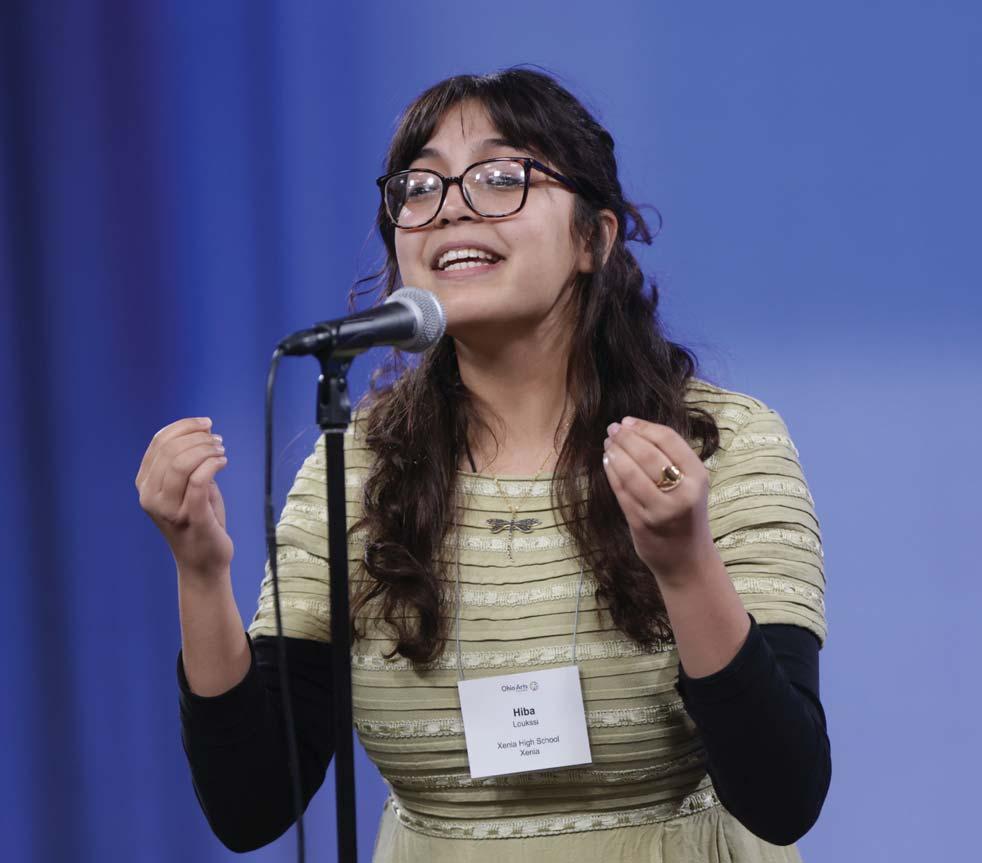
Program Spotlight: POETRY OUT LOUD
Ohio Poetry
Loud State
Hiba Loukssi
Xenia High School (Greene County) reciting a poem at the 2023 state finals. She
at the national finals in Washington, D.C. Image credit: Terry Gilliam
Investing state and federal dollars, the Ohio Arts Council funds and supports quality arts experiences for all Ohioans to strengthen communities culturally, educationally, and economically.
Learn more about our grant programs and resources, find your next arts experience, or connect: OAC.OHIO.GOV.
Out
Champion
of
competed

TUE MAR 26, 7:30 pm Music Hall
BEN RECTOR & CODY FRY: Live with the Cincinnati Pops JASON SEBER,conductor

Ben Rector’s piano-driven pop has garnered more than one billion streams and been featured in hundreds of TV shows and films. He teams up with Cody Fry, who achieved meteoric success on TikTok with his song “I Hear a Symphony” in 2021. That same year, Fry was nominated for a Grammy for his cover of “Eleanor Rigby.”

After selling out two shows at the Kennedy Center with the National Symphony Orchestra, platinum-selling indie superstar Ben Rector and viral TikTok singer/songwriter sensation Cody Fry bring their magic to Music Hall with the Pops—a one-of-a-kind acoustic show that features the intimacy of guitar and piano with the strength of a full symphony orchestra.
Selections will be announced from the stage. There is no intermission.
The Cincinnati Pops Orchestra is grateful to Pops Season Sponsor PNC
The Cincinnati Symphony Orchestra is grateful for the support of the Louise Dieterle Nippert Musical Arts Fund of the Greenacres Foundation and the Nina Browne Parker Trust, and for the thousands of people who give generously to the ArtsWave Community Campaign, the region’s primary source for arts funding. This project was supported in part by the Ohio Arts Council, which receives support from the State of Ohio and the National Endowment for the Arts
The Cincinnati Symphony Orchestra in-orchestra Steinway piano is made possible in part by the Jacob G. Schmidlapp Trust
RECTOR & CODY FRY | 2023–24
BEN
SEASON
Fanfare Magazine | 65
TCHAIKOVSKY & NIELSEN | 2023–24 SEASON

FRI MAR 29, 11 am SAT MAR 30, 7:30 pm
Music Hall
RYAN BANCROFT, conductor INON BARNATAN, piano
Samuel Ballade in A Minor, Op. 33 COLERIDGE-TAYLOR (1875–1912)
Piotr Ilyich Concerto No. 1 in B-flat Minor for Piano TCHAIKOVSKY and Orchestra, Op. 23 (1840–1893)
Allegro non troppo e molto maestoso. Allegro con spirito Andantino semplice. Prestissimo. Andante semplice
Allegro con fuoco
INTERMISSION
Carl NIELSEN Symphony No. 4, Op. 29, The Inextinguishable (1865–1931)
Allegro—
Poco allegretto—
Poco adagio quasi andante—
Allegro
These performances are approximately 120 minutes long, including intermission.
The CSO is grateful to CSO Season Sponsor Western & Southern Financial Group
These concerts are endowed by Martha Anness, Priscilla Haffner & Sally Skidmore in loving memory of their mother, LaVaughn Scholl Garrison, a longtime patron of the Orchestra.
The Cincinnati Symphony Orchestra is grateful for the support of the Louise Dieterle Nippert Musical Arts Fund of the Greenacres Foundation and the Nina Browne Parker Trust, and for the thousands of people who give generously to the ArtsWave Community Campaign, the region’s primary source for arts funding. This project was supported in part by the Ohio Arts Council, which receives support from the State of Ohio and the National Endowment for the Arts
Pre-Concert Talks are made possible by an endowed gift from Melody Sawyer Richardson
WGUC is the Media Partner for these concerts.
The Cincinnati Symphony Orchestra in-orchestra Steinway piano is made possible in part by the Jacob G. Schmidlapp Trust
Listen to this program on 90.9 WGUC May 12, 2024 at 8 pm, followed by 30 days of streaming at cincinnatisymphony.org/replay.

66 | 2023–24 SEASON
SAMUEL COLERIDGE-TAYLOR
Born: August 15, 1875, Holborn, London, England
Died: September 1, 1912, Croydon, England
Ballade in A Minor, Op. 33
Samuel Coleridge-Taylor (named after the English Poet) was the son of Alice Hare Martin and Daniel Peter Hughes Taylor. Daniel was Creole (Krio) from Sierra Leone and studied Medicine in London, where, presumably, he met Alice. They were never married, and it is unclear if Daniel knew of his son before leaving London to become an administrator in West Africa. Samuel lived with his mother and her father, Benjamin Holmans, who played the violin and taught the instrument to young Samuel. Grandfather Benjamin quickly recognized Samuel’s abilities and paid for him to have violin lessons. At age 15, Samuel attended the Royal College of Music, where he later switched from violin to composition, studying (1893–97) under the venerable and musically highly conservative Charles Villiers Stanford (teacher of Gustav Holst, Ralph Vaughan Williams, Rebecca Clarke, Frank Bridge and many others). After graduation, Samuel was appointed professor at the Crystal Palace School of Music and conducted the Croydon Conservatoire orchestra.
Novello & Co. published Coleridge-Taylor’s first work in 1891, and August J. Jaeger, head of the firm’s publishing department, became an avid advocate for the young composer. Jaeger is immortalized in Variation No. 9, “Nimrod,” of Edward Elgar’s Enigma Variations. It is this triangle of connections (Coleridge-Taylor, Jaeger and Elgar) that led to the creation and premiere of Coleridge-Taylor’s Ballade in A Minor.
In advance of the 1898 Three Choirs Festival, Elgar received a request to compose a work for the Festival. On April 17, 1898, Elgar wrote:
I am sorry I am too busy to do so. I wish, wish, wish you would ask Coleridge-Taylor to do it. He still wants recognition and is far away the cleverest fellow amongst the young men. Please don’t let your Committee throw away the chance of doing a good act!
The Festival administrators ignored the advice from Elgar and asked Edward German, but Jaeger inserted himself in May 1898:
My friend Mr. Elgar told me a week ago that he has refused an offer to write an orchestral work for your Festival…. My object in writing is to draw your attention to a young friend of mine, S. Coleridge-Taylor, who is most wonderfully gifted and might write your Committee a fine work in a short time…. There is nothing immature or inartistic about his music. It is worth a great deal to me—I mean I value it very highly, because it is so original and often beautiful. Here is a real melodist at last…. At any rate you keep your eye on the lad, and believe me, he is the man of the future in musical England.
With Elgar and Jaeger’s backing, the Festival Committee commissioned Coleridge-Taylor (on May 28, 1898) to write a piece in three months. Coleridge-Taylor conducted the resulting Ballade in A Minor at Gloucester Shire Hall to tremendous applause. This success led the Festival Committee to invite the composer to return three more times: in 1899 to conduct his Solemn Prelude (recently reconstructed and published by Faber Music), in 1990 for his song cycle for contralto and orchestra, The Soul’s Expression, and in 1903 to premiere and conduct his The Atonement
While writing the Ballade in A Minor, he was also completing his most well-known composition, Hiawatha’s Wedding Feast, which premiered at the Royal College of Music on November 11, 1898. The resounding success of Hiawatha’s Wedding Feast brought Coleridge-Taylor to the United States in 1904, where he conducted the Coleridge-Taylor Choral Society,
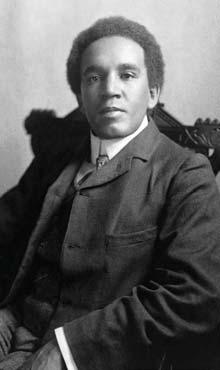
Composed: 1898
Premiere: 1898 at the Three Choirs Festival in Gloucester, England, conducted by the composer
Instrumentation: 2 flutes, piccolo, 2 oboes, 2 clarinets, 2 bassoons, 4 horns, 2 trumpets, 3 trombones, tuba, timpani, crash cymbals, strings
CSO notable performances: These are the first CSO performances of the Ballade.
Duration: approx. 13 minutes
MAR 29–30 PROGRAM NOTES
Samuel Coleridge-Taylor
Fanfare Magazine | 67

Composed: 1874–75; revised 1889
Premiere: October 25, 1875 in Boston, Benjamin Johnson Lang conducting, Hans von Bülow, piano
Instrumentation: solo piano, 2 flutes, 2 oboes, 2 clarinets, 2 bassoons, 4 horns, 2 trumpets, 3 trombones, timpani, strings
CSO notable performances: First: April 1895 conducted by Henry Schradieck with pianist Albino Gorno. Most Recent: October 2023 conducted by Louis Langrée with pianist Clayton Stephenson as part of the inaugural Nina Simon Piano Competition Concerto Finals. Most Recent: November 2018 conducted by Hannu Lintu with pianist Yevgeny Sudbin. Notable Pianists: Teresa Carreño (1910), Vladimir Horowitz (1928 & 1934), Arthur Rubinstein (1941 & 1959), Claudio Arrau (1953), Van Cliburn (1965 and 1970—Riverfront Stadium performance), Lorin Hollander (1966, including several dates on the World Tour, and 1967) and André Watts (1973)
Duration: approx. 32 minutes
accompanied by the U.S. Marine Band. He visited President Theodore Roosevelt at the White House during this trip. He again visited the U.S. in 1906 and 1910.
By all accounts, Coleridge-Taylor was highly sought after and much celebrated during his lifetime. But composers were not well paid and often were required to sell the rights to their works to publishers. Financial hardship plagued Coleridge-Taylor for most of his life, leading to the bout of pneumonia that caused his death at the age of 37.
The term “ballade” was first introduced to instrumental music by Chopin in his Op. 23 Ballade in G Minor. The ballade has no formalized structure, but its common features are compound meter (in this case 6/8) with thematic transformation overseen by some narrative or programmatic intention. Coleridge-Taylor’s Ballade begins with a short chromatic introduction followed by the first theme in a statement by the woodwind section. This first section in A Minor is boisterous, highly accented and dramatic. The horns transition the Ballade to C major for the first statement of the second theme voiced by the strings, which has an “old Hollywood” love song sound with its long, lyrical melody and lush, reaching string texture. After the two themes are established, the rest of the composition develops those themes in different guises and keys before the piece descends in a flourish of dramatic scales to the final resounding A minor chord.
—Tyler M. Secor
PIOTR ILYICH TCHAIKOVSKY
Born: May 7, 1840, Votkinsk, Russia
Died: November 6, 1893, Saint Petersburg, Russia
Concerto No. 1 in B-flat Minor for Piano and Orchestra, Op. 23
At the end of 1874, Tchaikovsky began a piano concerto with the hope of having a success great enough to allow him to leave his irksome teaching post at the Moscow Conservatory. By late December, he had largely sketched out the work, and sought the advice of Nikolai Rubinstein, Director of the Moscow Conservatory and an excellent pianist. Tchaikovsky reported the interview in a letter:
On Christmas Eve 1874, Nikolai asked me to play the Concerto in a classroom of the Conservatory. We agreed to it. I played through the work…. There burst forth from Rubinstein’s mouth a mighty torrent of words. It appeared that my Concerto was utterly worthless, absolutely unplayable; the piece as a whole was bad, trivial, vulgar.
Tchaikovsky was furious. He stormed out of the classroom and made only one change in the score: he obliterated the name of the original dedicatee—Nikolai Rubinstein—and substituted that of the conductor and virtuoso pianist Hans von Bülow, who was performing Tchaikovsky’s piano pieces across Europe. Bülow gladly accepted the dedication and asked to program the premiere on his upcoming American tour. The concerto created such a sensation when it was first heard, in Boston on October 25, 1875, that Bülow played it on 139 of his 172 concerts that season. (Remarkably, Tchaikovsky’s Second Piano Concerto was also premiered in this country, by Madeleine Schiller and the New York Philharmonic Society, conducted by Theodore Thomas, on November 12, 1881.)
Tchaikovsky’s First Piano Concerto opens with a sweeping melody sung by violins and cellos above thunderous chords from the piano. Following a decrescendo and a pause, the piano presents the snapping main theme. (Tchaikovsky said that this curious melody was inspired by a tune he heard sung by a blind beggar at a street fair.) The clarinet announces the lyrical, bittersweet second theme. The simplicity of the
PROGRAM NOTES
68 | 2023–24 SEASON
Piotr Ilyich Tchaikovsky
second movement’s three-part structure (A–B–A) is augured by the purity of its opening—a languid melody in the solo flute. The center of the movement is of very different character, with a quick tempo and a swift, balletic melody. The languid theme and moonlit mood of the first section return to round out the movement. The crisp rhythmic motive presented immediately at the beginning of the finale and then spun into a complete theme by the soloist dominates much of the movement. In the theme’s vigorous full-orchestra guise, it has much of the spirit of a robust Cossack dance. To balance the vigor of this music, a romantic melody is introduced by the violins. The dancing Cossacks repeatedly advance upon this bit of tenderness, which shows a hardy determination. The two themes contend, but the flying Cossacks have the last word.
—Dr. Richard E. Rodda
CARL NIELSEN
Born: June 9, 1865, Odense, Denmark
Died: October 3, 1931, Copenhagen, Denmark
Symphony No. 4, Op. 29, The Inextinguishable
In every man or woman there is something we would wish to know, something which, in spite of all defects and imperfections, we will like once we look into it; and the mere fact that when in reading about a person’s life we often have to say “Yes, I too would have done that!” or “He ought not to have done that!” is valuable because it is life-giving and fructifying.”
“Life-giving and fructifying”: the essential elements of Carl Nielsen’s philosophy and the driving forces of his art, as he expressed them in the opening lines of his little autobiographical book called My Childhood Throughout his life, Nielsen believed in the basic goodness of life and the ability of music to express that goodness and to confirm and enrich it. “Music is Life and, like it, inextinguishable,” he inscribed at the head of the score of the Fourth Symphony, and continued, “Under this title—‘The Inextinguishable’—the composer has endeavored to indicate in one word what the music alone is capable of expressing to the full: The elemental Will of Life.”
It is significant and indicative of Nielsen’s attitudes toward life and music that he produced a symphony about mankind’s “inextinguishable” essence during the dark years of World War I, from 1914 to 1916. He said that there was no specific “program” or “message” behind the Fourth Symphony, other than telling a friend that the violent kettledrum episode in the finale meant “something about the war.” This stunning passage and the inspiring apotheosis that follows it distill the conflicts of this symphony—anarchy and violence against compassion and hope—that Nielsen sought musically to reconcile, or at least to adjudicate, in favor of hope and optimism. In this he was like Beethoven, who also unquestioningly chose the life force, most memorably in the grand major-tonality finales of the predominantly minorkey fifth and ninth symphonies. To create a meaningful final “victory” for his symphonic musical/philosophical essays, Nielsen, like Beethoven, had to create large, integrated structures whose emotional progression would be clear, yet which would not slip into Pollyanna-ish bathos in their closing pages. His music is testimony that he succeeded.
Nielsen’s universal message—that life is inextinguishable—is embodied in the content and musical structure of his superb Fourth Symphony. The symphony comprises four distinct movements played without pause. Rather than simply a quirk of formal thinking, this plan is essential to the impact of the work, just as the direct connection of the scherzo and finale of Beethoven’s Fifth Symphony clarifies the emotional progression of that score. The dynamic motivation driving Nielsen’s “Inextinguishable”

Composed: 1914–16
Premiere: February 1, 1916 in Copenhagen
Instrumentation: 3 flutes (incl. piccolo), 3 oboes, 3 clarinets, 3 bassoons (incl. contrabassoon), 4 horns, 3 trumpets, 3 trombones, tuba, 2 timpani, strings
CSO notable performances: First: October 1965, Max Rudolf conducting.
Most Recent: January 2017, John Storgårds conducting. Recording: Nielsen: Symphony No. 4 “Inextinguishable.” 1966, Max Rudolf conducting.
Duration: approx. 36 minutes
PROGRAM NOTES
Fanfare Magazine | 69
Carl Nielsen
For more information about this program, please text PROGRAM to 513.845.3024*.
*By texting to this number, you may receive messages that pertain to the organization and its performances; msg & data rates may apply. Reply HELP to help, STOP to cancel.
Symphony is the contention of opposing forces represented by contrasting types of music—one fearsome, demonic and threatening; the other, life-affirming, hopeful and inspiring. The single large span of music, divided into four movements, allows for the symbolic struggle between them and the eventual triumph of “good.” The victory is only as sweet and convincing as the struggle was difficult, and Nielsen built this symphony to a luminous, transcendent climax.
The warring forces are set in place early in the first movement. The symphony opens as if in mid-thought with a violent outburst from the full orchestra, characterized by its churning rhythm, biting dissonances and unsettled tonality. These opening gestures, if lifted out of context, would show Nielsen to be a harsh modernist. Taken as the first sentence in an expansive essay, however, their aggressive character is seen to be a necessary foil to the soothing quality of the contrasting theme that follows. The second theme, presented tenderly in close harmony by the clarinets after a brief, chattering episode from the woodwinds, is lyrical, hymnal and long-limbed. It gathers authority to reach a magnificent climax led by the trombones and spread across the full orchestra. The central development section begins quietly with choppy figurations from the solo flute and violins punctuated by a curious, hammering motive on a single pitch in the violas. The two themes of the exposition engage in close combat as the development unfolds, most dramatically in several abrupt exclamations of the first theme that attempt to silence the sweet intervals of the lyrical melody. The two achieve an uneasy truce (first theme triplets in the strings as accompaniment to the second theme in the winds) that is shattered by the ferocity of the recapitulation of the main theme in compressed form. The second theme is given in response, but not with enough conviction to carry the day.
Quiet strokes on the timpani lead without pause to the second movement, a pleasant respite from the rigors of the preceding struggle. The movement is built on a charming country-dance tune announced pertly by the woodwinds. (Nielsen was engaged at the time of the Fourth Symphony in setting much Danish folk poetry to music.) Pizzicato strings accompany long melodic phrases for solo instruments—oboe, clarinet, bassoon, cello—in the movement’s ethereal central section. A shortened recall of the country-dance tune ends the movement and serves as the bridge to the following Adagio.
The struggle of the first movement is rejoined in the Adagio, though the venue is different. A broad melody, intense and lyrical, is initiated by the violins before being taken over by the violas and cellos. Opposing this wide-ranging theme is the movement’s central portion, dominated by a massive crescendo built on a powerful, uneven rhythmic figure. Briefly at the close of the movement, the lyrical mood of the opening is recalled by a few bold entries in the strings that quickly die away. A sudden, whirlwind passage in the strings leads to the finale.
The final scene of Nielsen’s titanic musical battle begins with a silence— the lull before the storm. Through several episodes of contrasting character, it becomes clear that the timpani (scored for two players) represents one pole in the argument, broad lyricism the other. The climactic sequence of the symphony directly opposes the two forces: a violent, pounding timpani assault of terrifying intensity—the most elemental expression of brute force in the entire work—is finally and heroically overcome by a transcendent proclamation from the full orchestra of the hymnal melody from the first movement. The triumph and life-affirming joy of the closing pages of Nielsen’s Inextinguishable Symphony are matched by few other works of the 20th century.
—Dr. Richard E. Rodda

PROGRAM NOTES
70 | 2023–24 SEASON
Selections with

THE DREAM OF AMERICA | 2023–24 SEASON
FRI APR 12, 7:30 pm
SAT APR 13, 7:30 pm
SUN APR 14, 2 pm
Music Hall
John Morris Russell, conductor
Greater Cincinnati Indian Community Choir/Shanti Choir
Cincinnati Baila! Dance Academy
Donauschwaben Schuhplattlers
Ijo-Ugo Performing Arts Company
McGing Irish Dancers
Alliance of Chinese Culture & Arts USA
INTERMISSION
Ellis Island: Dream of America
1. Prologue
2. Words of Helen Cohen, emigrated from Poland, 1920
3. Interlude 1
4. Words of James Apanomith, emigrated from Greece, 1911
5. Interlude 2
6. Words of Lillian Galletta, emigrated from Italy, 1928
7. Interlude 3
8. Words of Lazarus Salamon, emigrated from Hungary, 1920
9. Interlude 4
10. Words of Helen Rosenthal, emigrated from Belgium, 1940
11. Interlude 5
12. Words of Manny Steen, emigrated from Ireland, 1925

13. Interlude 6
14. Words of Katherine Beychok, emigrated from Russia, 1910
15. Epilogue: “The New Colossus” (Emma Lazarus, 1883)
Peter Boyer (b. 1970)
Find more information about this program in the digital program (text PROGRAM to 513.845.3024) and in the Pops Feature article on p. 16 of this issue of Fanfare Magazine
The Cincinnati Pops Orchestra is grateful to Pops Season Sponsor PNC, Concert Sponsors Kelly Dehan and Rick Staudigel and Digital Access Partner CVG Airport Authority This concert is made possible by a generous gift from The Jewish Foundation of Cincinnati
Kelly Dehan and Rick Staudigel




The Cincinnati Symphony Orchestra is grateful for the support of the Louise Dieterle Nippert Musical Arts Fund of the Greenacres Foundation and the Nina Browne Parker Trust, and for the thousands of people who give generously to the ArtsWave Community Campaign, the region’s primary source for arts funding. This project was supported in part by the Ohio Arts Council, which receives support from the State of Ohio and the National Endowment for the Arts
The Cincinnati Symphony Orchestra in-orchestra Steinway piano is made possible in part by the Jacob G. Schmidlapp Trust
Fanfare Magazine | 71
INSTITUTIONAL SUPPORT
Local and national foundations, businesses, and government agencies are integral to the Orchestra’s vibrant performances, community engagement work, and education activities. We are proud to partner with the following funders.

ANNUAL SUPPORT
SEASON AND SERIES SPONSORS

Pops Season
CSO Season
PLATINUM BATON CIRCLE ($50,000+)
ArtsWave
Charles H. Dater Foundation
The Thomas J. Emery Memorial Trust
The Fifth Third Foundation
The Carol Ann and Ralph V. Haile, Jr. Foundation
Carl Jacobs Foundation
H.B., E.W., F.R. Luther Charitable Foundation
The Mellon Foundation
Dr. John & Louise Mulford Fund for the CSO
National Endowment for the Arts
Louise Dieterle Nippert Musical Arts Fund of the Greenacres Foundation
Ohio Arts Council
PNC Bank
Margaret McWilliams Rentschler Fund of Greater Cincinnati Foundation
Nina Browne Parker Trust
Harold C. Schott Foundation / Francie and Tom Hiltz, Trustees
Skyler Foundation
The Unnewehr Foundation
Western & Southern Financial Group
Anonymous
GOLD BATON CIRCLE ($25,000–$49,999)
The Cincinnati Symphony Club
The Jewish Foundation of Cincinnati
George and Margaret McLane Foundation
Oliver Family Foundation
The Louise Taft Semple Foundation
The Ladislas & Vilma Segoe Family Foundation
United Dairy Farmers & Homemade Brand Ice Cream
The Wohlgemuth Herschede Foundation
SILVER BATON CIRCLE ($15,000–$24,999)
HORAN Wealth
Johnson Investment Counsel
League Of American Orchestras
The Procter & Gamble Company
The Rendigs Foundation
Taft Stettinius & Hollister LLP
Scott and Charla Weiss
Wodecroft Foundation
2023 ARTSWAVE PARTNERS

IDEA Series
Lollipops Series
CONDUCTOR’S CIRCLE ($10,000–$14,999)
Bartlett Wealth Management
Chemed Corporation
Cincinnati Children’s Hospital Medical Center
The Crosset Family Fund of Greater Cincinnati Foundation
CVG Airport Authority
Entrepreneurs’ Organization
Kelly Dehan and Rick Staudigel
Graeter’s Ice Cream
Peter E. Landgren and Judith Schonbach Landgren
Messer Construction Co.
The Daniel & Susan Pfau Foundation
YOT Full Circle Foundation
CONCERTMASTER’S CIRCLE ($5,000–$9,999)
JRH Consultants
Keating Muething & Klekamp PLL
Levin Family Foundation
The Willard & Jean Mulford Charitable Fund
Pyro-Technical Investigations, Inc.
Queen City (OH) Chapter of The Links, Incorporated
Thompson Hine LLP
ARTIST’S CIRCLE ($2,500–$4,999)
d.e. Foxx and Associates, Inc.
Richard Freshwater
L. Timothy Giglio
Charles Scott Riley III Foundation
Kyle Wynk-Sivashankar and Siva Shankar
BUSINESS & FOUNDATION PARTNERS (up to $2,499)
African American Chamber of Commerce
Albert B. Cord Charitable Foundation
Clark Schaefer Hackett
D’Addario Foundation
Earthward Bound Foundation
Hixson Architecture Engineering Interiors
Journey Steel
Robert A. & Marian K. Kennedy Charitable Trust
PricewaterhouseCoopers LLP
Frances L. P. Ricketts Sullivan Memorial Fund
The Voice of Your Customer
TriHealth
Toi and Jay Wagstaff
Visit Cincy
Join this distinguished group!
Contact Sean Baker at 513.744.3363 or sbaker@cincinnatisymphony.org to learn how you can become a supporter of the CSO and Pops. This list is updated quarterly.
The Cincinnati Symphony Orchestra and Cincinnati Pops acknowledge the following partner companies, foundations and their employees who generously participate in the Annual ArtsWave Community Campaign at the $100,000+ level.
$2 million+ P&G
$1 million to $1,999,999
Fifth Third Bank and Fifth Third Foundation
$500,000 to $999,999
altafiber
GE Aerospace
$250,000 to 499,999
Cincinnati Children’s Hospital Medical Center
The Cincinnati Insurance Companies
Western & Southern Financial Group

$100,000–$299,999
Carol Ann and Ralph V. Haile, Jr. Foundation
Cincinnati Business Courier
Cincinnati Reds
Duke Energy
The E.W. Scripps Company and Scripps Howard Foundation
The Enquirer | Cincinnati.com
Great American Insurance Group
Greater Cincinnati Foundation
The H.B., E.W. and F.R. Luther Charitable Foundation, Fifth Third Bank, N.A., Trustee
The Kroger Co.
Messer Construction Co.
PNC
U.S. Bank
2023–24 FINANCIAL SUPPORT
72 | 2023–24 SEASON

PERMANENT ENDOWMENTS
Endowment gifts perpetuate your values and create a sustainable future for the Orchestra. We extend our deep gratitude to the donors who have provided permanent endowments in support of our programs that are important to them. For more information about endowment gifts, contact Kate Farinacci, Director of Special Campaigns & Legacy Giving, at 513.744.3202.
ENDOWED CHAIRS
Grace M. Allen Chair
Ellen A. & Richard C. Berghamer Chair
Robert E. & Fay Boeh Chair
The Marc Bohlke Chair given by Katrin & Manfred Bohlke
Trish & Rick Bryan Chair
Otto M. Budig Family Foundation Chair
Mary Alice Heekin Burke Chair
Michael L. Cioffi & Rachael Rowe— the Honorable Nathaniel R. Jones Chief Diversity & Inclusion Officer
Peter G. Courlas–
Nicholas Tsimaras Chair
Ona Hixson Dater Chair
The Anne G. & Robert W. Dorsey Chair+
Jane & David Ellis Chair
Irene & John J. Emery Chair
James M. Ewell Chair
Ashley & Barbara Ford Chair for Assistant Conductor
Ashley & Barbara Ford Chair for Assistant Conductor
Ashley & Barbara Ford Chair for Principal Tuba
Susan S. & William A. Friedlander Chair+
Charles Gausmann Chair
Susanne & Philip O. Geier, Jr. Chair+
Emma Margaret & Irving D. Goldman Chair
Clifford J. Goosmann & Andrea M. Wilson Chair
Charles Frederic Goss Chair
Jean Ten Have Chair
Dorothy & John Hermanies Chair
Lois Klein Jolson Chair
Josephine I. & David J. Joseph, Jr. Chair
Harold B. & Betty Justice Chair
Marvin Kolodzik & Linda S. Gallaher Chair+
Al Levinson Chair
Patricia Gross Linnemann Chair+
Alberta & Dr. Maurice Marsh Chair
Stephen P. McKean Chair
Laura Kimble McLellan Chair
The Henry Meyer Chair
The Louise Dieterle Nippert & Louis Nippert Chairs
Rawson Chair
The Vicky & Rick Reynolds Chair in honor of William A. Friedlander+
Ida Ringling North Chair
Donald & Margaret Robinson Chair
Dianne & J. David Rosenberg Chair+
Ruth F. Rosevear Chair
The Morleen & Jack Rouse Chair+
Emalee Schavel Chair
Karl & Roberta Schlachter Family Chair
Serge Shababian Chair
Melinda & Irwin Simon Chair+
Tom & Dee Stegman Chair+
Mary & Joseph S. Stern, Jr. Chair+
Cynthia & Frank Stewart Chair
The Jackie & Roy Sweeney Family Chair
The Sweeney Family Chair in memory of Donald C. Sweeney
Anna Sinton Taft Chair
Brenda & Ralph Taylor Chair
James P. Thornton Chair
Nicholas Tsimaras–
Peter G. Courlas Chair
Thomas Vanden Eynden Chair
Sallie Robinson Wadsworth & Randolph L. Wadsworth Jr. Chair
Jo Ann & Paul Ward Chair
Matthew & Peg Woodside Chair
Mary M. & Charles F. Yeiser Chair
ENDOWED PERFORMANCES & PROJECTS
Eleanora C. U. Alms Trust, Fifth Third Bank, Trustee
Rosemary and Frank Bloom Endowment Fund*+
Cincinnati Bell Foundation Inc.
Mr. & Mrs. Val Cook
Nancy & Steve Donovan*
Sue and Bill Friedlander
Endowment Fund*+
Mrs. Charles Wm Anness*,
Mrs. Frederick D. Haffner, Mrs. Gerald Skidmore and the La Vaughn Scholl Garrison Fund
Fred L. & Katherine H. Groll Fund for Musical Excellence
Fred L. & Katherine H. Groll Fund for Great Artists
Fred L. & Katherine H. Groll Trust Pianist Fund
The Carol Ann and Ralph V. Haile, Jr. Foundation Endowment Fund
Anne Heldman Endowment Fund**
Mr. and Mrs. Lorrence T. Kellar+
Lawrence A. & Anne J. Leser*
Mr. & Mrs. Carl H. Lindner**
Janice W. & Gary R. Lubin Fund for Black Artists
PNC Financial Services Group
The Procter & Gamble Fund
Vicky & Rick Reynolds Fund for Diverse Artists+
Melody Sawyer Richardson*
Rosemary and Mark Schlachter Endowment Fund*+
The Harold C. Schott Foundation, Francie and Tom Hiltz Endowment Fund+
Peggy Selonick Fund for Great Artists
Dee and Tom Stegman
Endowment Fund*+
Mr. & Mrs. Joseph S. Stern, Jr. Fund for Great Artists
U. S. Bank Foundation*
Sallie and Randolph Wadsworth Endowment Fund+
Educational Concerts
Rosemary & Frank Bloom *
Cincinnati Financial Corporation & The Cincinnati Insurance Companies
The Margaret Embshoff
Educational Fund
Kate Foreman Young Peoples Fund
George & Anne Heldman+
Macy’s Foundation
Vicky & Rick Reynolds*+
William R. Schott Family**
Western-Southern Foundation, Inc.
Anonymous (3)+
GIFT OF MUSIC: October 28, 2023–January 3, 2024
OTHER NAMED FUNDS
Ruth Meacham Bell Memorial Fund
Frank & Mary Bergstein Fund for Musical Excellence+
Jean K. Bloch Music Library Fund
Cora Dow Endowment Fund
Corbett Educational Endowment**
Belmon U. Duvall Fund
Ewell Fund for Riverbend Maintenance
Linda & Harry Fath
Endowment Fund
Ford Foundation Fund
Natalie Wurlitzer & William Ernest Griess Cello Fund
William Hurford and Lesley Gilbertson Family Fund for Guest Pianists
The Mary Ellyn Hutton Fund for Excellence in Music Education
Josephine I. & David J. Joseph, Jr. Scholarship Fund
Richard & Jean Jubelirer & Family Fund*
The Kosarko Family Innovation Fund
Elma Margaret Lapp Trust
Jésus López-Cobos Fund for Excellence
Mellon Foundation Fund
Nina Browne Parker Trust
Dorothy Robb Perin & Harold F. Poe Trust
Rieveschl Fund
Thomas Schippers Fund
Martha, Max & Alfred M. Stern Ticket Fund
Mr. & Mrs. John R. Strauss
Student Ticket Fund
Anna Sinton & Charles P. Taft Fund
Lucien Wulsin Fund
Wurlitzer Season Ticket Fund
CSO Pooled Income Fund
CSO Musicians Emergency Fund
*Denotes support for Annual Music Program Fund
**Denotes support for the 2nd Century Campaign
+Denotes support for the Fund for Musical Excellence
The following people provided gifts to the Gift of Music Fund to celebrate an occasion, to mark a life of service to the Orchestra, or to commemorate a special date. Their contributions are added to the Orchestra’s endowment. For more information on how to contribute to this fund, please call 513.744.3271.
In honor of Haley Bangs
Terry Bangs
In honor of Harpists: Gillian Benet & Jackie Davis
Frank & Nancy B. Clark
In honor of Donald Deems
Patricia Deems
In honor of Louis Langrée
Anonymous
Richard S. Sarason & Anne S. Arenstein
In honor of John Rising
Barbara Hepp
In memory of Dick Fouse
Frank & Nancy B. Clark
In memory of Michael H. & Carole V. Giuliani
Michele M. Giuliani
In memory of Betty S. Glover
Marie Speziale
In memory of Dr. Stuart Handwerger
Roberta Handwerger
In memory of John W. & Olivia Faye Kegg
Laura Kegg
In memory of Larry Kellar
Nancy C. Wagner & Patricia M. Wagner
In memory of the Richshafer & Koshover Families
Sherie Koshover
In memory of Beverly Rhodenbaugh
Sandra Hammoor
Eunice Snyder
In memory of Marguerite Stowe
M.R. Blumer Reed
Marilyn & Roman Schweikert
Andrew Thaman
Leo & Mary Ellen Vaccari
In memory of Marguerite & John Stowe
Mr. Jay Stowe
In memory of Jack & Angela Willard
Kathryn Stieler
In memory of Justin Zachary
Stewart Taylor
FINANCIAL SUPPORT
Fanfare Magazine | 73
HONOR ROLL OF CONTRIBUTORS
The Cincinnati Symphony Orchestra and Cincinnati Pops are grateful to the following individuals that support our efforts by making a gift to the Orchestra Fund. We extend our heartfelt thanks to each and every one and pay tribute to them here. You can join our family of donors online at cincinnatisymphony.org/donate or by contacting the Philanthropy Department at 513.744.3271.
PLATINUM BATON CIRCLE
Gifts of $50,000 and above
Robert W. Dorsey §
Healey Liddle Family Foundation, Mel & Bruce Healey
George L. and Anne P. Heldman Fund* §
Harold C. Schott Foundation, Francie & Tom Hiltz
Florence Koetters
Jo Anne and Joe Orndorff
Marilyn J. and Jack D. Osborn §
In Memory of Laura Gamble Thompson
Vicky and Rick Reynolds
Ann and Harry Santen §
Irwin and Melinda Simon
Tom and Dee Stegman
Jackie and Roy Sweeney Family Fund*
Mr. Randolph L. Wadsworth Jr. §
Scott and Charla Weiss
Anonymous (1)
GOLD BATON CIRCLE
Gifts of $25,000–$49,999
Dr. and Mrs. John and Suzanne Bossert §
Mr. and Mrs. Frederick E. Bryan, III §
Robert and Debra Chavez
Michael L. Cioffi & Rachael Rowe
Sheila and Christopher C. Cole
Dr. and Mrs. Carl G. Fischer
Ashley and Bobbie Ford §
Dr. Lesley Gilbertson and Dr. William Hurford
Mr. and Mrs. Paul Isaacs
Dr. and Mrs. Stephen Joffe
Mrs. Andrea Kaplan
Edyth B. Lindner
Calvin and Patricia Linnemann
Mark and Tia Luegering
Mr. and Mrs. Timothy Maloney
Susan McPartlin & Michael Galbraith
G. Franklin Miller and Carolyn Baker Miller
Dianne and J. David Rosenberg
Moe and Jack Rouse §
Mark S. and Rosemary K. Schlachter §
Mrs. Theodore Striker
Mr. and Mrs. Jonathan Ullman
Nancy C. Wagner and Patricia M. Wagner §
SILVER BATON CIRCLE
Gifts of $15,000–$24,999
Mr. and Mrs. Larry Brueshaber
Mr. Gregory D. Buckley and Ms. Susan Berry-Buckley
Stephen J Daush
Dianne Dunkelman and Clever Crazes for Kids
CCI Design, Molly and Tom Garber
Tom and Jan Hardy §
Mr. and Mrs. Joseph W. Hirschhorn §
Marvin P. Kolodzik and Linda S. Gallaher §
Mrs. Erich Kunzel
Peter E. Landgren and Judith Schonbach Landgren
Alan Margulies and Gale Snoddy
In memory of Bettie Rehfeld
Mr. and Mrs. Robert W. McDonald
Joseph A. and Susan E. Pichler Fund*
In memory of Mary and Joseph S. Stern, Jr
Mrs. Anne Drackett Thomas
Sarah Thorburn
DeeDee and Gary West §
Mrs. James W. Wilson, Jr.
Mr. and Mrs. James M. Zimmerman §
Anonymous (1)
CONDUCTOR’S CIRCLE
Gifts of $10,000–$14,999
Mr. and Mrs. Andrew Akers
Joe and Patricia Baker
Michael P Bergan and Tiffany Hanisch
Ms. Melanie M. Chavez
Mrs. Thomas E. Davidson §
Kelly Dehan and Rick Staudigel
Dr. and Mrs. Alberto Espay
Mr. and Mrs. Tom Evans
Mrs. Charles Fleischmann
John B. and Judith O. Hansen
William and Jo Ann Harvey
John and Ramsey Lanni
Whitney and Phillip Long
Holly and Louis Mazzocca
Mr. Bradford Phillips III
Melody Sawyer Richardson §
Bill and Lisa Sampson
Martha and Lee Schimberg
Mr. Lawrence Schumacher
Dr. Jean and Mrs. Anne Steichen
Ralph C. Taylor §
Mr. and Mrs. JD Vance
In Loving Memory of Diane Zent
CONCERTMASTER’S CIRCLE
Gifts of $5,000–$9,999
Dr. Charles Abbottsmith
Mr. Roger Ames
Heather Apple and Mary Kay Koehler
Thomas P. Atkins
Mrs. Thomas B. Avril
Kathleen and Michael Ball
Robert and Janet Banks
Louis D. Bilionis and Ann Hubbard
Robert L. Bogenschutz
Thomas A. Braun, III §
The Otto M. Budig Family Foundation
Sally and Rick Coomes
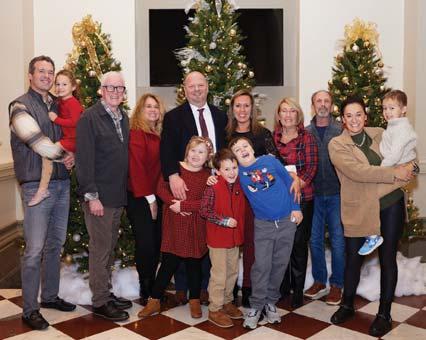
K.M. Davis
Bedouin and Randall Dennison
Dennis W. and Cathy Dern
Laura Doerger-Roberts & Peter Roberts
Mrs. John C. Dupree
Mrs. Diana T. Dwight
Mr. and Mrs. Richard Fencl
Mr. and Mrs. James T. Fitzgerald
Marlena and Walter Frank
Dr. and Mrs. Harry F. Fry
L. Timothy Giglio
Thomas W. Gougeon
Kathy Grote in loving memory of Robert Howes §
Mr. and Mrs. Lawrence Hamby
Ms. Delores Hargrove-Young
Dr. Donald and Laura Harrison
Mr. and Mrs. Brian E. Heekin
Dr. James and Mrs. Susan Herman
Mr. and Mrs. Stephen Hicks
Karlee L. Hilliard §
Mr. and Mrs. Geoffrey Keenan
Mrs. Barbara Kellar in honor of Mr. Lorrence T. Kellar
Holly King
Mr. and Mrs. Richard Kovarsky
Michael and Marilyn Kremzar
Richard and Susan Lauf
Will and Lee Lindner
Adele Lippert
Mrs. Robert Lippert
Elizabeth and Brian Mannion
David L. Martin
Mr. Jonathan Martin
Mandare Foundation
Barbara and Kim McCracken §
Linda and James Miller
James and Margo Minutolo
Ms. Mary Lou Motl
Mr. Arthur Norman and Mrs. Lisa Lennon Norman
The Patel-Curran Family
Poul D. and JoAnne Pedersen
Alice Perlman
David and Jenny Powell
Ellen Rieveschl §
Elizabeth and Karl Ronn §
James and Mary Russell
Dr. E. Don Nelson and Ms. Julia Sawyer-Nelson
Mr. Dennis Schoff and Ms. Nina Sorensen
Mike and Digi Schueler
Brent & Valerie Sheppard
Sue and Glenn Showers §
Rennie and David Siebenhar
Mr. and Mrs. Gerald Skidmore §
Michael and Donnalyn Smith
Brett Stover §
Mr. and Mrs. David R. Valz
Christopher and Nancy Virgulak
Mrs. Ronald F. Walker
Mrs. Paul H. Ward §
Donna A. Welsch
Cathy S. Willis
Andrea K. Wiot
Irene A. Zigoris
Anonymous (4)
ARTIST’S CIRCLE
Gifts of $3,000–$4,999
Mr. and Mrs. Richard N. Adams
Mr. Nicholas Apanius
Mr. and Mrs. Gérard Baillely
Ms. Marianna Bettman
Glenn and Donna Boutilier
Peter and Kate Brown
Dr. Ralph P. Brown
Janet and Bruce Byrnes
Gordon Christenson
Susan and Burton Closson
Lois Cohen §
Peter G. Courlas §
Marjorie Craft
George Deepe and Kris Orsborn
Jim and Elizabeth Dodd
Connie and Buzz Dow
Dr. and Mrs. Stewart B. Dunsker
David and Kari Ellis Fund*
Ann A. Ellison
Hardy and Barbara Eshbaugh
Ms. Amy McDiffett
Yan Fridman
Frank and Tara Gardner
Dr. and Mrs. Ralph A. Giannella
Lesha and Samuel Greengus
Dr. and Mrs. Jack Hahn
Mr. and Mrs. Robert R. Heidenreich
Donald and Susan Henson
Ruth C. Holthaus
In Memory of Benjamin C. Hubbard §
Mr. and Mrs. Bradley G. Hughes
Mr. and Mrs. Michael C. Hughes
Mr. Marshall C. Hunt, Jr.
Karolyn Johnsen
Dr. Richard and Lisa Kagan
Dr. Robert W. Keith and Ms. Kathleen Thornton
Don and Kathy King
Lynn Keniston Klahm
Marie and Sam Kocoshis
Mr. Frank P. Kromer
Mr. Shannon Lawson
Richard and Nancy Layding
Mrs. Jean E. Lemon §
Merlanne Louney
Larry and Mary Geren Lutz
Mr. and Mrs. Donald Marshall
Glen and Lynn Mayfield
Allen-McCarren
Becky Miars
Ms. Sue Miller
Mrs. Patricia Misrach
Mr. and Mrs. David E. Moccia §
George and Sarah Morrison III
David and Beth Muskopf
Anne E. Mulder and Rebecca M. Gibbs
Phyllis Myers and Danny Gray
Mark and Kim Pomeroy
Drs. Marcia Kaplan and Michael Privitera
Mr. Aftab Pureval
Michael and Katherine Rademacher
Sandra Rivers
James Rubenstein and Bernadette Unger
Mr. & Mrs. Peter A. Schmid
Rev. Dr. David V. Schwab
Sandra and David Seiwert
Mr. Rick Sherrer and Dr. Lisa D. Kelly
Elizabeth C. B. Sittenfeld §
Doug and Laura Skidmore
William A. and Jane Smith
Elizabeth A. Stone
Peggy and Steven Story
Mr. and Mrs. J. Dwight Thompson
Mr. and Mrs. Ronald Tinklenberg
Neil Tollas and Janet Moore
Dr. Barbara R. Voelkel
Dr. and Mrs. Galen R. Warren
Jonathan and Janet Weaver
Jim and George Ann Wesner
Jo Ann Wieghaus
In Memory of Bruce R. Smith
Ronna and James Willis
Steve and Katie Wolnitzek
Carol and Don Wuebbling
Mr. and Mrs. Robert L. Zierolf
Anonymous (4)
SYMPHONY CIRCLE
Gifts of $1,500–$2,999
Jeff and Keiko Alexander §
Lisa Allgood
Judy Aronoff and Marshall Ruchman
Dr. Diane S. Babcock §
Beth and Bob Baer
Mrs. Gail Bain
William and Barbara Banks
Glenda and Malcolm Bernstein
David and Elaine Billmire
Neil Bortz
William & Mary Bramlage
Mrs. Jo Ann C. Brown
Ms. Jaqui Brumm
Rachelle Bruno and Stephen Bondurant
Chris and Tom Buchert
Dr. Leanne Budde
Daniel A. Burr
Ms. Barbara Caramanian
Tom Carpenter and Lynne Lancaster
FINANCIAL SUPPORT
74 | 2023–24 SEASON
Board member Larry Hamby and his family at the donor appreciation event Merry and Bright. Credit: Claudia Hershner

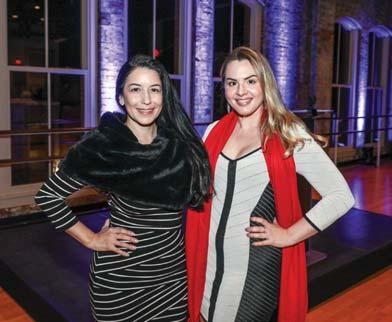
Dr. Alan Chambers
Beverly Kinney and Edward Cloughessy
Carol C. Cole §
Randy K. and Nancy R. Cooper
Andrea D. Costa, Esq.
Mr. and Mrs. Charles E. Curran, III §
Mr. Louis M. Dauner and Ms. Geraldine N. Wu
Mrs. Shirley Duff
Mr. and Mrs. John G. Earls §
Barry and Judy Evans
Gail F. Forberg §
Dr. Charles E. Frank and Ms. Jan Goldstein
Mr. and Mrs. Joseph Fricke
Linda P. Fulton §
Dudley Fulton
Kathleen Gibboney
Mrs. Jay N. Gibbs
Louis and Deborah Ginocchio
Donn Goebel and Cathy McLeod
Dr. and Mrs. Glenn S. Gollobin
Drew Gores and George Warrington
Jim and Jann Greenberg
Bill and Christy Griesser
John and Elizabeth Grover
Esther B. Grubbs §
Mr. and Mrs. Byron Gustin
Ham and Ellie Hamilton
Mrs. Jackie Havenstein
Mr. Tom Helmick
Mr. Fred Heyse
Melissa Huber
Mr. Bradley Hunkler
Heidi Jark and Steve Kenat
Linda Busken and Andrew M. Jergens §
Barbara M. Johnson
Mr. and Mrs. Paul H. Johnson
Ms. Sylvia Johnson
Holly H. Keeler
Arleene Keller
Mr. and Mrs. Woodrow Keown, Jr.
John and Molly Kerman
Bill and Penny Kincaid
In Memory of Jeff Knoop
Juri Kolts
Carol Louise Kruse
Everett and Barbara Landen
Evelyn and Fred Lang
Charles and Jean Lauterbach
Mary Mc and Kevin Lawson
Mr. Peter F. Levin §
Elizabeth Lilly*
Dr. and Mrs. Lynn Y. Lin
Mr. and Mrs. Clement H. Luken, Jr.
Edmund D. Lyon
Mark Mandell-Brown, MD and Ann Hanson
Mr. Gerron McKnight
John and Roberta Michelman
Mr. and Mrs. David A. Millett
Terence G. Milligan
Susan E. Noelcke
Nan L. Oscherwitz
Rick Pescovitz and Kelly Mahan
Sandy Pike §
James W. Rauth §
Beverly and Dan Reigle
Stephen and Betty Robinson
Marianne Rowe §
Nancy Ruchhoft
Mr. Joseph A. Schilling
Frederick R. Schneider
James P. Schubert
Stephanie A. Smith
Albert and Liza Smitherman
Bill and Lee Steenken
Mrs. Donald C. Stouffer
Mr. and Mrs. Richard Stradling, Jr.
Susan and John Tew
Janet Todd
Mr. William Trach
Barbie Wagner
Michael L. Walton, Esq
Ted and Mary Ann Weiss
David F. and Sara K. Weston Fund
Virginia Wilhelm
Rev. Anne Warrington Wilson
Robert and Judy Wilson
Jeff Yang
David and Sharon Youmans
Ms. Nancy Zimpher
Anonymous (7)
CONCERTO CLUB
Gifts of $500–$1,499
Hiro Adachi
Christine O. Adams
Romola N. Allen §
In memory of Carol Allgood & Ester Sievers
Mr. Thomas Alloy & Dr. Evaline Alessandrini
Paul and Dolores Anderson
Mr. and Mrs. Frank Andress
Dr. Victor and Dolores Angel
Nancy J. Apfel
Lynne & Keith Apple, Honoring our Family
Ms. Laura E. Atkinson
Mr. David H. Axt and Ms. Susan L. Wilkinson
Nate and Greta Bachhuber
Mrs. Mary M. Baer
Todd and Ann Bailey
Jerry and Martha Bain
Mr. and Mrs. Carroll R. Baker
Jack and Diane Baldwin
Peggy Barrett §
Mrs. Polly M. Bassett
Ms. Glenda Bates
Michael and Amy Battoclette
Drs. Carol and Leslie Benet
Fred Berger
Dr. Allen W. Bernard
Barbara and Milton Berner
Dr. David and Cheryl Bernstein
Ms. Henryka Bialkowska-Nagy
Sharon Ann Kerns and Mike Birck
Michael Bland
Milt and Berdie Blersch
Randal and Peter Bloch
Dr. and Mrs. Jeffrey Bloomer
Ms. Sandra Bolek
Ron and Betty Bollinger
Clay and Emily Bond
Mr. and Mrs. Kenneth Borisch
Dr. and Mrs. Kevin Bove
Dr. Carol Brandon
Marilyn and John Braun
Briggs Creative Services, LLC
Robert and Joan Broersma
Marian H. Brown
Jacklyn and Gary Bryson
Bob and Angela Buechner
Jack and Marti Butz
John Byrd
Catherine Calko
Ms. Deborah Campbell §
Mr. and Mrs. Christopher Canarie
Mr. and Mrs. Thomas Carothers
Susan L. Carson
Dr. Julia H. Carter
Mike and Shirley Chaney
Catharine W. Chapman §
Ichun Chiao
Dee and Frank Cianciolo Fund*
James Civille
James Clasper and Cheryl Albrecht
Mr. Robert Cohen and Ms. Amy J. Katz
Dr. George I. Colombel
Fred W. Colucci
Mr. and Mrs. Philip K. Cone
Marilyn Cones
Dr. Margaret Conradi
Thomas and Barbara Conroy
Janet Conway
Jack and Janice Cook §
Robin Cotton and Cindi Fitton
Dennis and Pat Coyne
Martha Crafts
Dr. James Creech
Tim and Katie Crowley
Susan and John Cummings
Adrian and Takiyah Cunningham
Jacqueline Cutshall
Mr. and Mrs. Henry F. Dabek, Jr.
Mr. Joseph and Mrs. Lori Dattilo
Mr. and Mrs. Jerry E. Davis
Loren and Polly DeFilippo
Stephen and Cynthia DeHoff
Rozelia Park and Christopher Dendy
Robert B. Dick, Ph.D.
Ms. Rhonda Dickerscheid
Jean and Rick Donaldson
George Dostie
Mrs. John Doviak
David and Kelley Downing
Meredith and Chuck Downton
Ms. Andrea Dubroff
Tom and Leslie Ducey
Tom and Dale Due
David and Linda Dugan
Amy Dunlea and Lois Mannon
Mr. Corwin R. Dunn
Michael D. and Carolyn Camillo Eagen
Mr. Daniel Epstein
Barbara Esposito-Ilacqua
Mr. Edward Ettin
Sally Eversole
Ms. Kate Farinacci
Dr. and Mrs. William J. Faulkner
Ms. Jean Feinberg
Ms. Barbara A. Feldmann
Richard and Elizabeth Findlay
Ilya Finkelshteyn and Evin Blomberg
Dr. and Mrs. Thomas Fischer
Anne and Alan Fleischer
Ms. Nancy B. Forbriger
Janice and Dr. Tom Forte
Mr. and Ms. Bernard Foster
Susan L. Fremont
Mr. Gregrick A. Frey
In memory of Eugene and Cavell Frey
Lynne Friedlander
Michael and Katherine Frisco
Mr. and Mrs. James Fryman
Marjorie Fryxell
Ms. Bianca Gallagher
Christophe Galopin
Melanie Garner and Michael Berry
Ms. Jane Garvey
Ms. Christina Gearhart
Drs. Michael and Janelle J. Gelfand
Mr. Henry Genther
Dr. and Mrs. Freidoon Ghazi
Ms. Kathryn Gibbons
David J. Gilner
Mr. and Mrs. James Gingrich
Dr. Jerome Glinka and Ms. Kathleen Blieszner
Dr. and Mrs. Charles J. Glueck
Dan Goetz
Dr. and Mrs. Richard Goetz
Mr. Ken Goldhoff
Mr. and Mrs. Jim Goldschmidt
Ms. Arlene Golembiewski
Robert and Cynthia Gray
Carl and Joyce Greber
Mary Grooms
Dr. Anthony and Ann Guanciale
Janet C. Haartz and Kenneth V. Smith
Alison and Charles Haas
Ms. Sarah Habib
Mary and Phil Hagner
Peter Hames
Walter and Karen Hand
In memory of Dr. Stuart Handwerger
Catherine K. Hart
Mariana Belvedere and Samer Hasan
Mr. John A. Headley
Amy and Dennis Healy
Kenneth and Rachel Heberling
Mrs. Betty H. Heldman §
Howard D. and Mary W. Helms
Mrs. E. J. Hengelbrok, Jr.
Michelle and Don Hershey
Janet & Craig Higgins
Mr. and Mrs. Russell W. Hill
Mr. and Mrs. William A. Hillebrand
Kyle and Robert Hodgkins
Benjamin & Naomi Hoffman
Ms. Leslie M. Hoggatt
Tim and Connie Holmen
Richard and Marcia Holmes
Bob and Dolly Holzwarth
Stanley A. Hooker, III
Mr. Joe Hoskins
Sean and Katie Hubbard
Karen and David Huelsman
Mrs. Carol H. Huether
Dr. G. Edward & Sarah Hughes
Ms. Idit Isaacsohn
Dr. Maralyn M. Itzkowitz
Mrs. Charles H. Jackson, Jr.
Mr. and Mrs. Fred Jebens
Marcia Jelus
David & Penny Jester
Mrs. Marilyn P. Johnston
In Honor of Lois Jolson
Elizabeth A. Jones
Mrs. Martha Jones
Scott and Patricia Joseph
Jay and Shirley Joyce
Mr. and Mrs. Robert Judd
Ms. Mary Judge
Dr. and Mrs. Richard Kerstine
Mr. and Mrs. Dave Kitzmiller
Jack & Sharon Knapp
Pamela Koester-Hackman
Carol and Scott Kosarko
Mr. and Mrs. Robert H. Kraimer
Mr. and Mrs. Jonathan Kregor
FINANCIAL SUPPORT
John Morris Russell, Rafael Moras and Capathia Jenkins meet with guests after a Holiday Pops performance. Credit: CSO Staff
Fanfare Magazine | 75
Board member Dr. Maria Espinola pictured with guest at Symphony Circle Cast Party on Nov. 19. Credit: Mark Lyons
Mr. and Mrs. Bruce A. Krone
Kathleen B. and Michael C. Krug Fund*
Pat and Randy Krumm §
Mark & Elisabeth Kuhlman
Mrs. John H. Kuhn §
Jo Ann and George Kurz
Pinky Laffoon & Family
Patricia Lambeck
Asher Lanier
Karen Larsen
Ms. Sally L. Larson
Mrs. Julie Laskey
Joe Law and Phil Wise
Mrs. Judith A. Leege in memory of Philip B. Leege
Betsy Leigh and David Holliday
Dr. Carol P. Leslie
Mr. and Mrs. Lance A. Lewis
Mrs. Maxine F. Lewis
Mr. Arthur Lindsay
Paula and Nick Link
Mr. Ajene Lomax
Steven Kent Loveless
Luke and Nita Lovell
David and Katja Lundgren
Mrs. Mary Reed Lyon
Marshall and Nancy Macks
Mr. and Mrs. Julian A. Magnus
Jenea Malarik
Ms. Cheryl Manning
Andrew and Jean Martin
Mr. and Mrs. Warren L. Mason
Mr. and Mrs. Dean Matz
Ms. Mary Jane Mayer
Dr. Janet P. McDaniel
Tim and Trish McDonald
Mark McKillip and Amira Beer
Stephanie McNeill
Charles and JoAnn Mead
Ms. Nancy Menne
Ms. Mary Ann Meyer
Michael V. Middleton
Laura Milburn
Sonia R. Milrod
Dr. Stanley R. Milstein §
Ms. Laura Mitchell
Mr. Steven Monder
Eileen W. and James R. Moon
Regeana and Al Morgan
Mr. William J. Morgan
Alan Flaherty and Patti Myers §
Mr. and Mrs. Norman Neal
Mr. Scott Nelson and Dr. Susan Kindel
Mr. Ted Nelson and Ms. Ixi Chen
Ms. Helen Neumann
Mr. and Mrs. Christopher Newcomer
Amy Paul and Jerry Newfarmer
Mrs. Alfred K. Nippert
Jane Oberschmidt §
Ms. Sylvia Osterday
Phyllis Overmann
John A. Pape
The Pavelka Family
Carol and Jim Pearce
Ann and Marty Pinales
Dr. Robert and Jackie Prichard
Mrs. Stewart Proctor
Dr. Aik Khai Pung
Marjorie and Louis Rauh
Ms. Mary Redington
Dr. and Mrs. Robert Reed
Dr. Robert Rhoad and Kitsa Tassian Rhoad
Stephanie Richardson
Mr. David Robertson
Laurie and Dan Roche
Mr. and Mrs. Ian Rodway
Dr. Anna Roetker
Ms. Jeanne C. Rolfes
Dr. and Mrs. Gary Roselle
Amy and John Rosenberg
Ellen and Louis Ross
Mr. and Mrs. G. Roger Ross
Dr. Deborah K. Rufner
J. Gregory and Judith B. Rust
Elizabeth and Kazuya
David and Judy Savage
Mr. Christian J. Schaefer
Cindy Scheets
Ms. Carol Schleker
Mr. and Mrs. Patrick Schleker
Jane and Wayne Schleutker
Dr. and Mrs. Michael Schmerler
Mrs. Donna Schnicke
George Palmer Schober
Tim and Jeannie Schoonover
Glenda C. Schorr Fund*
Carol J. Schroeder §
Mary D. Schweitzer
Dr. Joseph Segal and Ms. Debbie Friedman
Elaine Semancik
Drs. Mick and Nancy Shaughnessy
Jerry and Donna Shell
The Shepherd Chemical Company
Alfred and Carol Shikany
Jacqueline M. Mack and Dr. Edward B. Silberstein
Ms. Joycee Simendinger
Kristin and David Skidmore
In Honor of Kenneth Skirtz
Ms. Martha Slager
Susan and David Smith
Ms. Margaret Smith
Mark M. Smith (In memory of Terri C. Smith)
Stephen and Lyle Smith
Phillip and Karen Sparkes
Paula Spitzmiller
In Honor of Melody Sawyer Richardson
Marian P. Stapleton
Mr. and Mrs. Timothy Stautberg
Ms. Ruth M. Stechschulte
Mark and Anne Stepaniak
Susan M. and Joseph Eric Stevens
Mr. Jason V. Stitt
Stephanie and Joseph Stitt
Nancy and Gary Strassel
Ms. Susan R. Strick
Mr. George Stricker, Jr.
Mr. Mark Stroud
Patricia Strunk §
Kathryn Sullivan
Dr. Alan and Shelley Tarshis
Maureen Taylor
Mr. Fred Tegarden
Carlos and Roberta Teran
Rich and Nancy Tereba
Linda and Nate Tetrick
Joyce and Howard Thompson
Mr. Stuart Tobin
Marcia and Bob Togneri
Torey and Tom Torre
Mrs. Esthela Urriquia
Dr. Ilse M. van der Bent
Mr. D. R. Van Lokeren
Dr. Judith Vermillion
Jim and Rachel Votaw §
Ms. Barbara Wagner
Mr. and Mrs. James L. Wainscott
Jane A. Walker
Sarella Walton
Herman & Margaret Wasserman Music Fund*
Mrs. Louise Watts
Maryhelen West
Ms. Bonnie White
Mr. Donald White
Ms. Elizabeth White
Ms. Diana Willen
Mr. Dean Windgassen and Ms. Susan Stanton Windgassen §
Don and Karen Wolnik
Rebecca Seeman and David Wood
Mr. and Mrs. Robert Wylly III
Mr. John M. Yacher
Mrs. Darleen Young
Judy and Martin Young
Mr. David Youngblood and Ms. Ellen Rosenman
Cheryl Zalzal
Dr. and Mrs. Daryl Zeigler
Ms. Joan Zellner
Moritz and Barbara Ziegler
Mr. Richard K. Zinicola and Ms. Linda R. Holthaus
Anonymous (23)
List as of December 31, 2023
GIFTS IN-KIND
Mr. Michael Culligan
Graeter’s Ice Cream
Jones Day
The Voice of Your Customer
List as of January 4, 2024
* Denotes a fund of The Greater Cincinnati Foundation.
§ Denotes members of The Thomas Schippers Legacy Society. Individuals who have made a planned gift to the Cincinnati Symphony Orchestra and Pops Orchestra are eligible for membership in the Society. For more information, please contact Kate Farinacci at 513.744.3202.


FINANCIAL SUPPORT
76 | 2023–24 SEASON
THE THOMAS SCHIPPERS LEGACY SOCIETY

Mr. & Mrs. James R. Adams
Jeff & Keiko Alexander
Mrs. Robert H. Allen
Dr. Toni Alterman
Paul R. Anderson
Carole J. Arend
Donald C. Auberger, Jr.
Thomas Schippers was Music Director from 1970 to 1977. He left not only wonderful musical memories, but also a financial legacy with a personal bequest to the Orchestra. The Thomas Schippers Legacy Society recognizes those who contribute to the Orchestra with a planned gift. We thank these members for their foresight and generosity. For more information on leaving your own legacy, contact Kate Farinacci at 513.744.3202.
Dr. Diane Schwemlein Babcock
Henrietta Barlag
Peggy Barrett
Jane* & Ed Bavaria
David & Elaine Billmire
Walter Blair
Lucille* & Dutro Blocksom
Rosemary & Frank Bloom*
Dr. John & Suzanne Bossert
Dr. Mollie H. Bowers-Hollon
Ronald Bozicevich
Thomas A. Braun, III
Joseph Brinkmeyer
Mr. & Mrs. Frederick Bryan, III
Harold & Dorothy Byers
Deborah Campbell & Eunice M. Wolf
Myra Chabut*
Catharine W. Chapman
Michael L. Cioffi & Rachael Rowe
Mrs. Jackson L. Clagett III
Lois & Phil* Cohen
Leland M.* & Carol C. Cole
Grace A. Cook
Jack & Janice Cook
Mr. & Mrs. Charles Cordes
Andrea Costa
Peter G. Courlas & Nick Tsimaras*
Mr. & Mrs. Charles E. Curran III
Amy & Scott Darrah, Meredith & Will Darrah, & children
Caroline H. Davidson
Harrison R.T. Davis
Ms. Kelly M. Dehan
Amy & Trey Devey
Robert W. Dorsey
Jon & Susan Doucleff
Ms. Judith A. Doyle
Mr. & Mrs. John Earls
Barry & Judy Evans
Linda & Harry Fath
Alan Flaherty
Mrs. Richard A. Forberg*
Ashley & Barbara Ford
Guy & Marilyn Frederick
Rich Freshwater & Family
Susan Friedlander*
Mr. Nicholas L. Fry
Linda P. Fulton
H. Jane Gavin
Edward J. & Barbara C.* Givens
Kenneth A. Goode
Clifford J. Goosmann & Andrea M. Wilson
Mrs. Madeleine H. Gordon
J. Frederick & Cynthia Gossman
Kathy Grote
Esther B. Grubbs, Marci Bein & Mindi Hamby
William Hackman
Vincent C. Hand & Ann E. Hagerman
Tom & Jan Hardy
William L. Harmon
Mrs. Morton L. Harshman*
Mary J. Healy
Frank G. Heitker
Anne P. Heldman
Betty & John* Heldman
Ms. Roberta Hermesch*
Karlee L. Hilliard
Michael H. Hirsch
Mr. & Mrs. Joseph W. Hirschhorn
Daniel J. Hoffheimer
Kenneth L. Holford
Mr. George R. Hood
Mr. & Mrs. Terence L. Horan
Mrs. Benjamin C. Hubbard
Susan & Tom Hughes
Carolyn R. Hunt*
Dr. William Hurford & Dr. Lesley Gilbertson
Mr. & Mrs. Paul Isaacs
Julia M. F. B. Jackson
Michael & Kathleen Janson
Andrew MacAoidh Jergens
Jean C. Jett
Margaret H. Jung
Mace C. Justice
Karen Kapella
Dr. & Mrs.* Steven Katkin
Rachel Kirley & Joseph Jaquette
Carolyn Koehl
Marvin Kolodzik & Linda Gallaher
Carol & Scott Kosarko
Michael & Marilyn Kremzar
Randolph & Patricia Krumm
Theresa M. Kuhn
Warren & Patricia Lambeck
Peter E. Landgren & Judith Schonbach Landgren
Owen & Cici Lee
Steve Lee
M. Drue Lehmann
Mrs. Jean E. Lemon
Mr. Peter F. Levin
George & Barbara Lott
Janice* & Gary Lubin
Mr.* & Mrs. Ronald Lyons
Marilyn J. Maag
Margot Marples
David L. Martin
Allen* & Judy Martin
David Mason
Mrs. Barbara Witte McCracken
Laura Kimble McLellan
Dr. Stanley R. Milstein
Mrs. William K. Minor
Mr. & Mrs. D. E. Moccia
Kristin & Stephen Mullin
Christopher & Susan Muth
Patti Myers
Susan & Kenneth Newmark
Dr. & Mrs. Theodore Nicholas
Jane Oberschmidt
Marja-Liisa Ogden
Julie & Dick* Okenfuss
Jack & Marilyn Osborn*
Dr. & Mrs. Richard E. Park, MD
Mr. & Mrs. Charles Pease
Poul D. & JoAnne Pedersen
Sandy & Larry* Pike
Mrs. Harold F. Poe
Anne M. Pohl
Irene & Daniel Randolph
James W. Rauth
Barbara S. Reckseit
Melody Sawyer Richardson
Ellen Rieveschl
Elizabeth & Karl Ronn
Moe & Jack Rouse
Marianne Rowe
Ann & Harry Santen
Rosemary & Mark Schlachter
Carol J. Schroeder
Mrs. William R. Seaman
Dr. Brian Sebastian
Mrs. Mildred J. Selonick*
Mrs. Robert B. Shott
Sue & Glenn Showers
Irwin & Melinda Simon
Betsy & Paul* Sittenfeld
Sarah Garrison Skidmore
Adrienne A. Smith
David & Sonja* Snyder
Marie Speziale
Mr. & Mrs. Christopher L. Sprenkle
Barry & Sharlyn Stare
Cynthia Starr
Bill & Lee Steenken
Tom & Dee Stegman
Barry Steinberg
Nancy M. Steman
John & Helen Stevenson
Mary* & Bob Stewart
Brett Stover
Dr. Robert & Jill Strub
Patricia M. Strunk
Ralph & Brenda* Taylor
Conrad F. Thiede
Minda F. Thompson
Carrie & Peter Throm
Dr. & Mrs. Thomas Todd
Nydia Tranter
Dick & Jane Tuten
Thomas Vanden Eynden & Judith Beiting
Mr. & Mrs. Robert Varley
Mr. & Mrs. James K. Votaw
Mr. & Mrs.* Randolph L. Wadsworth Jr.
Jack K. & Mary V. Wagner*
Nancy C. Wagner
Patricia M. Wagner
Mr.* & Mrs. Paul Ward
Jo Anne & Fred Warren
Mr. Scott Weiss & Dr. Charla Weiss
Anne M. Werner
Gary & Diane West
Charles A. Wilkinson
Ms. Diana Willen
Susan Stanton Windgassen
Mrs. Joan R. Wood
Alison & Jim Zimmerman
* Deceased
New Schippers members are in bold

FINANCIAL SUPPORT
Fanfare Magazine | 77




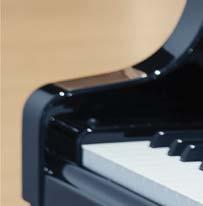




















Donate to the CSO by buying yourself a new piano.* STRIVE FOR EXCELLENCE
over 120 years, Willis Music and Cincinnati Symphony Orchestra Have been serving the greater Cincinnati area with music, culture, and music education. STEINWAY.CINCINNATI.COM Willis Music Kenwood Galleria 8118 Montgomery Road Cincinnati, Oh 45236 (859) 396-4485 pianos@willismusic.com
Music will give a donation to the Cincinnati Symphony Orchestra for every piano that a Cincinnati Symphony Orchestra patron purchases.
For
*Willis
CSO Copland’s Appalachian Spring: Mar. 8–10
Cincinnati Business Courier
Cincinnati Financial Corporation
Shepherd Chemical Company
Seasons Retirement Home
Pops The Doo Wop Project: Mar. 15–17
Anderson Senior Center
Berkeley Square
Maple Knoll Village
Provident Travel
Seasons Retirement Community
Mr. Stephen Stone
CSO Heroic Strauss & Melodic Mozart: Mar. 23–24
Seasons Retirement Community
CSO Tchaikovsky & Nielsen: Mar. 29–30
Barrington Of Oakley
Highlands High School
Ludlow High School
Maple Knoll Village
Otterbein Retirement Community
The Kenwood by Senior Star
The Knolls of Oxford
Twin Lakes at Montgomery
Pops The Dream of America: Apr. 12–14
Bob Rogers Travel
Kelly M. Dehan and Rick J. Staudigel
Susan Kight
Seasons Retirement Community
ENJOY THE MUSIC, TOGETHER!
• Groups of 10+ save 20% on most concerts and seniors and students save even more!
• Curate your own event with a private reception, guided tour or meet and greet— the possibilities are endless.
Contact CSO Group Sales: 513.864.0196 or groupsales@cincinnatisymphony.org cincinnatisymphony.org/groups
WELCOME TO MAR–APR GROUPS! (as of January 17, 2024) Fanfare Magazine | 79
ADMINISTRATION
SHARED SERVICES & SUBSIDIARIES.
The Cincinnati Symphony Orchestra’s business model is unique within the orchestral industry because it provides administrative services for other nonprofits and operates two subsidiary companies—Music & Event Management, Inc. and EVT Management LLC. With the consolidation of resources and expertise, sharing administrative services allows for all organizations within the model to thrive. Under this arrangement, the CSO produces hundreds of events in the Greater Cincinnati and Dayton regions and employs hundreds of people annually.
SENIOR MANAGEMENT TEAM
Jonathan Martin
President & CEO
Harold Brown
The Honorable Nathaniel R. Jones Chief Diversity & Inclusion Officer
John Clapp
Vice President of Orchestra & Production
Rich Freshwater
Vice President & Chief Financial Officer
Michael Frisco
Vice President of Marketing
Felecia Tchen Kanney Vice President of Communications & Digital Media
Mary McFadden Lawson Chief Philanthropy Officer
Robert McGrath
Chief Operating Officer
Anthony Paggett
Acting Vice President of Artistic Planning
Kyle Wynk-Sivashankar Vice President of Human Resources
EXECUTIVE OFFICE
Jonathan Martin
President & CEO
Laura Ruple
Executive Assistant to the President & CEO
Robert McGrath
Chief Operating Officer
Shannon Faith
Assistant to the Chief Operating Officer
ARTISTIC PLANNING
Anthony Paggett
Acting Vice President of Artistic Planning
Grace Kim
Artistic Planning Intern
Theresa Lansberry
Artist Liaison
Shuta Maeno
Assistant to the Music Director & Artistic Planning
Sam Strater
Senior Advisor for Cincinnati Pops Planning
COMMUNICATIONS & DIGITAL MEDIA
Felecia Tchen Kanney
Vice President of Communications & Digital Media
Charlie Balcom
Social Media Manager
KC Commander
Director of Digital Content & Innovation
Maria Cordes
Digital Media Coordinator
Kaitlyn Driesen
Digital Production Manager
Kit Gladieux
Communications Intern
Lauren Hall
Digital Content Intern
Tyler Secor Director of Publications & Content Development
Lee Snow
Digital Content Technology Manager
COMMUNITY ENGAGEMENT, DIVERSITY, EQUITY & INCLUSION
Harold Brown
The Honorable Nathaniel R. Jones Chief Diversity & Inclusion Officer
Key Crooms Director of Community Engagement
Vee Gibson Classical Roots Coordinator
Pamela Jayne
Volunteer & Community Engagement Manager
FINANCE, IT & DATA SERVICES
Rich Freshwater
Vice President & Chief Financial Officer
Deborah Benjamin
Accounting Clerk
Julian Cann
Accounting Clerk
Kathleen Curry
Data Entry Clerk
Elizabeth Engwall
Accounting Manager
Matt Grady
Accounting Manager
Sharon Grayton
Data Services Manager
Marijane Klug
Accounting Manager
Shannon May
Accounting Clerk
Kristina Pfeiffer
Director of Finance
Elizabeth Salmons
Accounting Clerk
Judy Simpson
Director of Finance
Tara Williams
Data Services Manager
HUMAN RESOURCES & PAYROLL
Kyle Wynk-Sivashankar Vice President of Human Resources
Megan Inderbitzin-Tsai Director of Payroll Services
Natalia Lerzundi Human Resources & Payroll Coordinator
Jenny Ryan Human Resources Manager
LEARNING
Carol Dary Dunevant Director of Learning
Hollie Greenwood Learning Coordinator
Kyle Lamb Learning Programs Manager
Maria Serrano
CCM Arts Administration Graduate Assistant
Mason Stewart Education Programs Intern
MARKETING
Michael Frisco
Vice President of Marketing
Leon Barton Website Manager
Jon Dellinger Copywriter & Marketing Manager
Carmen Granger Subscriptions & Loyalty Marketing Manager
Elaine Hudson Assistant Box Office Manager
Hannah Kaiser Assistant Box Office Manager
Abigail Karr Audience Engagement Manager
Stephanie Lazorchak Graphic Designer
Michelle Lewandowski Director of Marketing
Tina Marshall
Director of Ticketing & Audience Services
Wendy Marshall
Group Sales Manager
Madelyn McArthur Marketing Intern
Amber Ostaszewski Director of Audience Engagement
Alexis Shambley
Marketing & Audience Insight Coordinator
Patron Services
Representatives
Ellison Blair, Lead
Alison de la Paz, Lead
Drew Dolan, Lead
Lucas Maurer, Lead
Erik Nordstrom, Lead
Hannah Blanchette
Craig Doolin
Mary Duplantier
Ebony Jackson
Talor Marren
Marian Mayen
Gregory Patterson
PHILANTHROPY
Mary McFadden Lawson
Chief Philanthropy Officer
Laura Aldana
Philanthropy Intern
Sean Baker
Director of Institutional Giving
Bhavya Nayna Channan
Corporate Giving Manager
Ashley Coffey
Foundation & Grants Manager
Kate Farinacci
Director of Special Campaigns & Legacy Giving
Penny Hamilton
Philanthropy Assistant
Catherine Hann
Assistant Director of Individual Giving
Rachel Hellebusch
Institutional Giving Coordinator
Leslie Hoggatt
Director of Individual Giving & Donor Services
Quinton Jefferson
Research & Grants Administrator
D’Anté McNeal
Special Projects Coordinator
Jenna Montes
Individual Giving Manager
Emma Steward
Donor Engagement Coordinator
PRODUCTION
John Clapp
Vice President of Orchestra & Production
Laura Bordner Adams
Director of Operations
Naomi Bennett
Orchestra Personnel & Operations Manager
Carlos Javier
Production Manager
Alex Magg
Production Manager
Isabella Prater
Production Intern
Brenda Tullos
Director of Orchestra Personnel
80 | 2023–24 SEASON
Welcome
WE BELIEVE MUSIC LIVES WITHIN US ALL
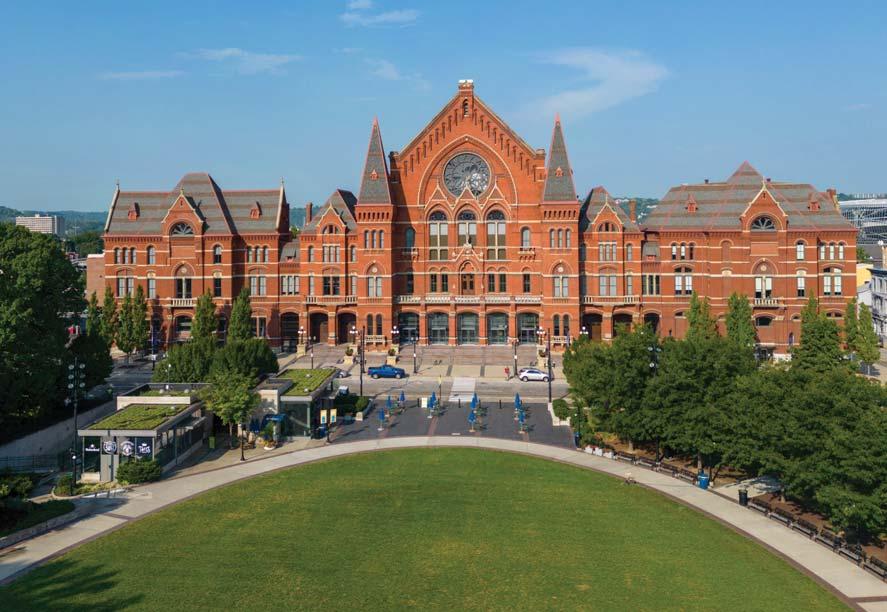
regardless of who we are or where we come from. We believe that music is a pathway to igniting our passions, discovering what moves us, deepening our curiosity and connecting us to our world and to each other.
DIVERSITY, EQUITY AND INCLUSION
The Cincinnati Symphony Orchestra and Cincinnati Pops Orchestra’s commitment to diversity, equity and inclusion is catalyzed by systemic injustice and inequality perpetuated by individuals and institutions. Our mission is to seek and share inspiration, and at its essence, the CSO exists to serve our community. Our entire community. Reflecting our community and the world around at every level—on stage, behind-thescenes, and in neighborhoods throughout the region—is essential to the CSO’s present and future and makes us a strong ensemble and institution.
LAND ACKNOWLEDGEMENT
The Cincinnati Symphony Orchestra and Cincinnati Pops acknowledges that Cincinnati Music Hall occupies land that has been the traditional land of the Hopewell, Adena, Myaamia (Miami), Shawandasse Tula (Shawanwaki/Shawnee), and Wahzhazhe Manzhan (Osage) peoples, who have continuously lived upon this land since time immemorial. We acknowledge that this land was unceded and stolen via methods of genocide and ethnic cleansing by colonizers.
We honor past, present and future Indigenous peoples.

































































 Jonathan Martin
Jonathan Martin




 Louis Langrée works with composer-pianist Courtney Bryan in rehearsal for the world premiere of her piano concerto, House of Pianos, May 2023. Credit: Charlie Balcom
Louis Langrée leads the CSO in Mozart’s Violin Concerto No. 4, with Stefani Matsuo as soloist.
Louis Langrée works with composer-pianist Courtney Bryan in rehearsal for the world premiere of her piano concerto, House of Pianos, May 2023. Credit: Charlie Balcom
Louis Langrée leads the CSO in Mozart’s Violin Concerto No. 4, with Stefani Matsuo as soloist.




































 The concertmaster also prepares and leads the Orchestra for each Pops concert. Below, Stefani Matsuo and Felicity James sit side by side at the October 2023 Pops concert. Credit: Charlie Balcom
The concertmaster also prepares and leads the Orchestra for each Pops concert. Below, Stefani Matsuo and Felicity James sit side by side at the October 2023 Pops concert. Credit: Charlie Balcom

 SPOTLIGHT: Being Concertmaster
SPOTLIGHT: Being Concertmaster

 SPOTLIGHT: Being Concertmaster
SPOTLIGHT: Being Concertmaster


















 From left, conductor Stephanie Childress (©Karolina Heller), conductor François López-Cobos and Lorelei Ensemble
From left, conductor Stephanie Childress (©Karolina Heller), conductor François López-Cobos and Lorelei Ensemble


 Louise Dieterle Nippert & Louis Nippert Chair
Louise Dieterle Nippert & Louis Nippert Chair


 ©Chris Lee 2021
©Chris Lee 2021















































 The Charles H. Dater Foundation
The Unnewehr Foundation
The Charles H. Dater Foundation
The Unnewehr Foundation







































 Aaron Copland
Aaron Copland


























 Richard Strauss
Richard Strauss
















































